Forums
- Forums
- Axis And Allies Forum
- General Discussion
- Aviation News
Aviation News
Post a reply
- Go to Next topic
- Go to Welcome
- Go to Introduce Yourself
- Go to General Discussion
- Go to Screenshots, Images and Videos
- Go to Off topic
- Go to Works in Progress
- Go to Skinning Tips / Tutorials
- Go to Skin Requests
- Go to IJAAF Library
- Go to Luftwaffe Library
- Go to RAF Library
- Go to USAAF / USN Library
- Go to Misc Library
- Go to The Ops Room
- Go to Made in Germany
- Go to Campaigns and Missions
- Go to Works in Progress
- Go to Juri's Air-Raid Shelter
- Go to Campaigns and Missions
- Go to Works in Progress
- Go to Skinpacks
- Go to External Projects Discussion
- Go to Books & Resources
-
 Main AdminA U.S. Air Force F-15C Eagle assigned to the 67th Fighter Squadron receives liquid oxygen servicing at Kadena Air Base, Japan, Nov. 30, 2022. Since 1979, the F-15 Eagle has ensured air superiority for the U.S. and its allies across the Indo-Pacific Command area of responsibility. (U.S. Air Force photo by Senior Airman Jessi Roth)
Main AdminA U.S. Air Force F-15C Eagle assigned to the 67th Fighter Squadron receives liquid oxygen servicing at Kadena Air Base, Japan, Nov. 30, 2022. Since 1979, the F-15 Eagle has ensured air superiority for the U.S. and its allies across the Indo-Pacific Command area of responsibility. (U.S. Air Force photo by Senior Airman Jessi Roth)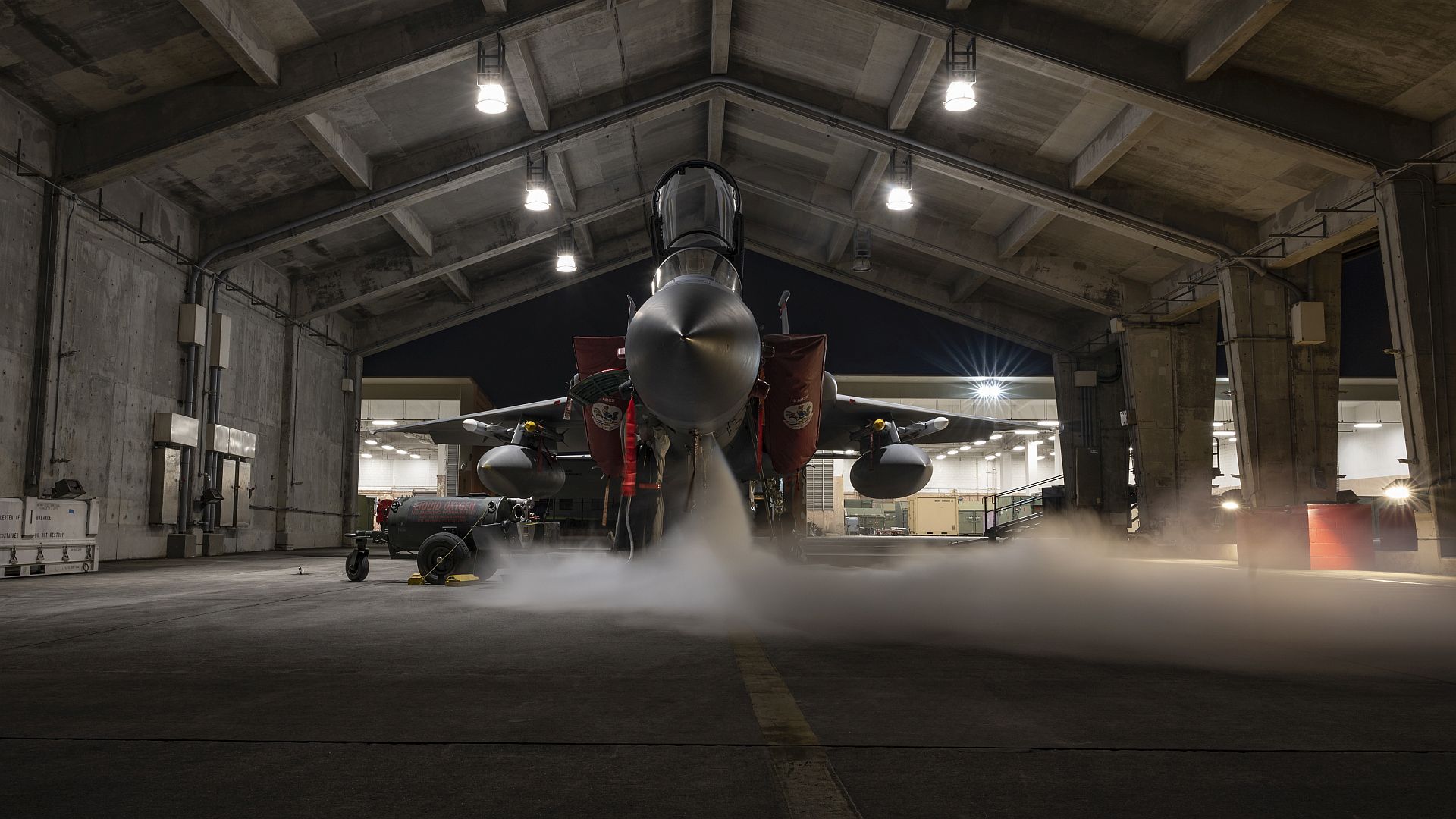
A Japan Air Self-Defense Force C-130H Hercules assigned to the 401st Tactical Airlift Squadron arrives at Andersen Air Force Base, Guam, Nov. 30, 2022, during Operation Christmas Drop 2022. Since 2015, OCD envolved into a multinational event supported in previous iterations by forces from the United States, Japan Air Self-Defense Force, Royal Australian Air Force, Royal New Zealand Air Force and Republic of Korea Air Force. (U.S. Air Force photo by Yasuo Osakabe)
A U.S. Air Force F-15C Eagle assigned to the 18th Wing breaks away from a KC-135 Stratotanker assigned to the 909th Air Refueling Squadron after conducting aerial refueling over the Pacific Ocean, Nov. 30, 2022. The KC-135 delivers global aerial refueling capability to support joint and coalition aircraft throughout the Indo-Pacific region. (U.S. Air Force photo by Airman 1st Class Tylir Meyer)
A U.S. Air Force F-22A Raptor assigned to the 3rd Wing receives fuel from a KC-135 Stratotanker assigned to the 909th Air Refueling Squadron over the Pacific Ocean, Nov. 30, 2022. Kadena’s ability to rapidly deploy a variety of aircraft demonstrates its commitment to the safety and security of the Indo-Pacific. (U.S. Air Force photo by Airman 1st Class Tylir Meyer)
Two Israeli air force F-16 Fighting Falcons gather in formation behind a U.S. Air Force KC-135 Stratotanker assigned to the 340th Expeditionary Air Refueling Squadron, as part of a bilateral exercise in the U.S. Central Command area of responsibility, Nov. 30, 2022. The exercise demonstrated fighter aircraft integration and escort as well as refueling operations as part of the first of several exercises to maintain the ironclad commitment and bilateral aerial capability between the U.S. and Israeli air forces. (U.S. Air Force photo by Staff Sgt. Kirby Turbak)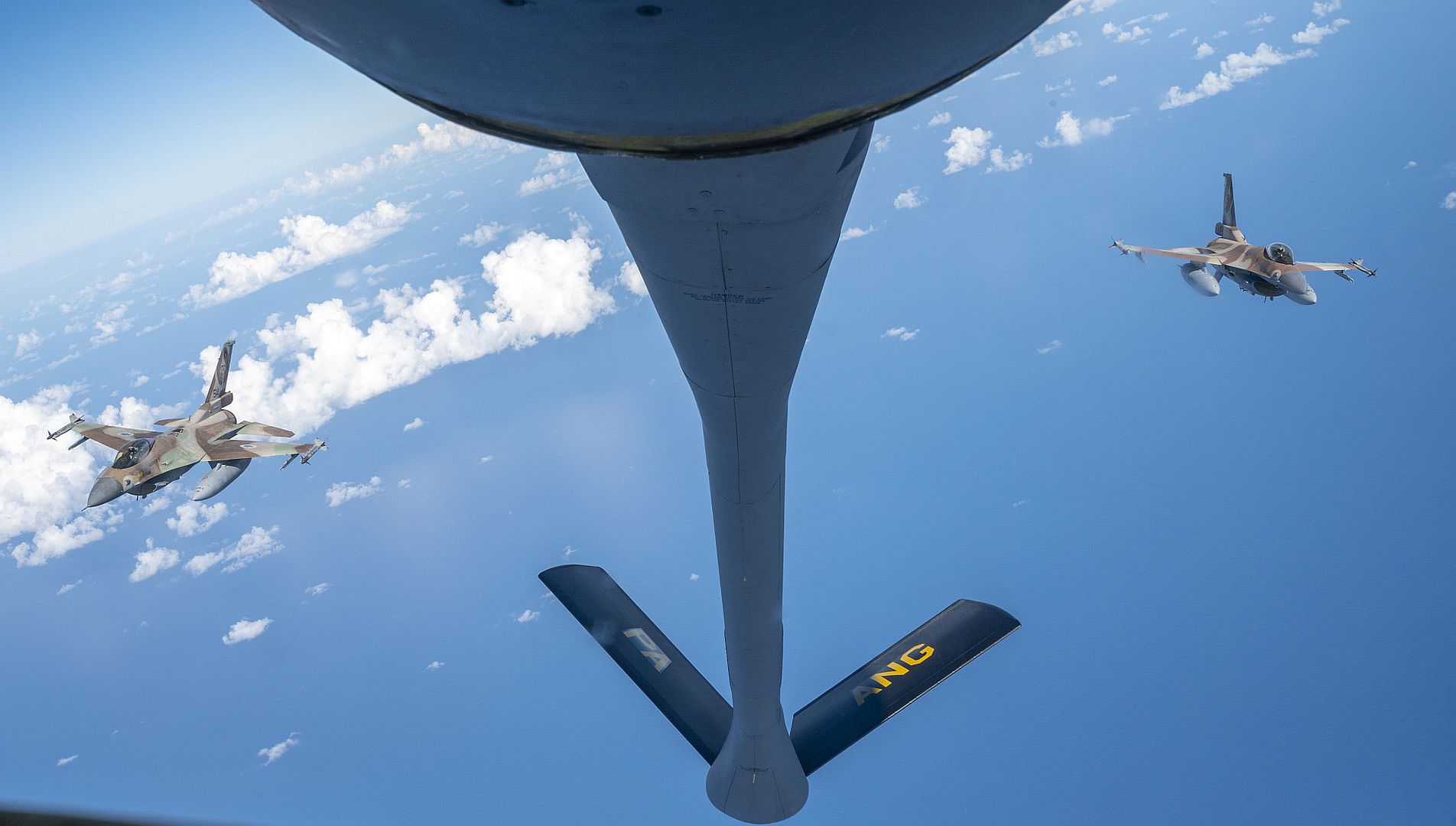
U.S. Air Force F-15E Strike Eagles and Israeli air force F-35 Lightening II fly in formation as part of a bilateral exercise in the U.S. Central Command area of responsibility, Nov. 29, 2022. (U.S. Air Force courtesy photo)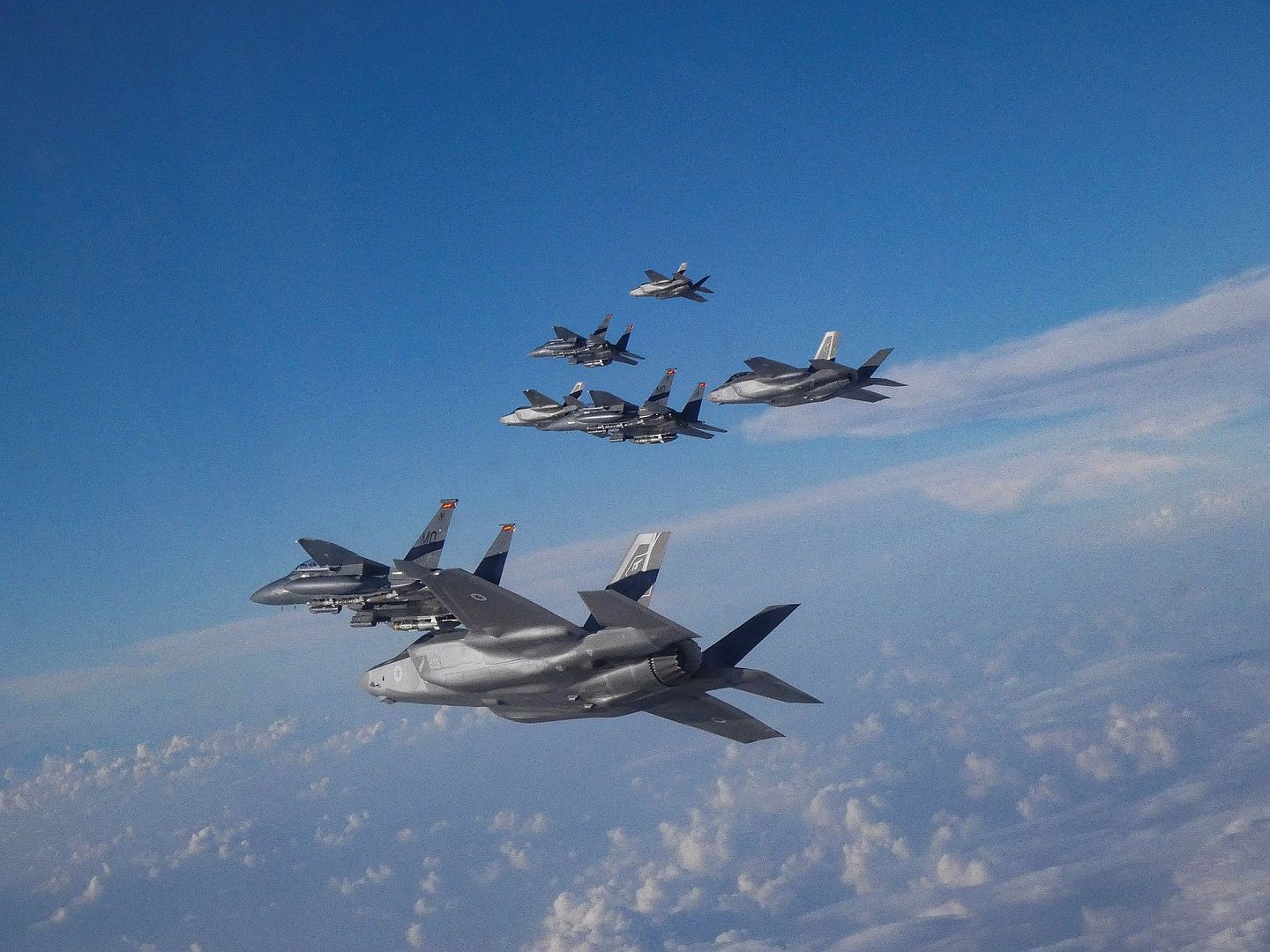
A U.S. Air Force F-15C Eagle assigned to the 44th Fighter Squadron takes off at Kadena Air Base, Japan, Dec. 1, 2022. As part of its modernization plan, the U.S. Air Force is retiring its aging fleet of F-15C/D Eagle aircraft that have been in service for more than four decades. The Department of Defense will continue to maintain a steady-state fighter presence at Kadena by temporarily deploying newer and more advanced aircraft to backfill the F-15s as they retrograde to the U.S. (U.S. Air Force photo by Senior Airman Moses Taylor)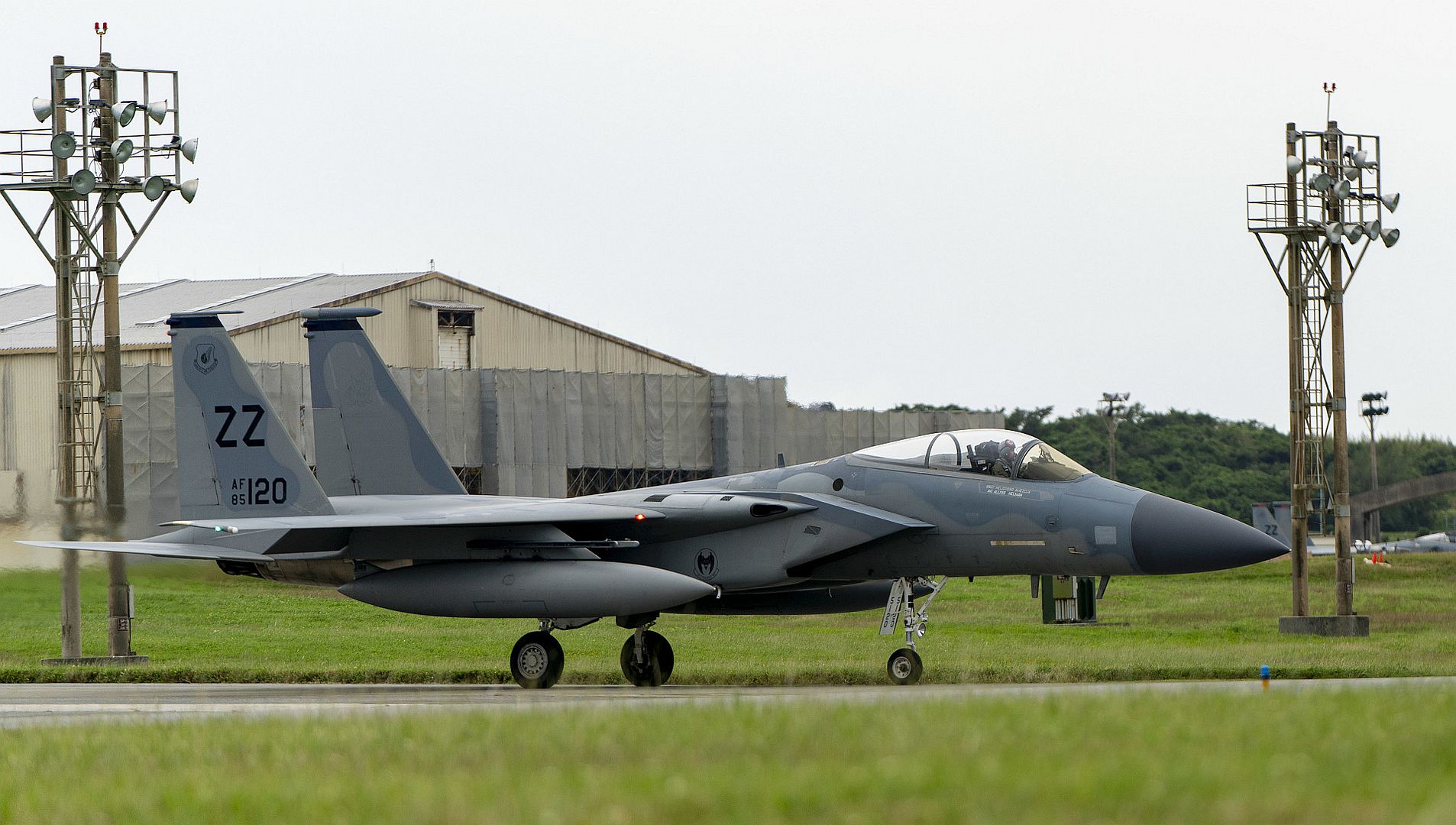
An F-15C Eagle assigned to the 44th Fighter Squadron taxis down the flightline for the final time at Kadena Air Base, Japan, Dec. 1, 2022. As a part of its modernization plan, the 18th Wing is retiring its aging fleet of F-15C/D Eagles that have been in service for more than four decades. (U.S. Air Force photo by Senior Airman Jessi Roth)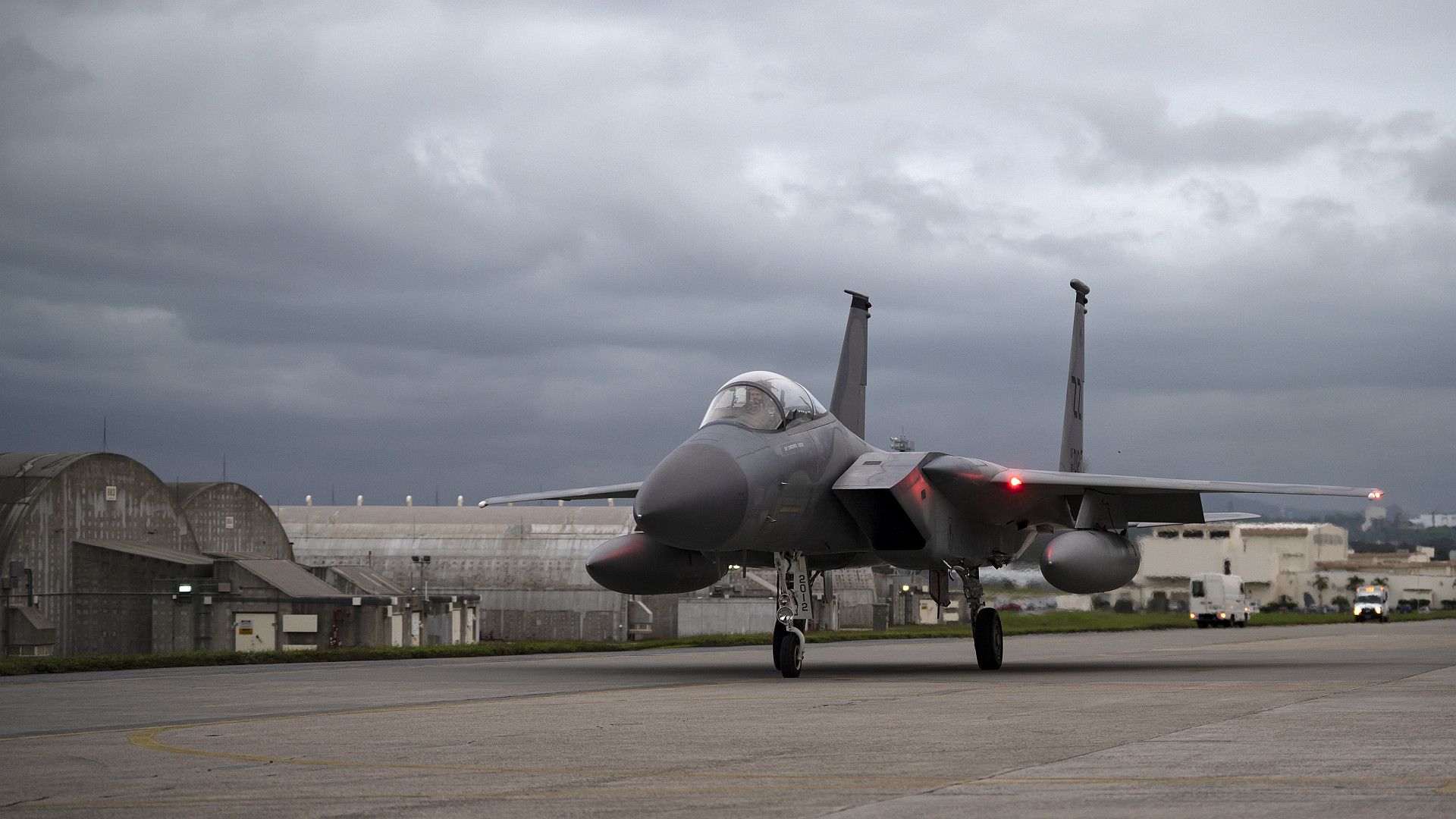
A U.S. Air Force B-1B Lancer assigned to the 37th Expeditionary Bomb Squadron flies over the Pacific Ocean, Nov. 19, 2022. Aerial operations contribute to Joint Force lethality and help deter aggression in the Indo-Pacific by demonstrating the U.S. Air Force’s ability to operate anywhere in the world in support of the National Defense Strategy. (U.S. Air Force photo by Senior Airman Jessi Roth)
-
 Main AdminAn 8th Operations Group F-16 Fighting Falcon flies during a training event in the skies near Kunsan Air Base, Republic of Korea, Dec. 1, 2022. The F-16 is a multi-capable, highly maneuverable fighter aircraft that poses a great offensive threat to any adversarial aircraft and has been a major component of thousands of combat operations since Sept. 11, 2001. (U.S. Air Force photo by Staff Sgt. Sadie Colbert)
Main AdminAn 8th Operations Group F-16 Fighting Falcon flies during a training event in the skies near Kunsan Air Base, Republic of Korea, Dec. 1, 2022. The F-16 is a multi-capable, highly maneuverable fighter aircraft that poses a great offensive threat to any adversarial aircraft and has been a major component of thousands of combat operations since Sept. 11, 2001. (U.S. Air Force photo by Staff Sgt. Sadie Colbert)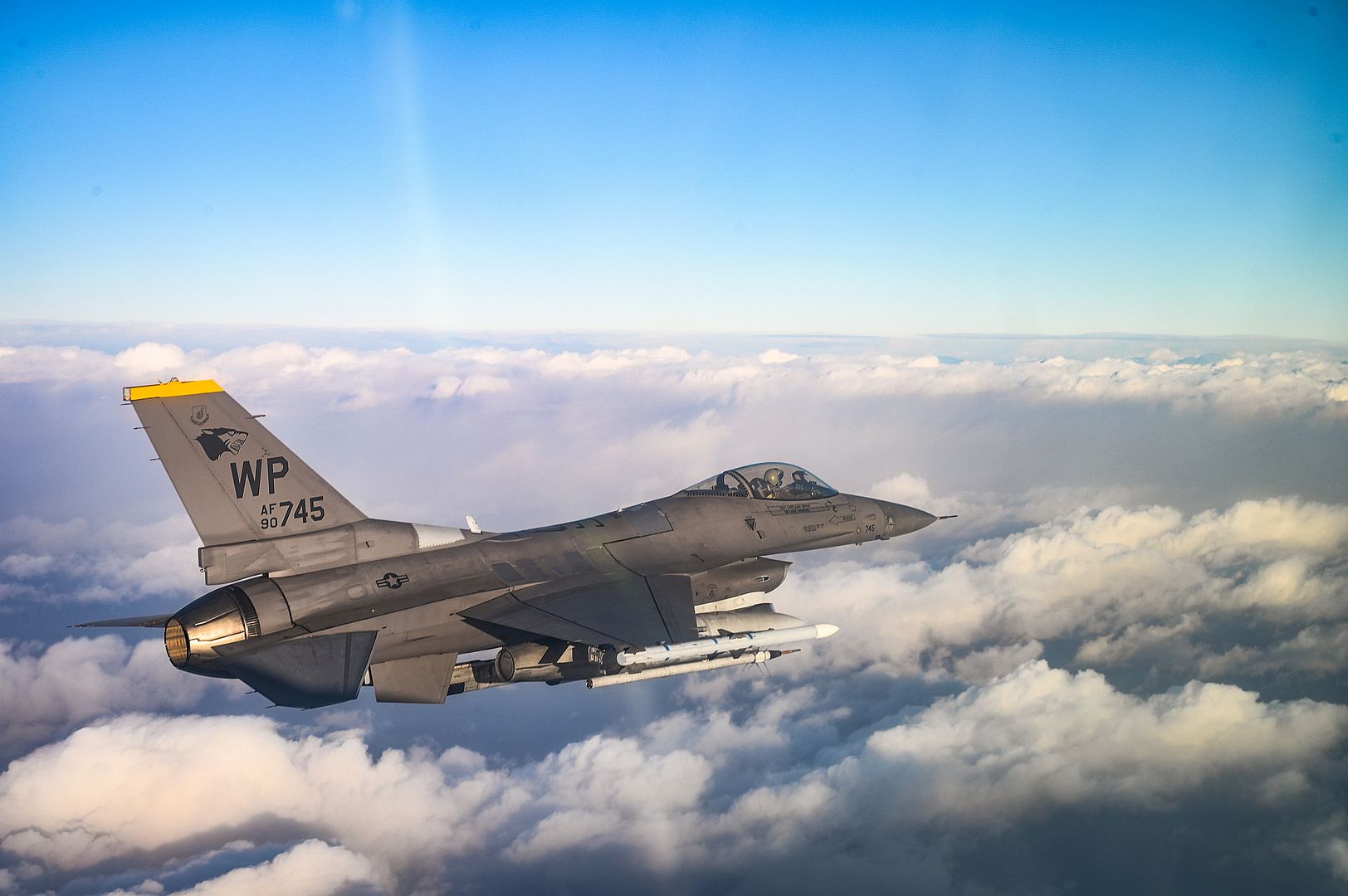
A two-ship of 8th Operations Group F-16 Fighting Falcons fly during a training event in the skies near Kunsan Air Base, Republic of Korea, Dec. 1, 2022. During the training, pilots from the 35th and 80th Fighter Squadrons executed quick-response tactics, honing their jet fighting capabilities to support a free and open Indo-Pacific theater. (U.S. Air Force photo by Staff Sgt. Sadie Colbert)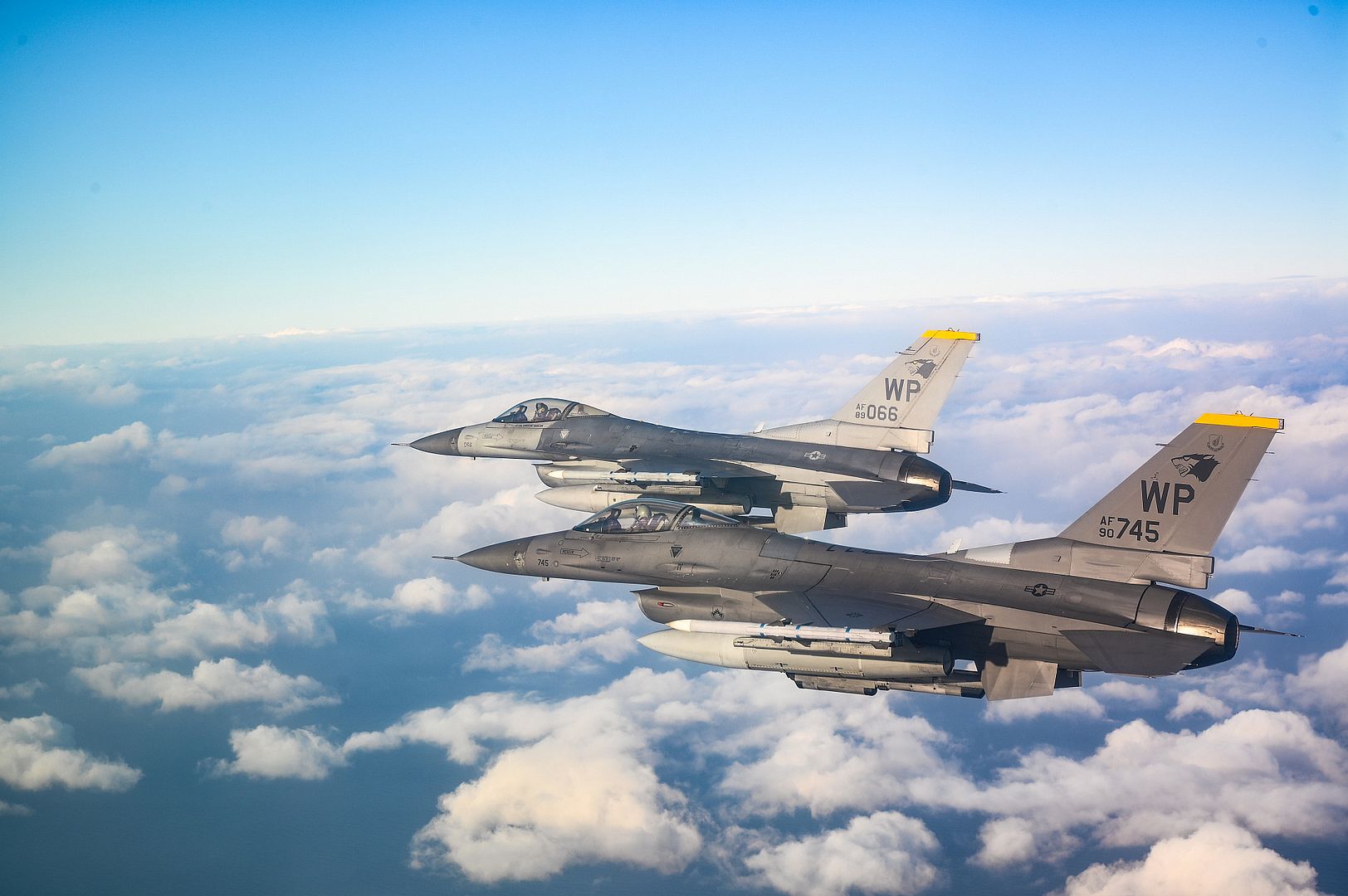
PHILIPPINE SEA (Dec. 2, 2022) An E-2D Hawkeye, attached to the Tiger Tails of Airborne Early Warning Squadron (VAW) 125, launches from the flight deck of the U.S. Navy’s only forward-deployed aircraft carrier, USS Ronald Reagan (CVN 76), in the Philippine Sea, Dec. 2. E-2D Hawkeyes perform tactical airborne, early warning missions to provide valuable information to Carrier Strike Group (CSG) 5 as it plans and executes operations. Ronald Reagan, the flagship of CSG 5, provides a combat-ready force that protects and defends the United States, and supports Alliances, partnerships and collective maritime interests in the Indo-Pacific region. (U.S. Navy photo by Mass Communication Specialist 3rd Class Oswald Felix Jr.)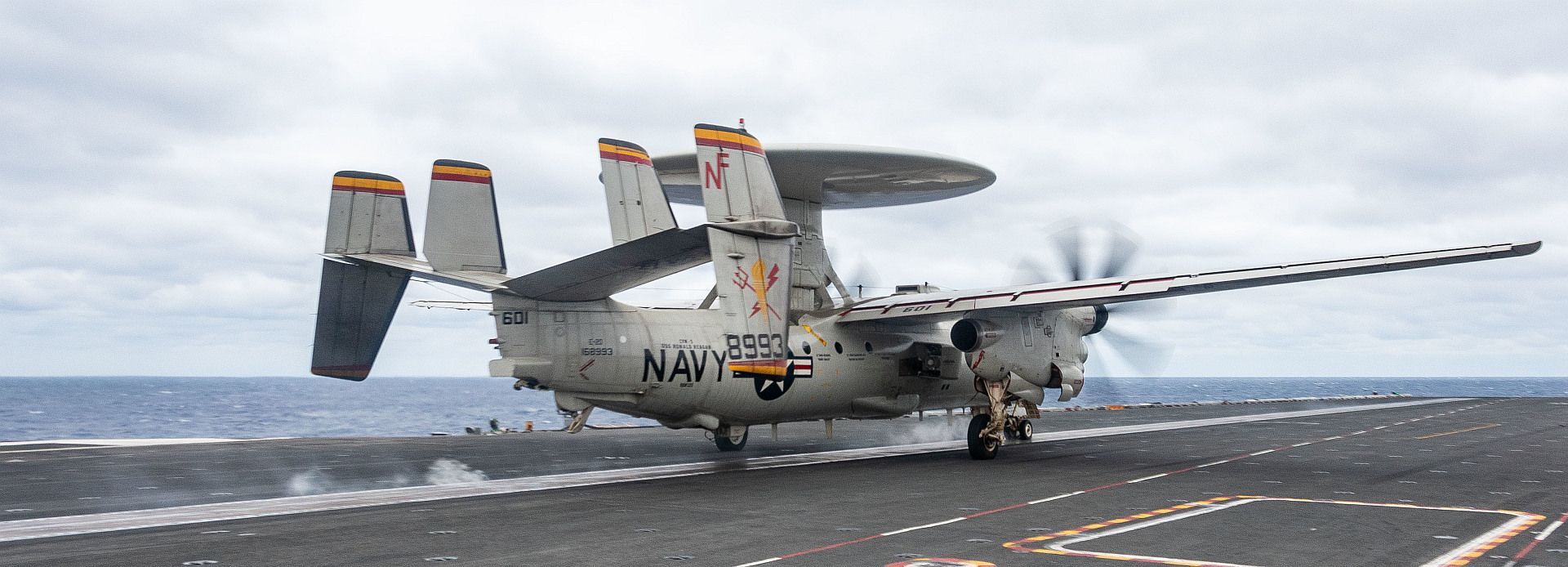
PHILIPPINE SEA (Dec. 2, 2022) An EA-18G Growler, attached to the Shadowhawks of Electronic Attack Squadron (VAQ) 141, flies over the flight deck of the U.S. Navy’s only forward-deployed aircraft carrier, USS Ronald Reagan (CVN 76), in the Philippine Sea, Dec. 2. The primary role of EA-18G Growlers is to disrupt the ability to communicate between units in combat through the use of electronic warfare. Ronald Reagan, the flagship of Carrier Strike Group 5, provides a combat-ready force that protects and defends the United States, and supports Alliances, partnerships and collective maritime interests in the Indo-Pacific region. (U.S. Navy photo by Mass Communication Specialist 3rd Class Eric Stanton)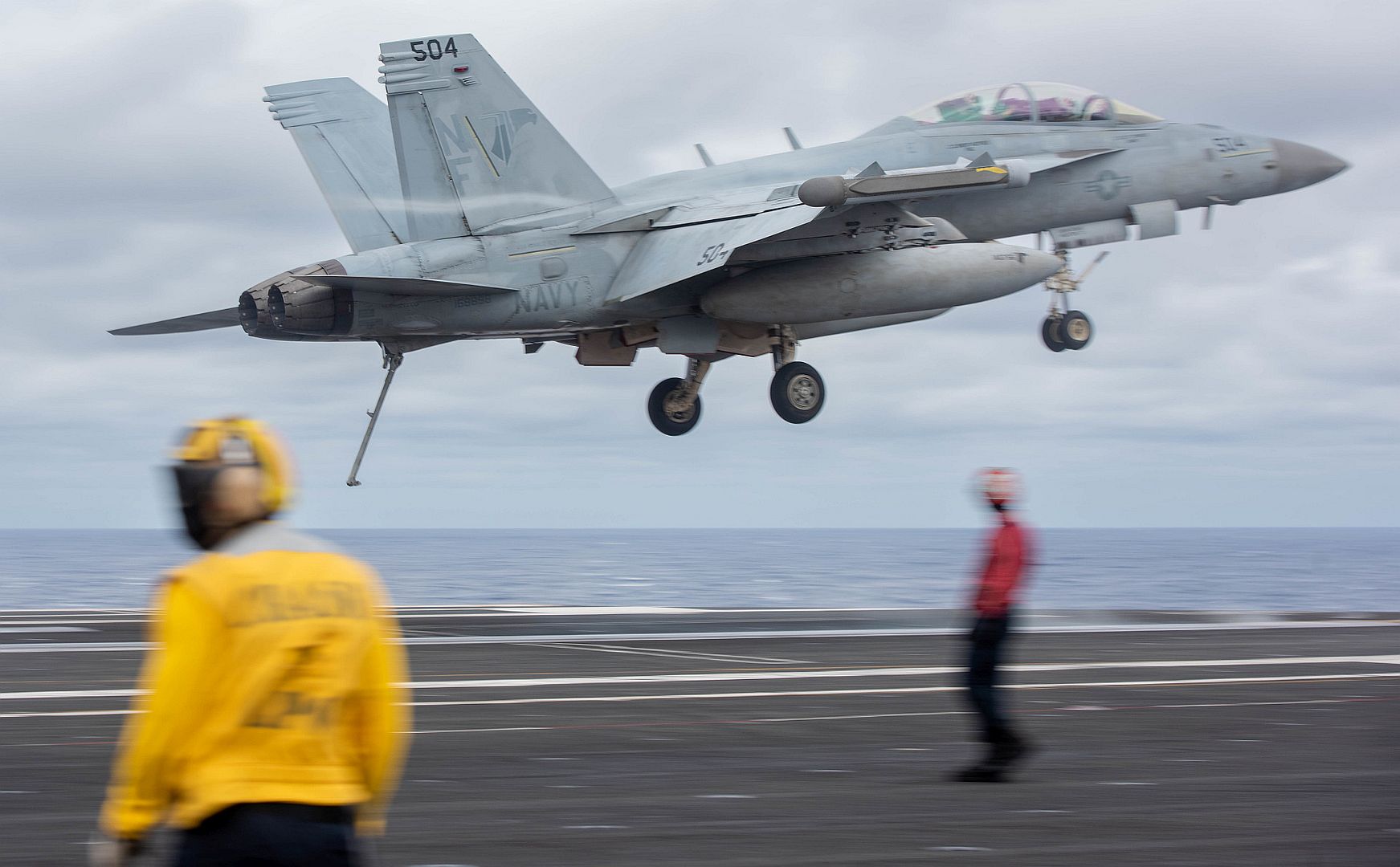
PHILIPPINE SEA (Nov. 29, 2022) An F/A-18E Super Hornet, attached to the Dambusters of Strike Fighter Squadron (VFA) 195, launches on the flight deck of the U.S. Navy’s only forward-deployed aircraft carrier, USS Ronald Reagan (CVN 76), during flight operations in the Philippine Sea, Nov. 29. The Dambusters earned their nickname on May 1, 1951 when the squadron's Skyraiders destroyed the heavily defended and strategically positioned Hwacheon Dam in North Korea with aerial torpedoes by making precise low level runs. Ronald Reagan, the flagship of Carrier Strike Group 5, provides a combat-ready force that protects and defends the United States, and supports Alliances, partnerships and collective maritime interests in the Indo-Pacific region. (U.S. Navy photo by Mass Communication Specialist 3rd Class Eric Stanton)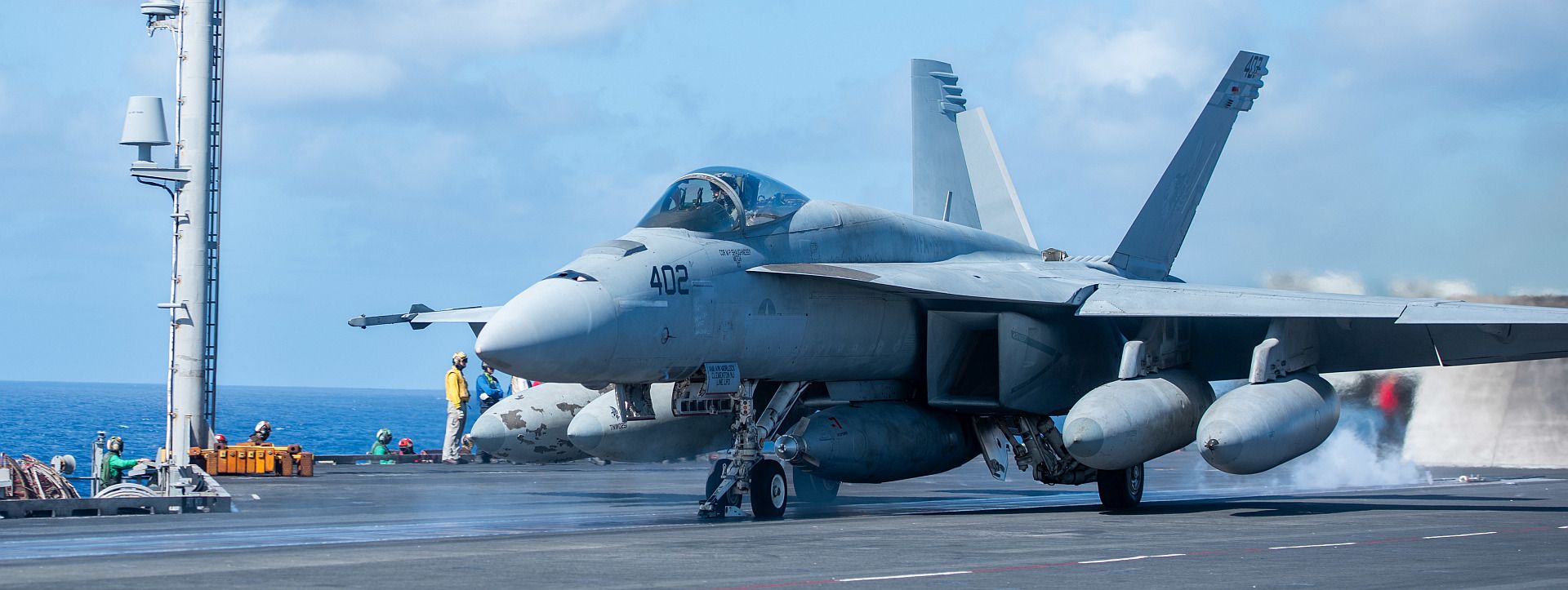
An E-8C Joint Surveillance Target Attack Radar System (JSTARS) aircraft takes off for a Weapons School Integration mission at Nellis Air Force Base, Nevada, Nov. 28, 2022. The E-8C JSTARS is an airborne battle management, command and control, intelligence, surveillance and reconnaissance platform. (U.S. Air Force photo by Airman 1st Class Josey Blades)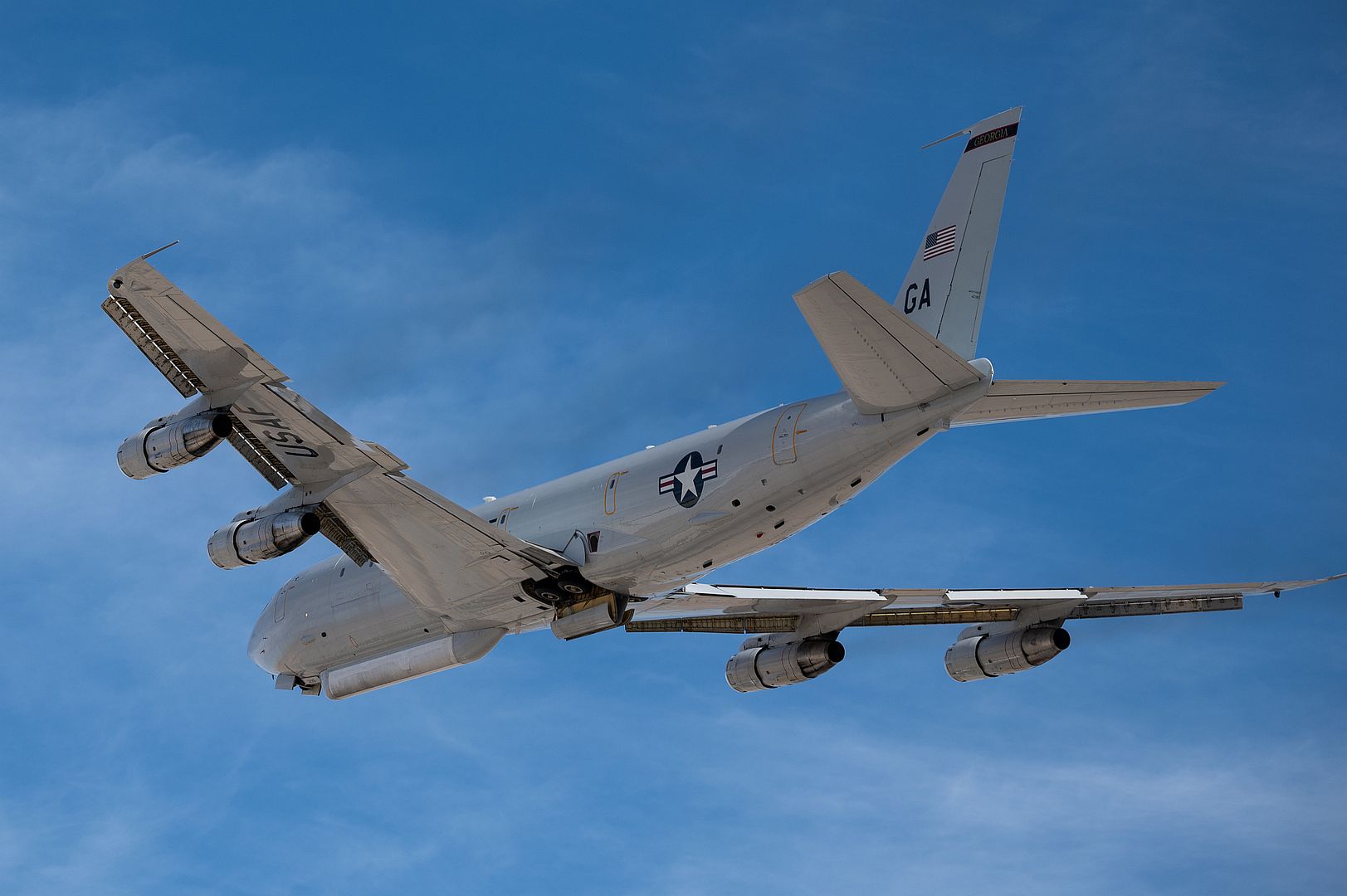
A B-1 Lancer, assigned to Dyess Air Force Base, takes off for a Weapons School Integration (WSINT) mission at Nellis Air Force Base, Nevada, Nov. 28, 2022. WSINT tests the capabilities of pilots and crew members to increase efficiency and strengthen teamwork. (U.S. Air Force photo by Airman 1st Class Josey Blades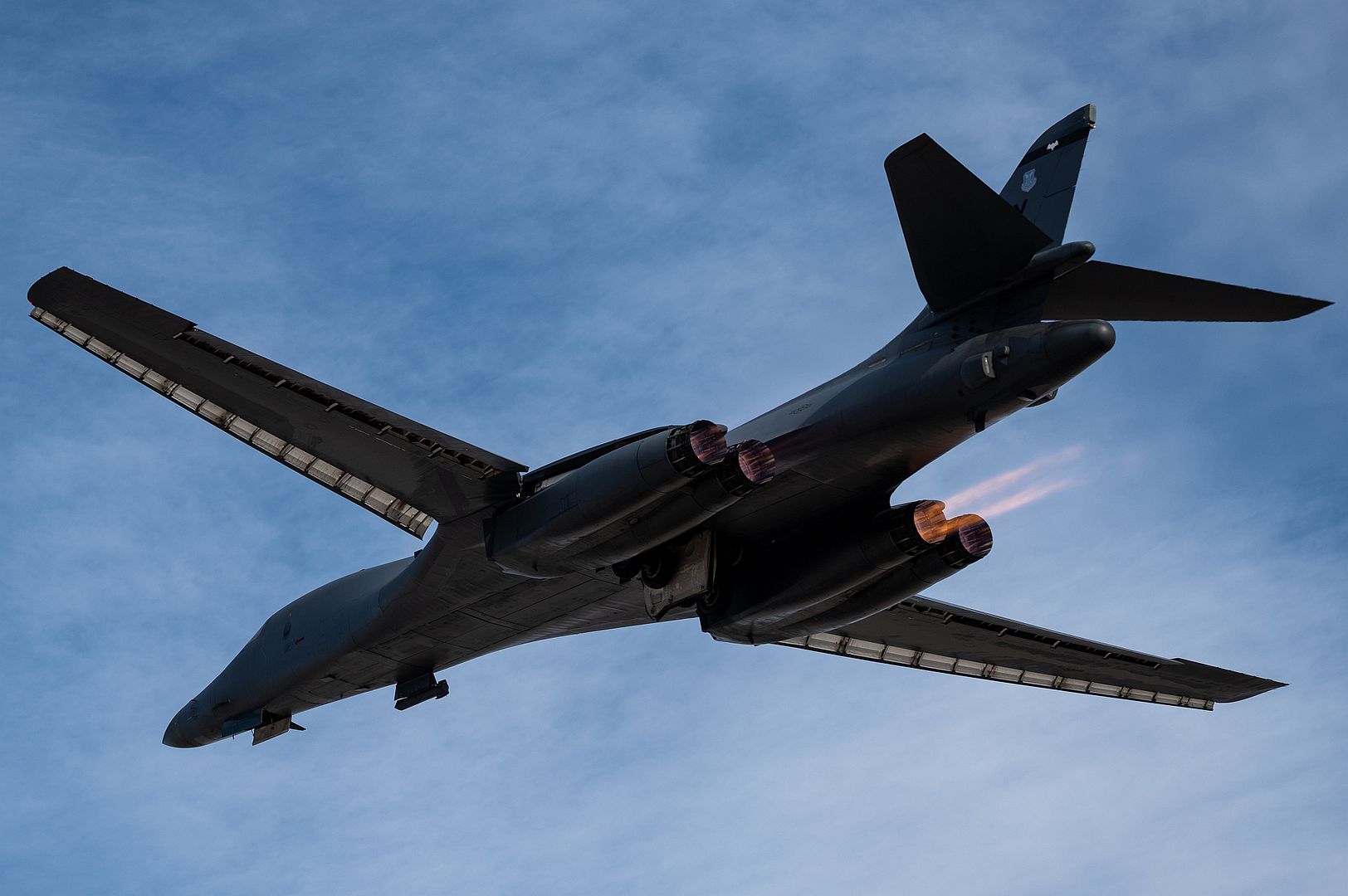
An A-10 Thunderbolt II takes off for a Weapons School Integration mission at Nellis Air Force Base, Nevada, Nov. 28, 2022. The A-10 is a simple, effective and survivable twin-engine jet aircraft that can be used against light maritime attack aircraft and all ground targets, including tanks and other armored vehicles. (U.S. Air Force photo by Airman 1st Class Josey Blades)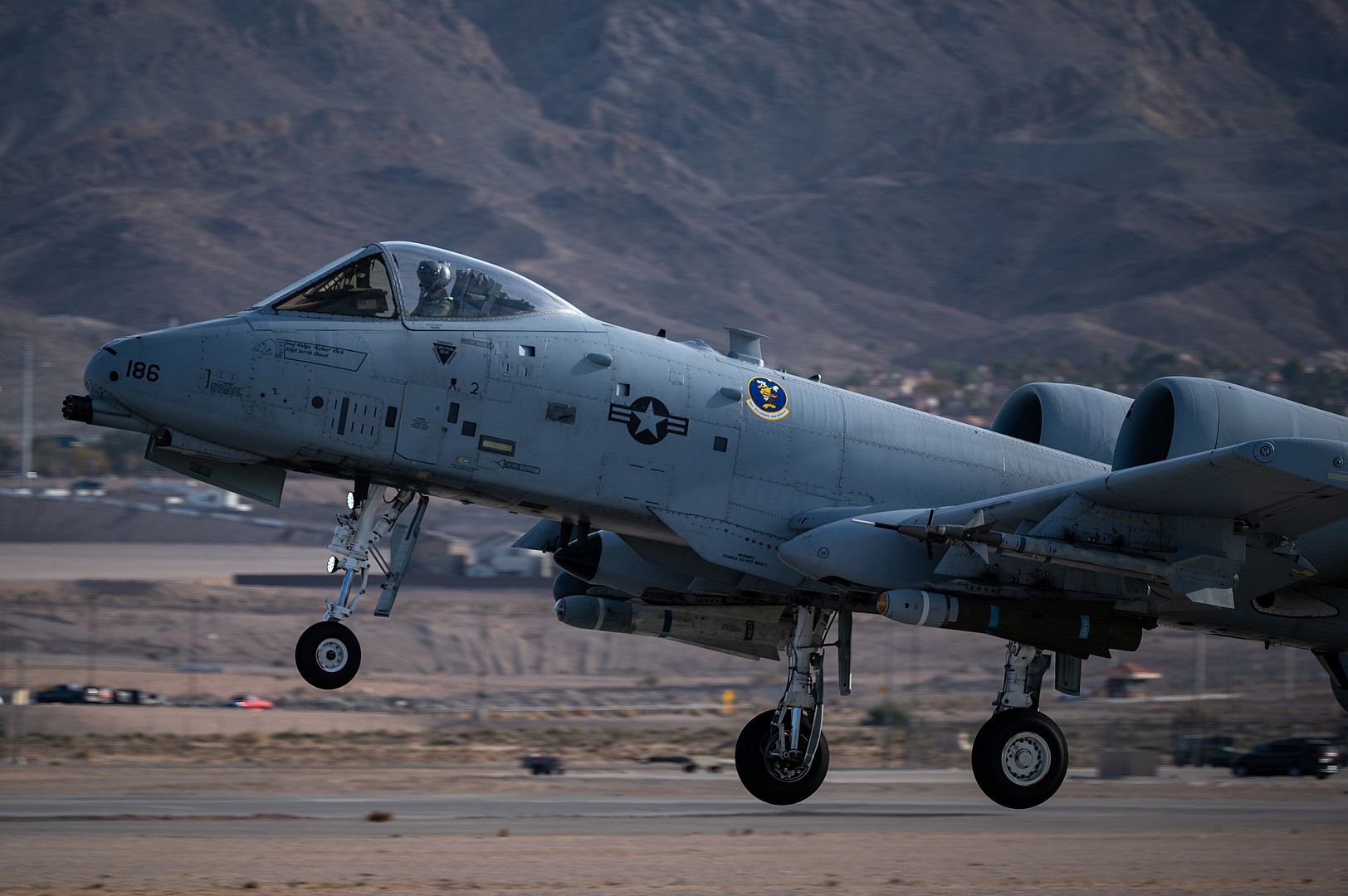
São José dos Campos, Brazil, December 2, 2022 – Embraer confirms that Spanish airline Binter is the customer of a new firm order for five E195-E2 aircraft announced this week to be delivered in 2023 and 2024. These aircraft will be added to the fleet of five jets already incorporated as of 2019 when Binter became the first European customer of the E195-E2. The list price value of the contract is US$389.4 million, which will be added to Embraer’s Q4 backlog.
Follow us on Twitter: @Embraer
About Embraer
Embraer is a global aerospace company headquartered in Brazil. It manufactures aircraft for Commercial and Executive aviation, Defense & Security, and Agricultural customers. The company also provides after-sales services & support through a worldwide network of wholly-owned entities and authorized agents.
Since it was founded in 1969, Embraer has delivered more than 8,000 aircraft. On average, about every 10 seconds an aircraft manufactured by Embraer takes off somewhere in the world. The aircraft transport over 145 million passengers per year.
Embraer is the leading manufacturer of commercial jets up to 150 seats and is the main exporter of high value-added goods in Brazil. The company maintains industrial units, offices, service and parts distribution centers across the Americas, Africa, Asia, and Europe.
Rome, 02 December 2022
The Italian Army’s UH-90A (NATO’s designation for the Italian Army’s NH90 TTH) multirole helicopter programme marked a major achievement with the completion of deliveries on 25 November. The 60th and final aircraft, assembled at Leonardo’s Venice Tessera facility, was handed over to the operator during an official ceremony in presence of representatives from the Italian Army and its Aviation unit, Italian Secretariat General of Defence / National Armaments Directorate, NAHEMA (NATO Helicopter Management Agency), NHIndustries, and Leonardo.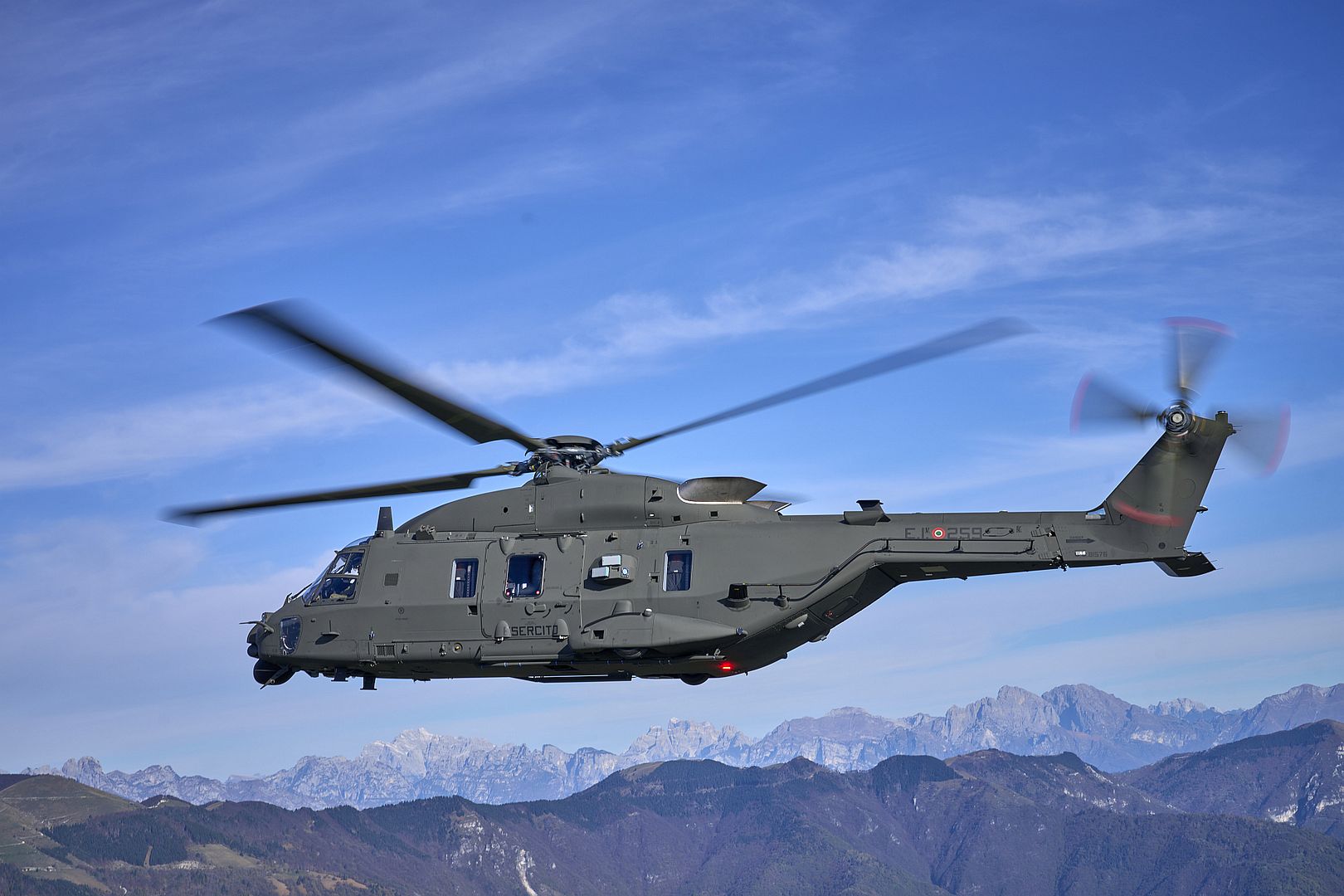
The Italian Army is one of the first and largest NH90 operators, with 31,096 flight hours logged in Italy and abroad to date. The UH-90As have played a critical role for years delivering outstanding operational capabilities, both in-country and abroad in demanding conditions with impressive availability rates and mission effectiveness. The fleet is distributed over three main Italian Army Aviation’s bases and its versatile configuration enables a range of missions, such as tactical troop transport, logistics support, special operations, cargo resupply and hoist operations, MEDEVAC (Medical Evacuation) and light tactical vehicle transport. The aircraft has also supported disaster relief and emergency response operations in years. In recent years, the collaboration between the Italian Army and Leonardo has further evolved with the capability to deliver NH90 crew training to other operators.
Carlo Gualdaroni, Chief Business Officer at Leonardo Helicopters, said: “We’re extremely excited to achieve this crucial milestone with the Italian Army. This result is testament to the long-established effective partnership between industry and the operator to deliver the required capabilities and to support its use, thus maximising the advantages of its outstanding performance and technologies. We’re committed to staying closer and closer to the Italian Army to ensure its UH-90A fleet accomplishes its missions at its best in any condition now and into the future.”
Leonardo's Venice Tessera facility, covering 24,000 m2, is the Italian final assembly of the NH90s for various operators, including the Italian Army and the Italian Navy. The new plant started assembly of NH90s in 2010 and delivered its first aircraft in June 2011. The Venice Tessera plant is also playing an important role to deliver retrofits to the in-service helicopters for various operators.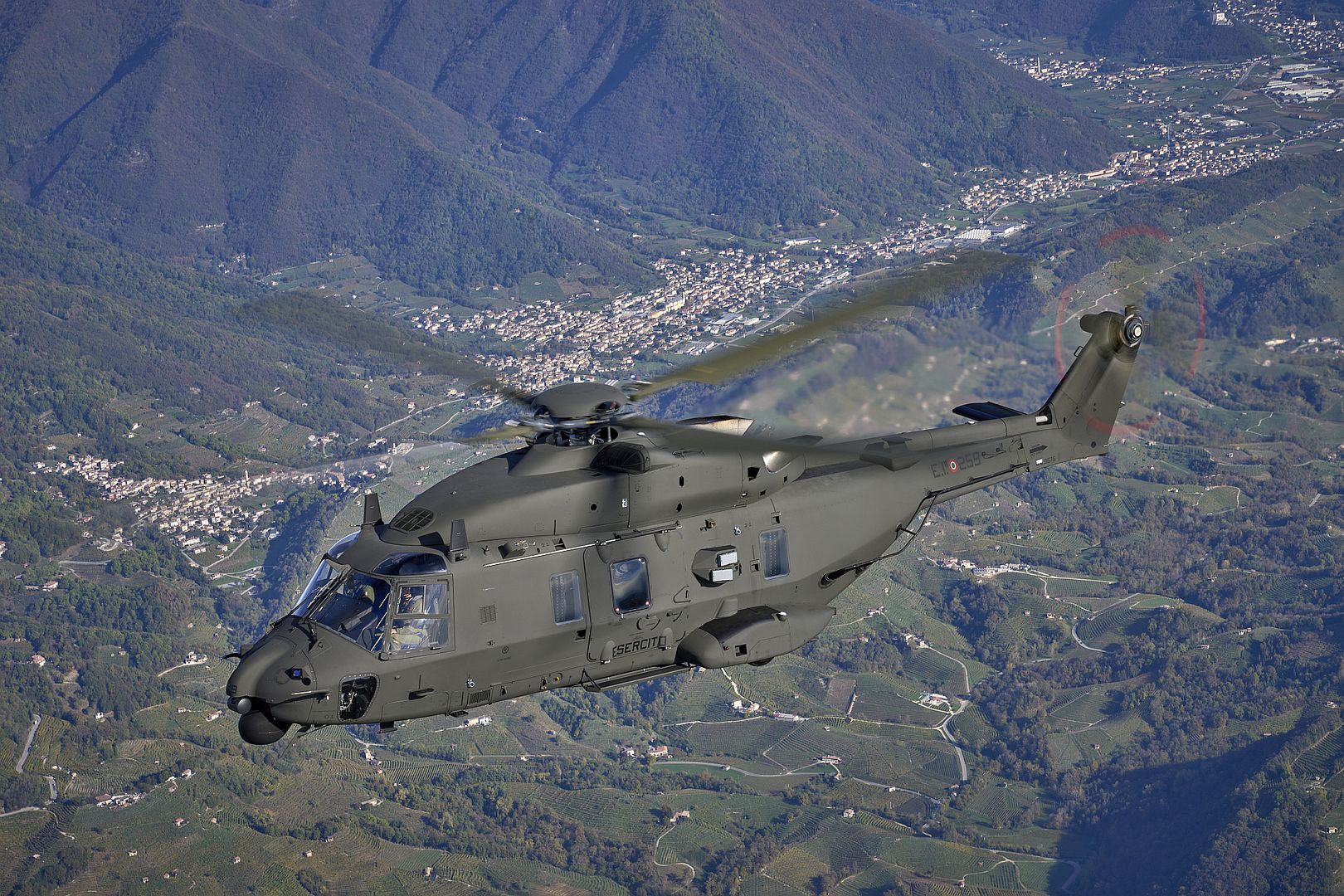
Deployed from October 24 to November 25 as part of Operation CHAMMAL, the C-135 refueling aircraft conducted more than twenty flight refueling missions for the benefit of the Rafale of the projected airbase (BAP) in the Levant and other coalition aircraft.
About twenty aviators from Istres air base have been deployed. This contingent consisted of pilots, navigators, in-flight supply operators and mechanics. The C-135 helped ensure other aircraft remain above the Operation INHERENT RESOLVE (OIR) activity area and complete their intelligence and air support missions.
The C-135 has the capacity to support almost all coalition aircraft (hunters and carriers). In addition to his refueling missions for the French Rafale, he also supplied American F-15s, F-16s and a C-130 Gunship. The C-135 night refueling of a C-130 was a first for these aircraft.
(Photo courtesy of the Armée de l'Air et de l'Espace)
-
 Main AdminPALMDALE, Calif. (AFNS) --
Main AdminPALMDALE, Calif. (AFNS) --
In a tangible display of the nation’s resolve in meeting security threats, the U.S. Air Force, on Dec. 2, publicly unveiled the B-21 Raider, the first new, long-range strike bomber in a generation and an aircraft specifically designed to be the multifunctional backbone of the modernized bomber fleet.
While the B-21 isn’t expected to be operational and introduced into service for several more years, the formal unveiling ceremony hosted by Northrop Grumman Corporation at its production facilities in California is a significant milestone in the Air Force’s effort to modernize combat capabilities. The B-21 is designed to be a more capable and adaptable, state-of-the-art aircraft that will gradually replace aging B-1 Lancer and B-2 Spirit bombers now in service.
According to design requirements, the B-21 is a long-range, highly survivable stealth bomber capable of delivering a mix of conventional and nuclear munitions. The aircraft will play a major role supporting national security objectives and assuring U.S. allies and partners across the globe.
Senior defense officials note that the National Defense Strategy and other analyses make clear the need for the B-21 and its capabilities.
“The B-21 Raider is the first strategic bomber in more than three decades,” Secretary of Defense Lloyd J. Austin said during the ceremony. “It is a testament to America’s enduring advantages in ingenuity and innovation. And it’s proof of the Department’s long-term commitment to building advanced capabilities that will fortify America’s ability to deter aggression, today and into the future.”
The B-21, Austin said, “is deterrence the American way. … This isn’t just another airplane. It’s not just another acquisition. … It’s the embodiment of America’s determination to defend the republic that we all love. It’s a testament to our strategy of deterrence—with the capabilities to back it up, every time and everywhere.”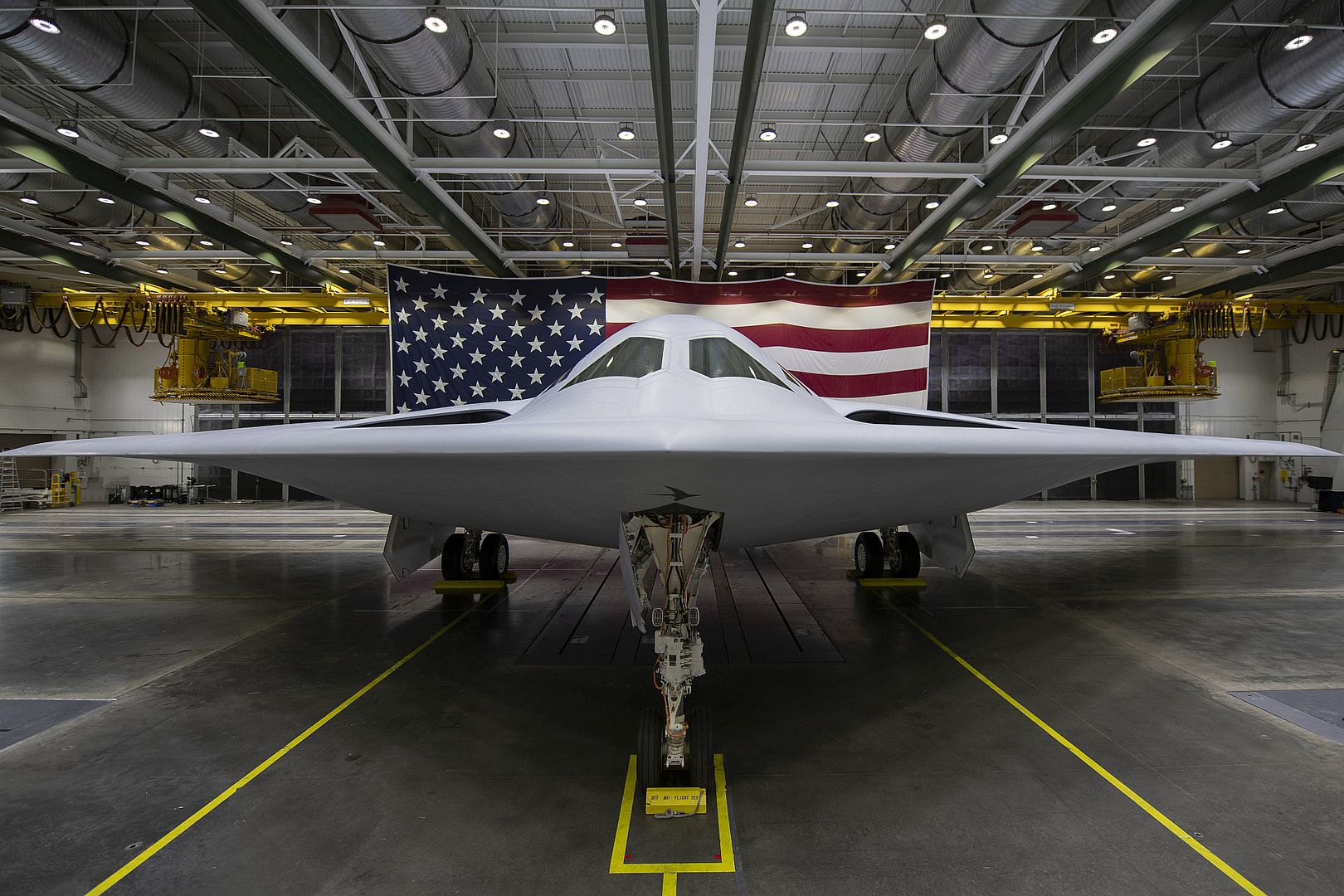
The world and its threats have changed dramatically since the last new bomber was introduced in 1988, as has the way the Air Force, other U.S. military services and allies work together as a joint, multi-domain force. Senior defense officials say that new thinking and innovation are needed to meet the new and emerging threats.
“That innovative spirit is sitting behind us right now,” Air Force Chief of Staff Gen. CQ Brown, Jr., told reporters shortly before the plane was unveiled.
“You think about what we're able to do in the amount of time with the workforce here from Northrop Grumman, the collaboration with the United States Air Force to bring in a capability using a digital approach which is new and different from anything we've done any major program, that's part of the Raider spirit,” he said.
The B-21 is the first new bomber to be introduced since the end of the Cold War. Air Force officials envision an ultimate fleet of at least 100 aircraft with an average procurement unit cost requirement of $692 million (base year 2022 dollars).
“When I think about accelerate change, this is exactly what it means to be able to bring this kind of capability very quickly and be able to adapt it vis-à-vis the threat,” Brown said in his meeting with reporters. “And so today, I'm really excited that we bring the B-21 Raider into the future. It'll be the backbone of our bomber fleet.”
The aircraft is designed with updated stealth qualities and mission flexibility that senior leaders in the Air Force and across the Department of Defense say are necessary to achieve the U.S. goal of achieving integrated deterrence, and if necessary, capabilities required to successfully respond to aggression anywhere in the world at any time.
The specific B-21 unveiled Dec. 2 is one of six under production. Each is considered a test aircraft, but each is being built on the same production line, using the same tools, processes, and technicians who will build production aircraft. This approach has enabled production engineers and technicians to capture lessons learned and apply them directly to follow-on aircraft, driving home a focus on repeatability, producibility and quality.
The timing for first flight will be data and event, not date driven.
While the precise date when the B-21 will enter service is unknown, basing decisions have been made. Ellsworth AFB, South Dakota will become the first Main Operating Base and formal training unit for the B-21. Whiteman AFB, Missouri, and Dyess AFB, Texas, are the preferred locations for the remaining home bases. Each will receive aircraft as they become available.
In addition to building a bomber with state-of-the-art technology and capabilities, Air Force officials emphasized the focus on containing costs while simultaneously allowing for maximum flexibility.
For example, the B-21 is designed with an open systems architecture that will enable rapid future capability integration to keep pace with the highly contested threat environment.
The B-21 design is based on firm requirements with existing and mature technology to control program costs. In fact, the plane’s prime contractor, Northrop Grumman, has been directed to use production processes, production tooling, and a production workforce that ensures sustained and seamless production while avoiding unnecessary costs.
“Leveraging innovative manufacturing techniques, open systems architectures and active management allows us to integrate new technology as it matures and ensures the B-21 can adapt to future threats and be successful when and where we need it,” Assistant Secretary of the Air Force for Acquisition, Technology and Logistics Andrew P. Hunter, said.
-
 Main AdminA Republic of Korea Air Force C-130H Hercules takes off at Andersen Air Force Base, Guam, Dec. 2, 2022, during Operation Christmas Drop 2022. Before start Operation Christmas Drop 2022, Aircrerws from the U.S. Air Force, Japan Air Self-Defense Force, Royal Australia Air Force, Royal New Zealand Air Force, and Republic of Korea Air Force conducted dynamic delivery airdrop mission over the Pacific Ocean. Aircrew delivering these airdrops worked to hone skills needed for effective dynamic delivery to non-surveyed drop zones, a method that incorporates real-time decision making within a challenging mission environment. (U.S. Air Force photo by Yasuo Osakabe)
Main AdminA Republic of Korea Air Force C-130H Hercules takes off at Andersen Air Force Base, Guam, Dec. 2, 2022, during Operation Christmas Drop 2022. Before start Operation Christmas Drop 2022, Aircrerws from the U.S. Air Force, Japan Air Self-Defense Force, Royal Australia Air Force, Royal New Zealand Air Force, and Republic of Korea Air Force conducted dynamic delivery airdrop mission over the Pacific Ocean. Aircrew delivering these airdrops worked to hone skills needed for effective dynamic delivery to non-surveyed drop zones, a method that incorporates real-time decision making within a challenging mission environment. (U.S. Air Force photo by Yasuo Osakabe)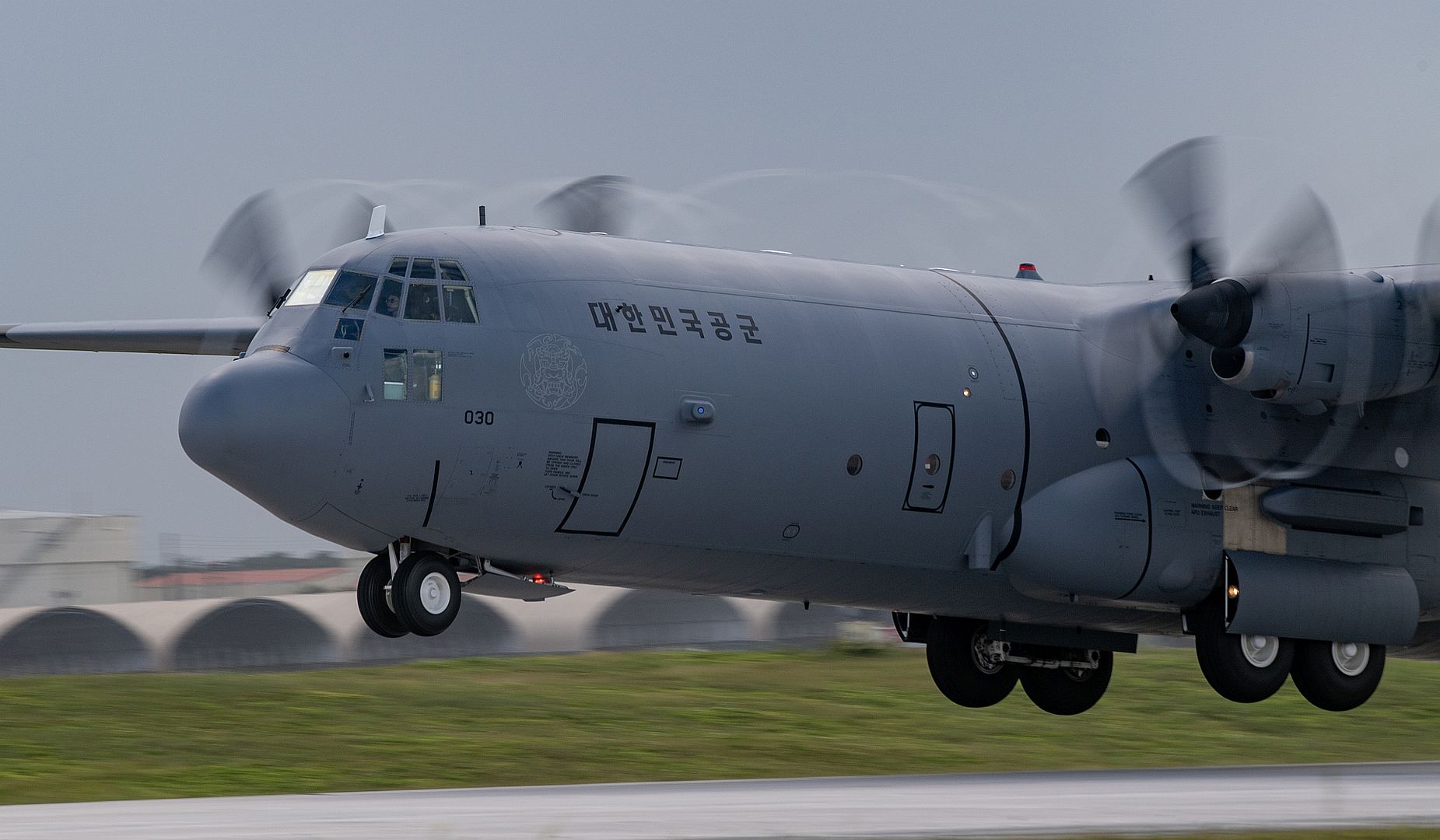
A Japan Air Self-Defense Force C-130H Hercules taxis down the flightline at Andersen Air Force Base, Guam, Dec. 2, 2022, during Operation Christmas Drop 2022. Before start Operation Christmas Drop 2022, Aircrerws from the U.S. Air Force, Japan Air Self-Defense Force, Royal Australia Air Force, Royal New Zealand Air Force, and Republic of Korea Air Force conducted dynamic delivery airdrop mission over the Pacific Ocean. Aircrew delivering these airdrops worked to hone skills needed for effective dynamic delivery to non-surveyed drop zones, a method that incorporates real-time decision making within a challenging mission environment. (U.S. Air Force photo by Yasuo Osakabe)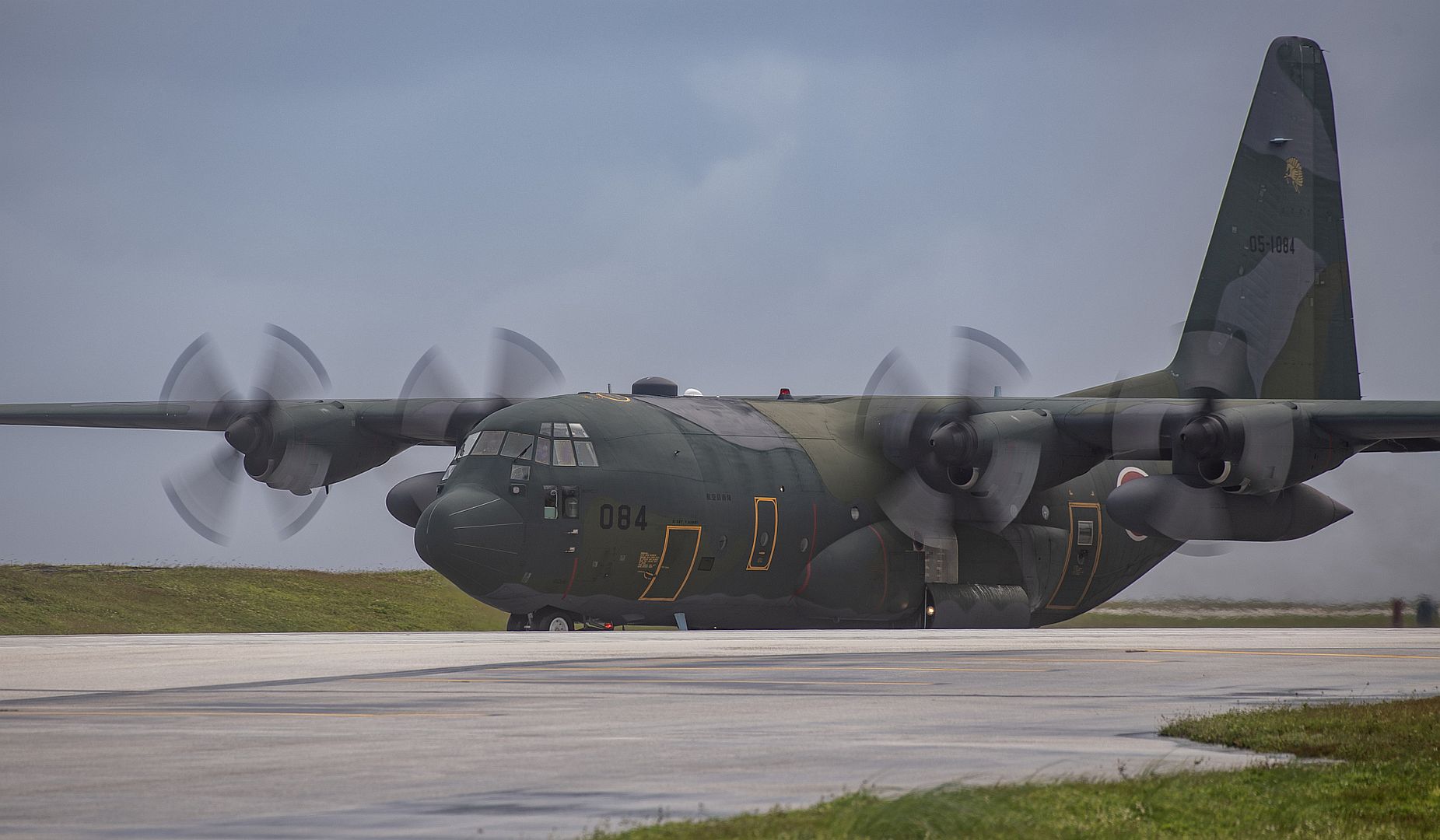
U.S. Air Force Capt. “Brave”, left, 77th Expeditionary Fighter Squadron F-16 pilot, and Royal Netherlands Air Force Maj. “Turbo” Scherders, right, 77th Expeditionary Fighter Squadron director of operations, fly in formation over an undisclosed location within the U.S. Central Command area of responsibility, Dec. 2, 2022. As part of the Foreign Exchange Officer (FEO) program, the Dutch instructor pilot is flying with the Gamblers in support of Operation Inherent Resolve, ensuring regional security and strengthening partnerships with NATO allies. (U.S. Air Force photo by Staff Sgt. Gerald R. Willis)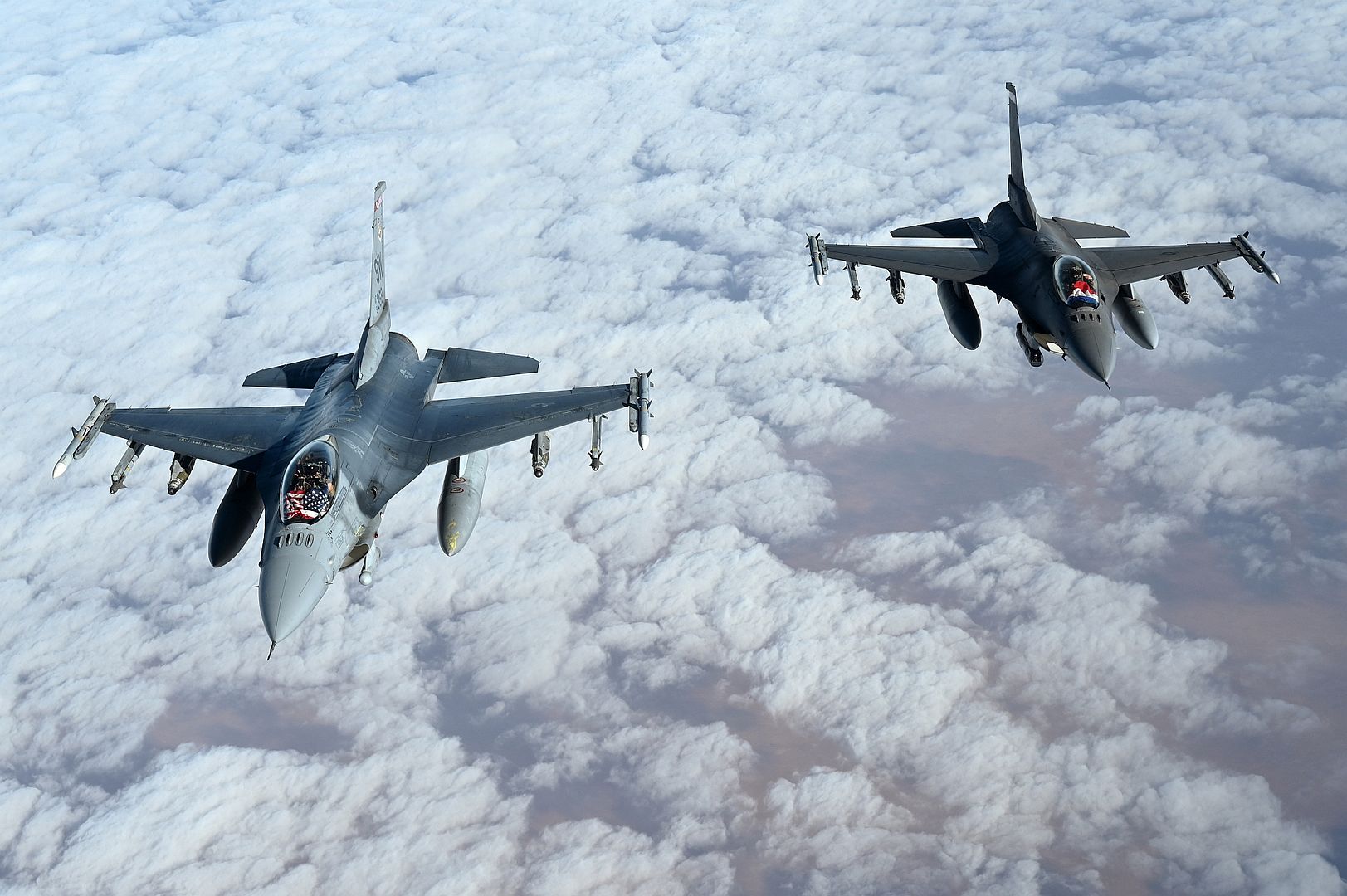
Zürich, The Swiss Air-Rescue Service Rega has ordered a second batch of 12 five-bladed H145 helicopters to be operated from its mountain bases. They will replace the current fleet of AW109SP helicopters. This new order follows an initial contract for nine H145s, announced in March this year. By 2026, Rega will operate an all-Airbus fleet consisting of 21 five-bladed H145s.
“To effectively operate life-saving air rescue services in Switzerland, we understand that the ability to perform optimally at altitude is paramount,” says Bruno Even, CEO of Airbus Helicopters. “The five-bladed H145 landed on the Aconcagua in Chile, a mountain that is nearly 7,000 metres high - no other twin engine helicopter has ever achieved this feat. That is why we are especially proud that Rega has put its faith in the five-bladed H145 and decided to make it the only helicopter type in its fleet to perform such critical missions.”
“By selecting the five-bladed H145, we are ensuring that Rega will continue being able to provide its patients with reliable and professional medical assistance by air for the next 15 years,” says Ernst Kohler, CEO of Rega.
The five-bladed H145s will come equipped with a state-of-the-art navigation system, especially tailored to the operator’s needs that will enhance the mission capabilities and the safety of operations. The system will use new capabilities of the Flight Management System GTN750 Xi by Garmin. It will integrate and control a multi-sensor system that provides highly accurate and reliable navigation capacities. Even in the event of GPS signal loss, the helicopter will navigate safely thanks to Thales’ inertial navigation system. This solution will further boost the navigation performance in low IFR conditions and allows the helicopter to be certified as navigation procedure RNP-AR 0.1, which is the most accurate navigation procedure in the helicopter environment. The configuration also includes a new hoist by Vincorion that is being certified on the five-bladed H145, ensuring highest safety standards.
Rega operates 14 HEMS stations in Switzerland. Last year, the helicopter crews carried out 14,330 missions, including transporting 471 COVID patients.
The new version of Airbus’ best-selling H145 light twin-engine helicopter adds a new, innovative five-bladed rotor to the multi-mission aircraft, increasing the useful load of the helicopter by 150kg. The simplicity of the new bearingless main rotor design also eases maintenance operations, further improving the benchmark serviceability and reliability of the H145, while improving ride comfort for both passengers and crew. In total, there are more than 1,600 H145 family helicopters in service, logging a total of more than seven million flight hours. Powered by two Safran Arriel 2E engines, the H145 is equipped with full authority digital engine control (FADEC) and the Helionix digital avionics suite. It includes a high performance 4-axis autopilot, increasing safety and reducing pilot workload. Its particularly low acoustic footprint makes the H145 the quietest helicopter in its class, while its CO2 emissions are the lowest amongst its competitors.
Seoul, 30 November 2022 – Korean Air has become a new operator of the best-selling A320 Family, following the recent delivery of the first of 30 aircraft on order with Airbus. Korean Air’s A321neo features the new Airbus Airspace cabin, bringing premium widebody features to the single aisle market.
KAL’s A321neo aircraft are powered by Pratt & Whitney GTF™ engines. The A321neo brings a 25% reduction in fuel consumption and emissions per seat compared with previous generation competing aircraft.
This enables Korean Air to benefit from enhanced efficiency and be able to deliver on its sustainability objectives, whilst reducing operating costs.
Korean Air becomes the first airline in Asia to take delivery of an A321neo with the complete Airspace cabin. This features new lighting and ambiance systems, larger overhead bins and full connectivity throughout, giving passengers the highest levels of in-flight comfort. The Airspace cabin also offers hygienic space and antimicrobial surfaces in all lavatories.
For its A321neo fleet, Korean Air has specified a high comfort two-class layout, with eight full-flat seats in Business Class and 174 in Economy.
KAL is Airbus’ longest standing customer from outside Europe having placed its first order in 1974. The airline's fleet currently includes 50 Airbus aircraft, comprising the A220, A330 and A380. In the single aisle segment, the A321neo will complement the A220 fleet at the airline enabling maximum operational flexibility.
At the end of October 2022, the A320neo Family had received over 8,500 orders from over 130 customers worldwide.
29.11.2022
The experimental MC-21 aircraft of Irkut Corporation (part of PJSC UAC of Rostec State Corporation), previously painted in the livery of Rossiya Airlines (Aeroflot Group), has arrived at Flight Test and Development Complex of Yakovlev Design Bureau, where it will be prepared for joint pilot operation.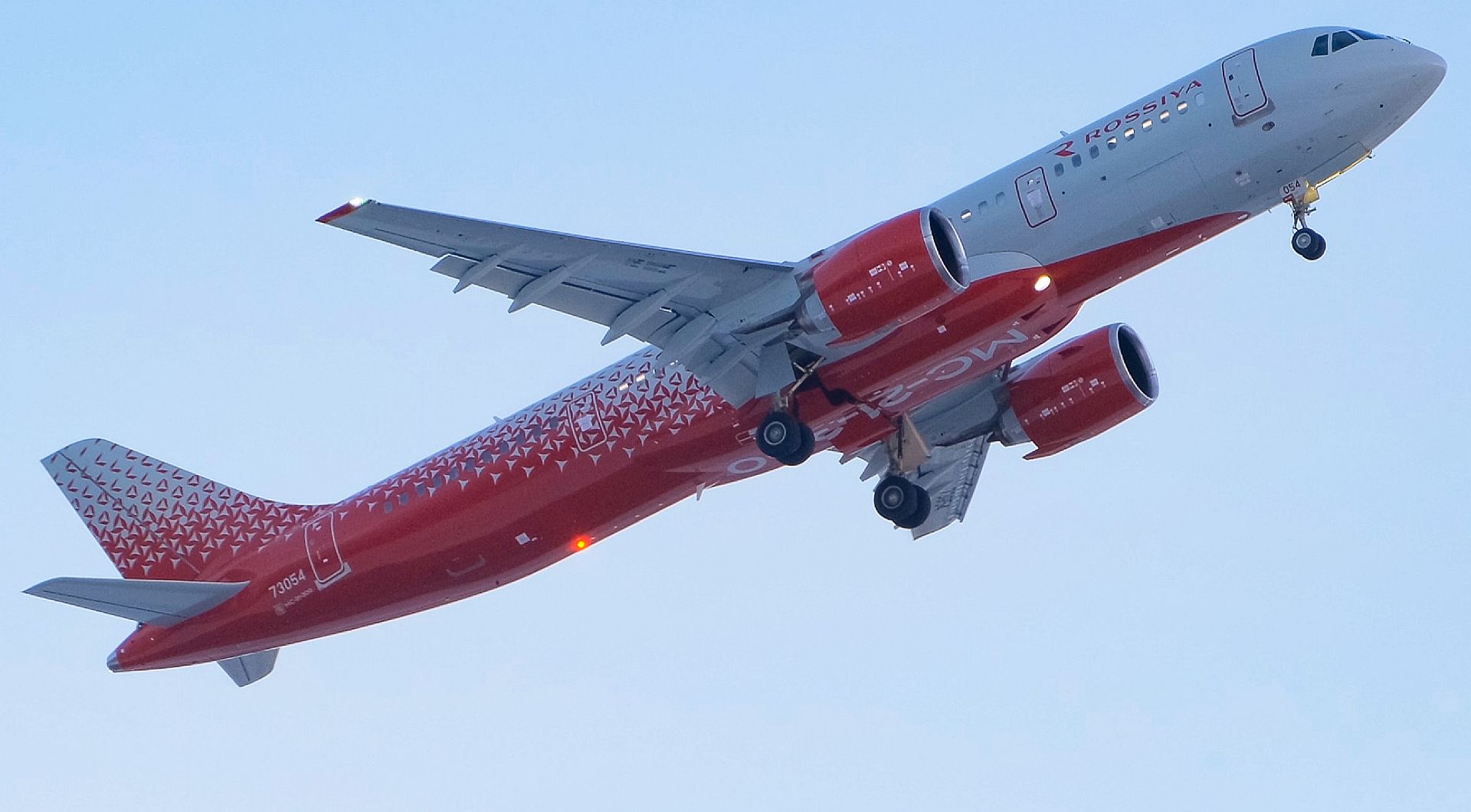
As part of the MC-21 joint pilot operation program, Irkut Corporation and Rossiya Airlines plan to train command and instructor personnel and instructor pilots, gain experience in air transportation on standard airliner routes, and also work out operating procedures.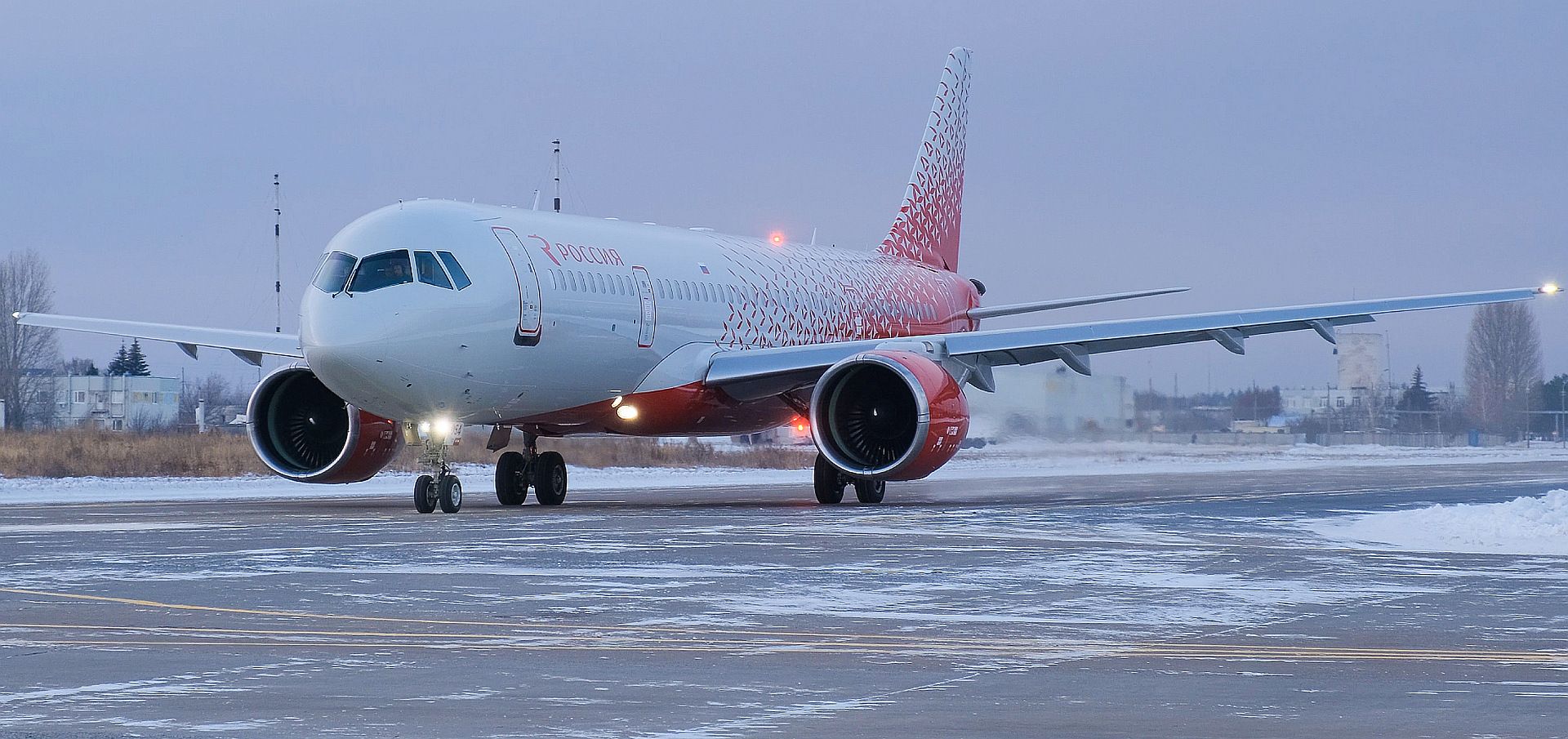
In total, three experimental MC-21 aircraft will take part in the program, which will be based at the Ramenskoye airfield, where Flight Test and Development Complex of Yakovlev Design Bureau is located.
The pilot operation program is currently being coordinated with the relevant federal agencies. At the first stage, piloting will be carried out by test pilots of the Yakovlev Design Bureau.
MC-21 is a new generation medium-haul passenger aircraft with a capacity of 163 to 211 passengers. The airliner is focused on the most demanded segment of the passenger transportation market. MC-21 is manufactured according to the latest developments in the field of aircraft construction. Advanced aerodynamics, engines and avionics of the latest generation provide high flight performance and reduced operating costs compared to analogues. Aerodynamic perfection of the aircraft is achieved with a wing of greater aspect ratio made of composite materials. Engines with a high bypass ratio PD-14 are distinguished by low fuel consumption, reduced noise levels and emissions. The widest fuselage in its class provides more personal space for passengers.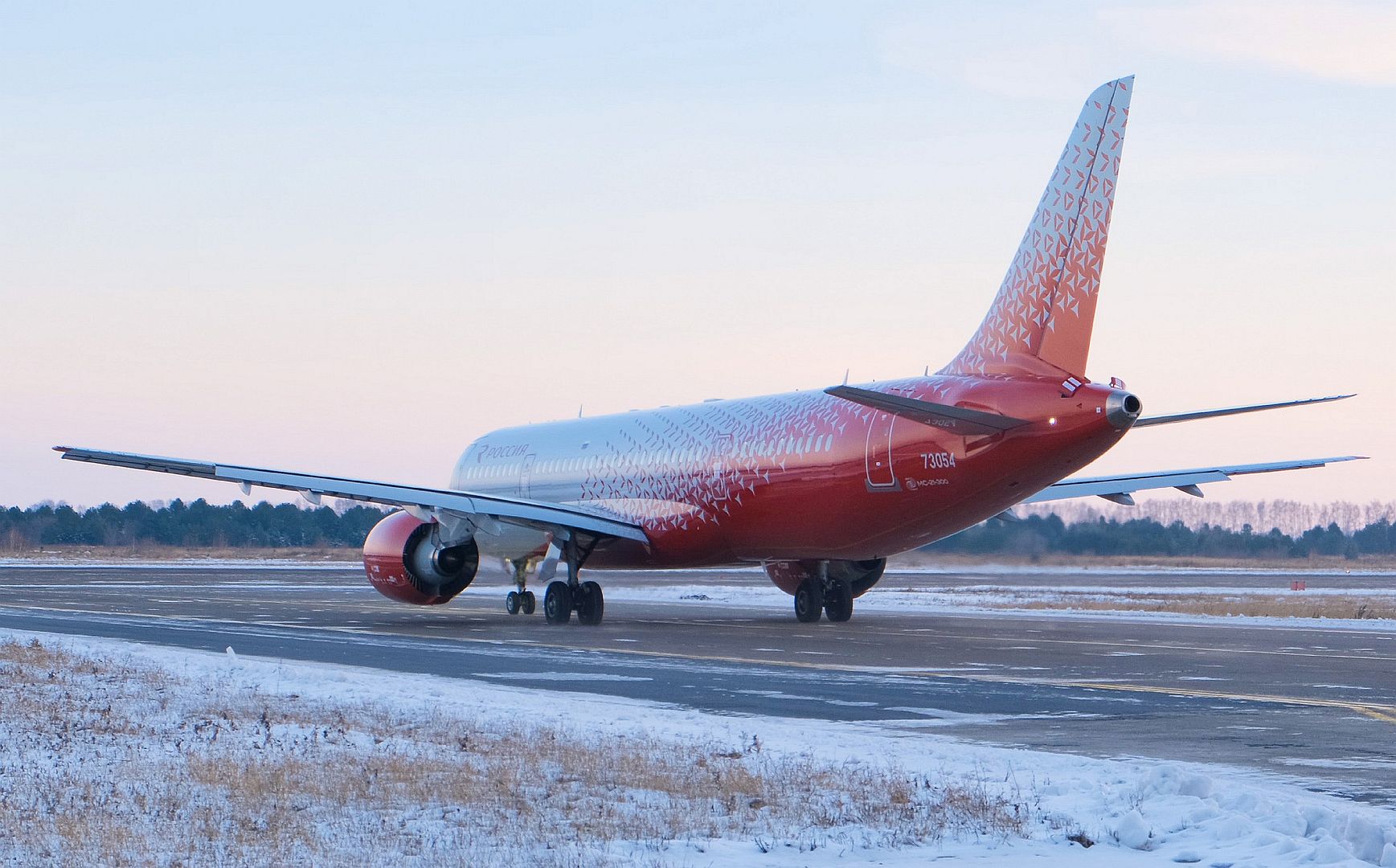
The F-35B Lightning jets of 617 Squadron have returned to RAF Marham following their deployment to HMS Queen Elizabeth as part of Operation Achillean.
Group Captain Phil Marr, Commander Lightning, said: “617 Squadron’s latest embarkation on HMS Queen Elizabeth has been a resounding success, assuring critical high-readiness operational capability for the UK’s F-35 Lightning Force and providing an excellent opportunity to strengthen ties with our Norwegian partners.”
The carrier deployment element of the Operation was designed to demonstrate NATO's 5th generation maritime strike capability, with F-35 jets supported by Merlin, and Wildcat helicopters.
(Photos courtesy of the RAF)
-
 Main AdminA U.S. Marine MV-22 Osprey tiltrotor aircraft with Marine Medium Tiltrotor Squadron 164, Marine Aircraft Group 39, 3rd Marine Aircraft Wing, prepares to land during an air assault as part of Steel Knight 23 at Marine Corps Base Camp Pendleton, California, Dec. 5, 2022. Steel Knight is an annual combined arms live-fire exercise which ensures 1st MARDIV is optimized for naval expeditionary warfare in contested spaces, and is purpose-built to facilitate future operations afloat and ashore. (U.S. Marine Corps photo by Lance Cpl. Earik Barton)
Main AdminA U.S. Marine MV-22 Osprey tiltrotor aircraft with Marine Medium Tiltrotor Squadron 164, Marine Aircraft Group 39, 3rd Marine Aircraft Wing, prepares to land during an air assault as part of Steel Knight 23 at Marine Corps Base Camp Pendleton, California, Dec. 5, 2022. Steel Knight is an annual combined arms live-fire exercise which ensures 1st MARDIV is optimized for naval expeditionary warfare in contested spaces, and is purpose-built to facilitate future operations afloat and ashore. (U.S. Marine Corps photo by Lance Cpl. Earik Barton)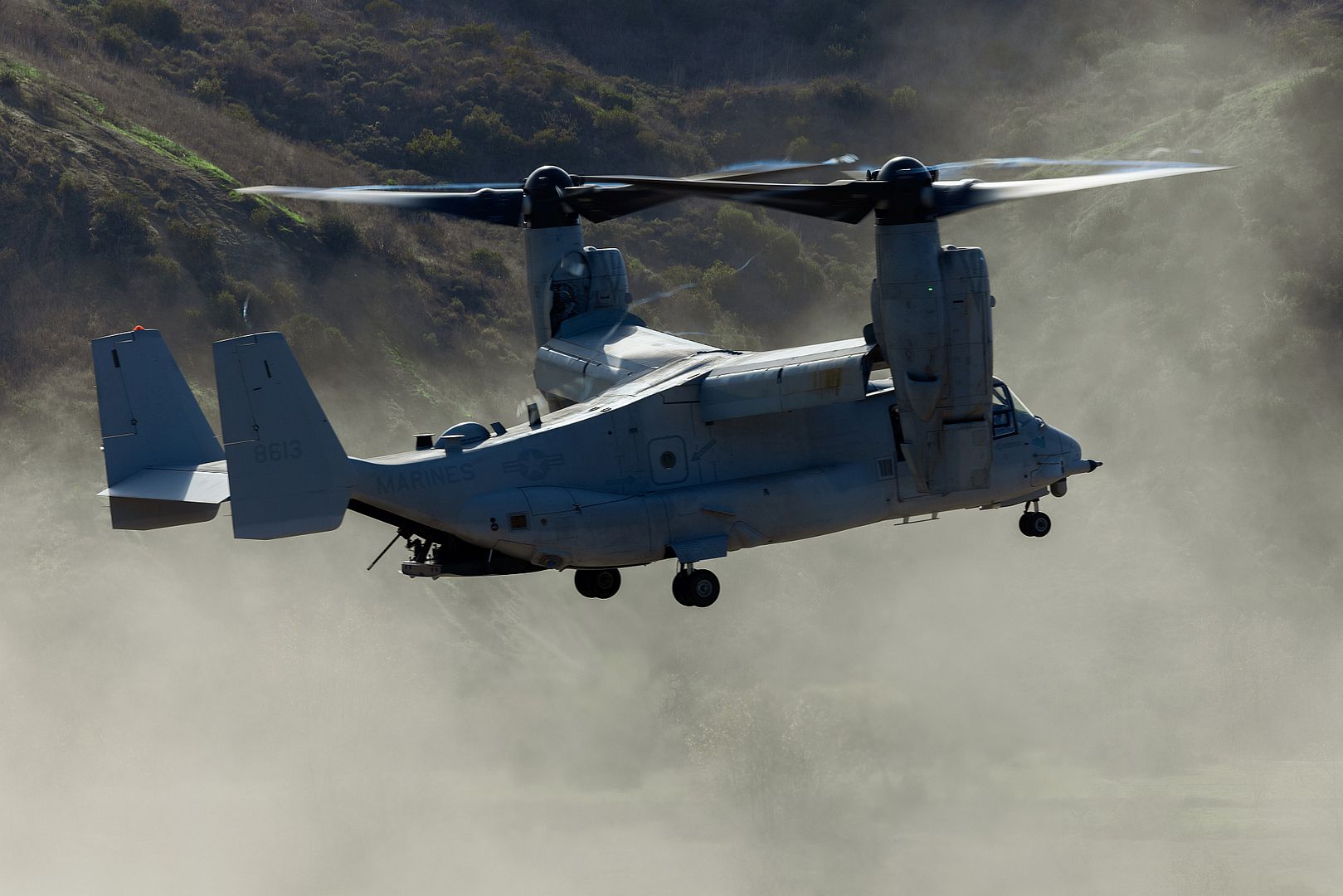
PACIFIC OCEAN (Dec. 4, 2022) An F/A-18F Super Hornet, from the “Fighting Redcocks” of Strike Fighter Squadron (VFA) 22, makes an arrested gear landing aboard the aircraft carrier USS Nimitz (CVN 68). Nimitz is underway conducting routine operations. (U.S. Navy photo by Mass Communication Specialist 2nd Class Justin McTaggart)
PHILIPPINE SEA (Dec. 5, 2022) Sailors prepare an F/A-18E Super Hornet, attached to the Dambusters of Strike Fighter Squadron (VFA) 195, for launch on the flight deck of the U.S. Navy’s only forward-deployed aircraft carrier, USS Ronald Reagan (CVN 76), in the Philippine Sea, Dec. 5. The Dambusters earned their nickname on May 1, 1951 when the squadron's Skyraiders destroyed the heavily defended and strategically positioned Hwacheon Dam in North Korea with aerial torpedoes by making precise low level runs. Ronald Reagan, the flagship of Carrier Strike Group 5, provides a combat-ready force that protects and defends the United States, and supports Alliances, partnerships and collective maritime interests in the Indo-Pacific region. (U.S. Navy photo by Mass Communication Specialist 3rd Class Dallas A. Snider)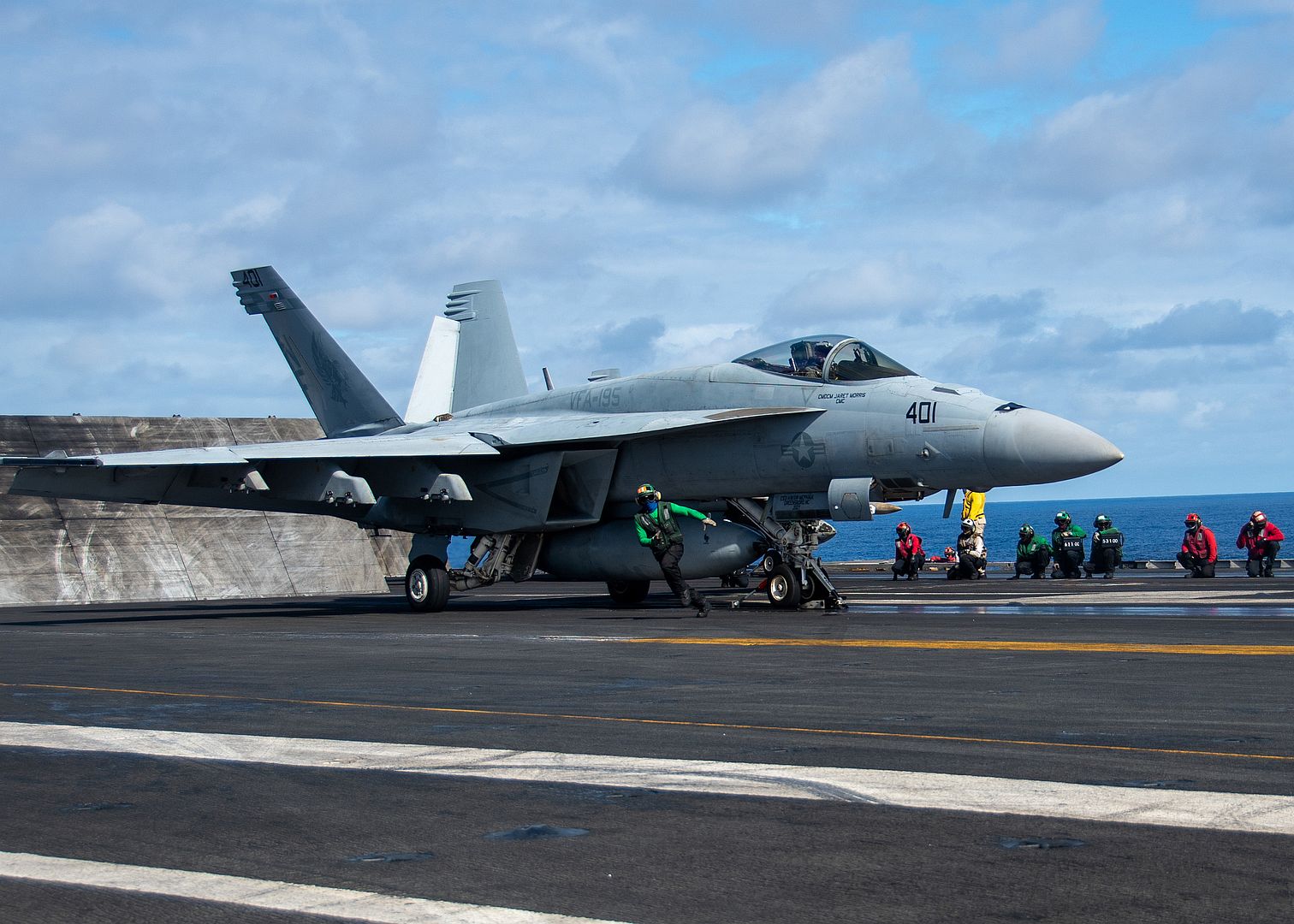
PACIFIC OCEAN (Dec. 5, 2022) – An AH-1Z Viper helicopter assigned to Marine Light Attack Helicopter Squadron (HMLA) 369 flies over amphibious assault carrier USS Tripoli (LHA 7) Dec. 5, 2022. Tripoli is underway conducting routine operations in U.S. 3rd Fleet. (U.S. Navy photo by Mass Communication Specialist 1st Class Peter Burghart)
U.S. Navy Blue Angels visit Tinker Air Force Base, Oklahoma, December 6, 2022.
(U.S. Air Force photo by Mary Begy)
Providence, R.I. (December, 5. 2022) –Textron Inc (NYSE: TXT) announced today that Bell Textron Inc., a Textron company, has been awarded the development contract for the U.S. Army’s Future Long-Range Assault Aircraft (FLRAA) program. The award is based on Bell’s V-280 Valor tiltrotor that was developed and tested as part of the Joint Multi-Role Technology Demonstrator (JMR TD) program that began in 2013. The V-280 progressed through design, manufacturing, and more than three years of rigorous flight testing that provided extensive data validating the technical and operational advantages of the aircraft for the long-range assault mission.
"We are honored that the U.S. Army has selected the Bell V-280 Valor as its next-generation assault aircraft," said Scott C. Donnelly, Textron’s chairman and chief executive officer. "We intend to honor that trust by building a truly remarkable and transformational weapon system to meet the Army’s mission requirements. We are excited to play an important role in the future of Army Aviation."
“This is an exciting time for the U.S. Army, Bell, and Team Valor as we modernize the Army’s aviation capabilities for decades to come,” said Mitch Snyder, president and CEO of Bell. “Bell has a long history supporting Army Aviation and we are ready to equip Soldiers with the speed and range they need to compete and win using the most mature, reliable, and affordable high-performance long-range assault weapon system in the world.”
This award builds on a decade of the V-280 Valor’s progress through design, manufacturing, and thorough testing to demonstrate that this aircraft will deliver on the FLRAA program requirements. Bell and its industry partners have systematically validated the V-280 aircraft and their modular open systems approach in collaboration with the Army.
“For the past several years the Bell team demonstrated the exceptional operational capabilities, digital thread synergies, and platform affordability enhancements the V-280 provides,” said Keith Flail, executive vice president, Advanced Vertical Lift Systems at Bell. “Bell stands ready with our world-class manufacturing facilities to apply our nearly seven decades of tiltrotor expertise to deliver a modern FLRAA fleet to the Army.”
The initial contract refines the weapon system design, sustainment, digital enterprise, manufacturing, systems integration, flight-testing, and airworthiness qualification.
This award builds on Bell’s history of more than 85 years delivering over 30,000 trusted vertical lift products to military and commercial customers in the U.S. and around the world.
-
 Main AdminU.S. Marine Corps MV-22B Osprey with Marine Medium Tilt Rotor Squadron 165, Marine Air Group 16, 3rd Marine Aircraft Wing (MAW), flies to the Laguna node during exercise Steel Knight 23, on Camp Wilson, Marine Corps Air Ground Combat Center Twentynine Palms, California, Dec. 6, 2022. Exercise Steel Knight 23 provides 3rd MAW an opportunity to refine Wing-level warfighting in support of I Marine Expeditionary Force and fleet maneuver. (U.S. Marine Corps photo by Cpl. Sean Potter)
Main AdminU.S. Marine Corps MV-22B Osprey with Marine Medium Tilt Rotor Squadron 165, Marine Air Group 16, 3rd Marine Aircraft Wing (MAW), flies to the Laguna node during exercise Steel Knight 23, on Camp Wilson, Marine Corps Air Ground Combat Center Twentynine Palms, California, Dec. 6, 2022. Exercise Steel Knight 23 provides 3rd MAW an opportunity to refine Wing-level warfighting in support of I Marine Expeditionary Force and fleet maneuver. (U.S. Marine Corps photo by Cpl. Sean Potter)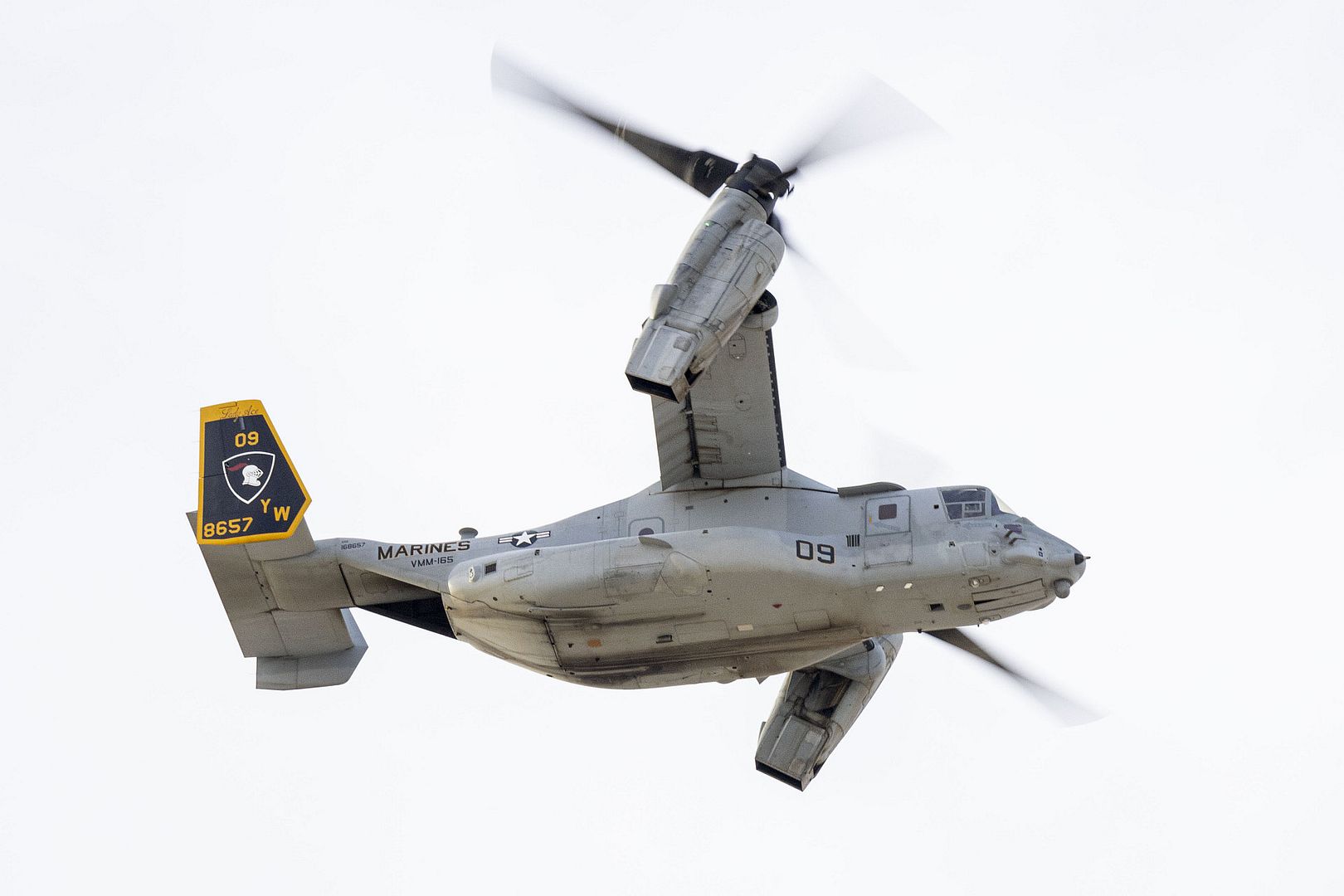
U.S. Air Force Maj. Kristin "BEO" Wolfe, F-35A Lightning II Demonstration Team commander and pilot, flies during a demonstration rehearsal Dec. 6, 2022, at Hill Air Force Base, Utah. The team performed a brief show for local news media to showcase the end of the air show season. (U.S. Air Force photo by Cynthia Griggs)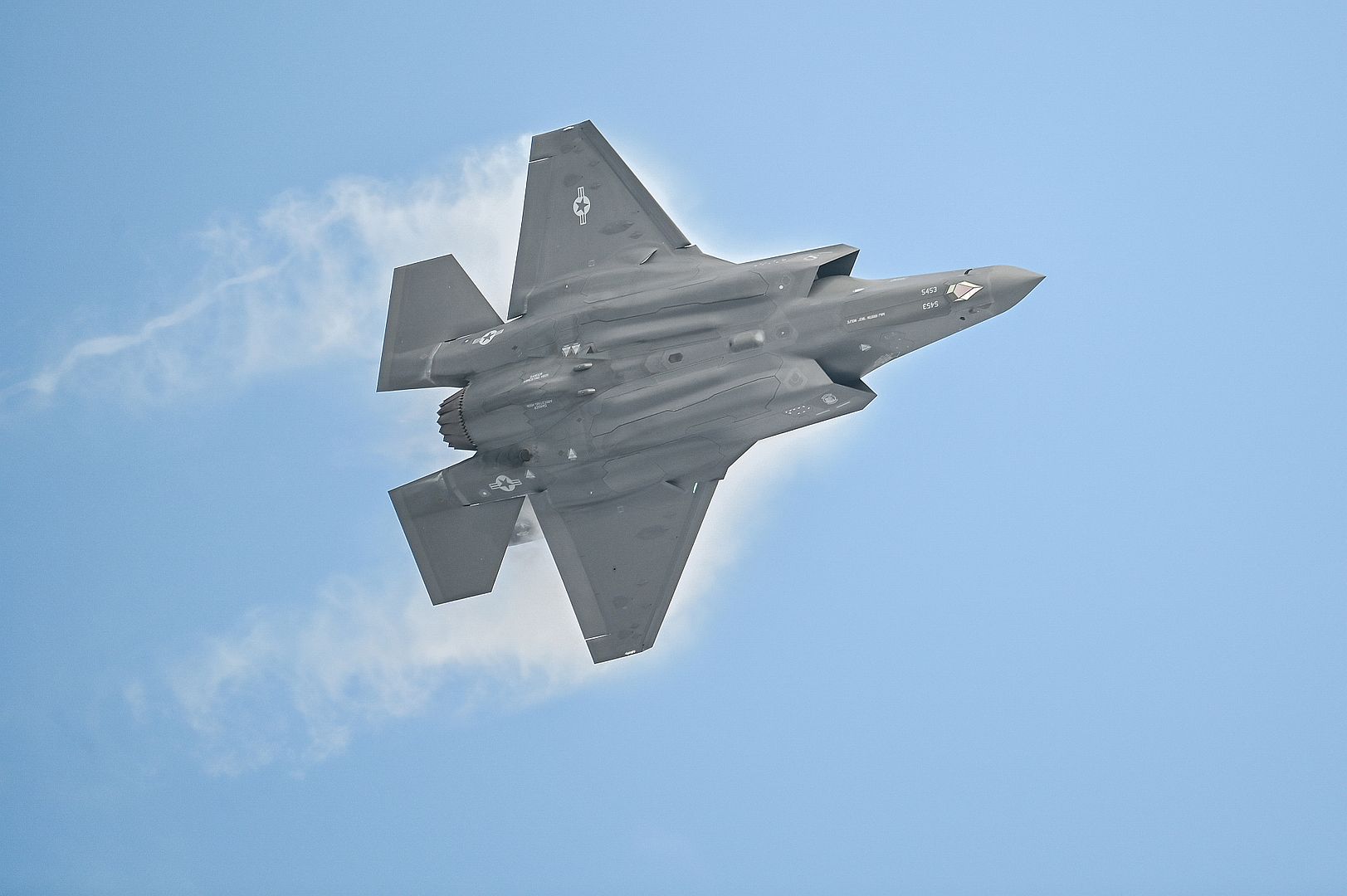
PHILIPPINE SEA (Dec. 7, 2022) An EA-18G Growler, attached to the Shadowhawks of Electronic Attack Squadron (VAQ) 141, lands on the flight deck of the U.S. Navy’s only forward-deployed aircraft carrier, USS Ronald Reagan (CVN 76), in the Philippine Sea, Dec. 7. The primary role of EA-18G Growlers is to disrupt the ability to communicate between units in combat through the use of electronic warfare. Ronald Reagan, the flagship of Carrier Strike Group 5, provides a combat-ready force that protects and defends the United States, and supports Alliances, partnerships and collective maritime interests in the Indo-Pacific region. (U.S. Navy photo by Mass Communication Specialist 3rd Class Dallas A. Snider)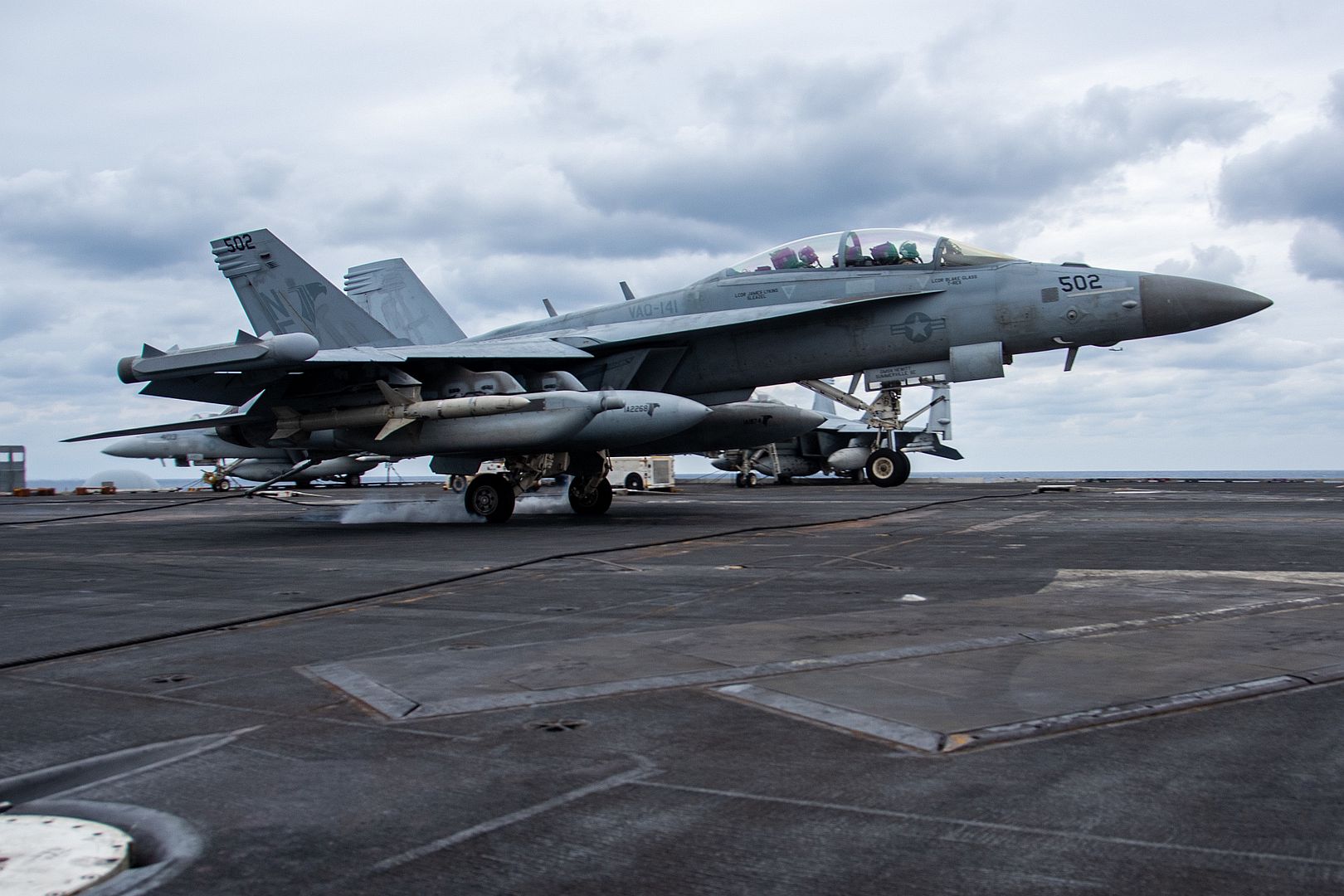
PHILIPPINE SEA (Dec. 7, 2022) Chief Aviation Boatswain’s Mate (Handling) Terry Keyes, from Bay Springs, Mississippi, directs an F/A-18F Super Hornet, attached to the Diamondbacks of Strike Fighter Squadron (VFA) 102, on the flight deck of the U.S. Navy’s only forward-deployed aircraft carrier, USS Ronald Reagan (CVN 76), in the Philippine Sea, Dec. 7. The Diamondbacks conduct carrier-based air strikes and strike force escort missions, as well as ship, battle group, and intelligence collection operations. Ronald Reagan, the flagship of Carrier Strike Group 5, provides a combat-ready force that protects and defends the United States, and supports Alliances, partnerships and collective maritime interests in the Indo-Pacific region. (U.S. Navy photo by Mass Communication Specialist 3rd Class Dallas A. Snider)
An F-16 Fighting Falcon assigned to the 309th Fighter Squadron sits on display at the 56th Operations and Maintenance Group Open House, Dec. 2, 2022, at Luke Air Force Base, Arizona. The open house showcased both past and present technologies used by the U.S. Air Force to base personnel, honorary commanders, and residents from the surrounding community. (U.S. Air Force photo by Senior Airman David Busby)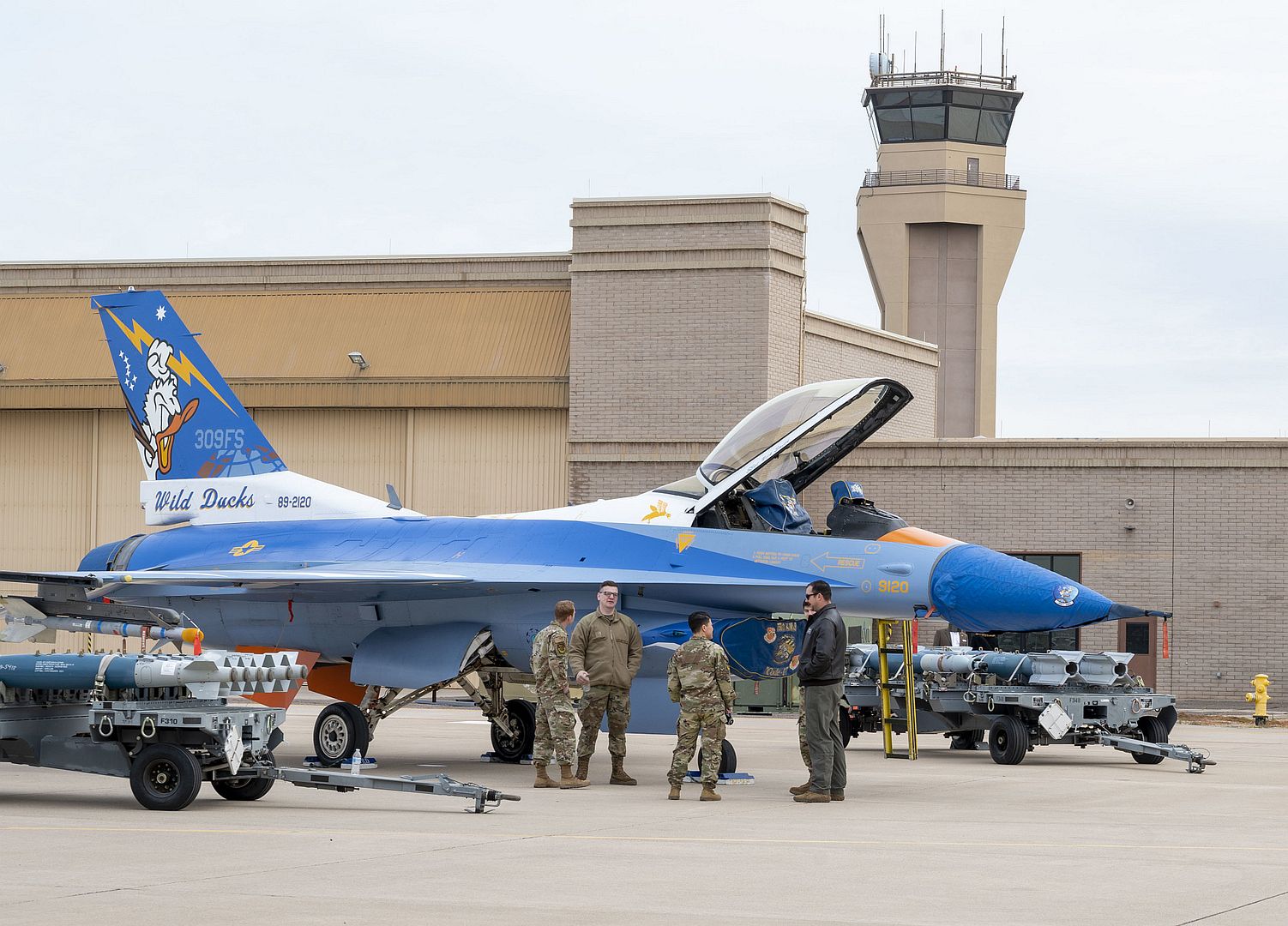
EVERETT, Wash., Dec. 6, 2022 /PRNewswire/ -- The last Boeing (NYSE: BA) 747 left the company's widebody factory in advance of its delivery to Atlas Air in early 2023.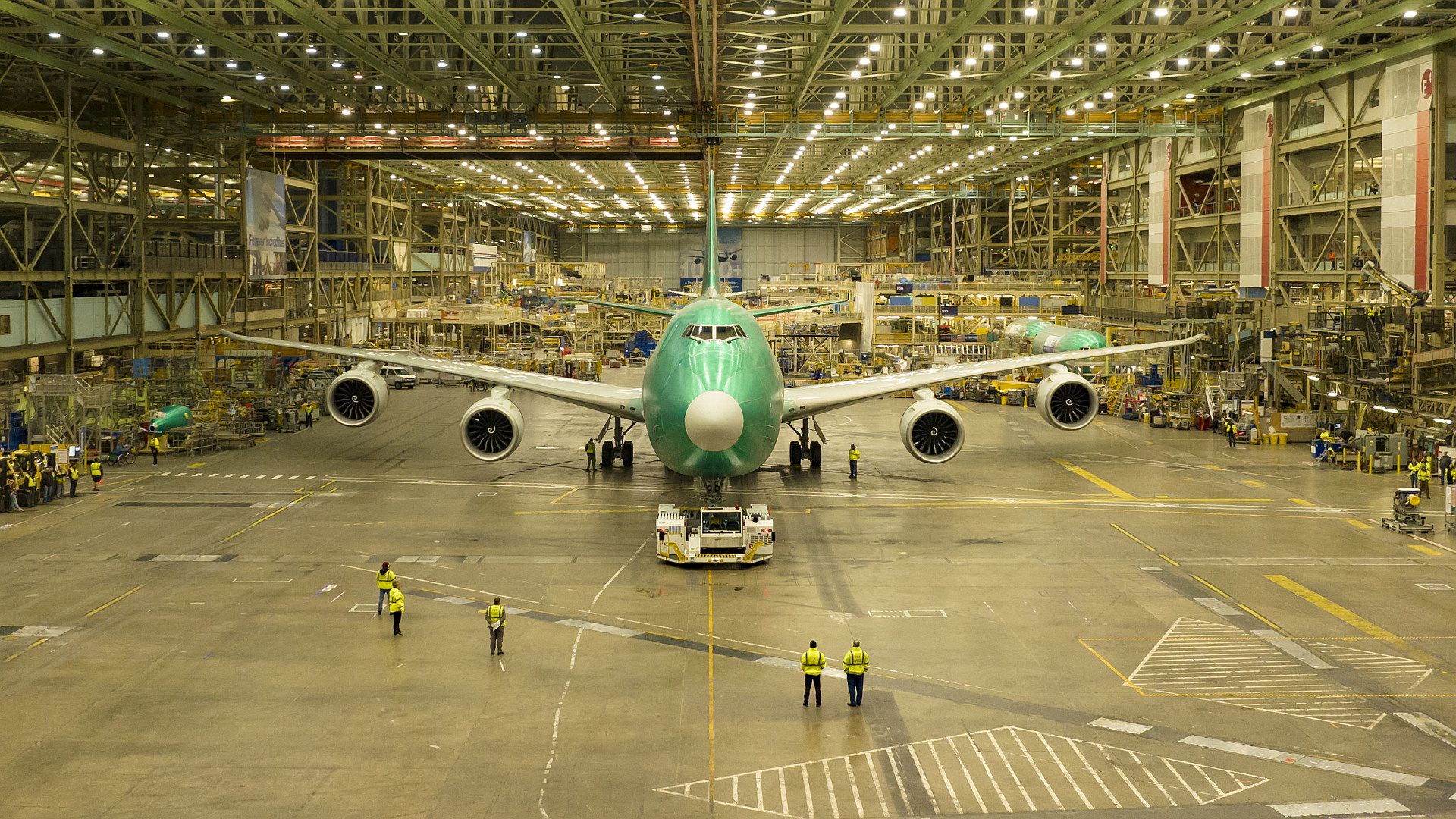
"For more than half a century, tens of thousands of dedicated Boeing employees have designed and built this magnificent airplane that has truly changed the world. We are proud that this plane will continue to fly across the globe for years to come," said Kim Smith, Boeing Vice President and general manager, 747 and 767 Programs.
The 747 has played a key role in Boeing's history of aerospace leadership.
Production of the 747, the world's first twin-aisle airplane, began in 1967 and spanned 54 years, during which a total of 1,574 airplanes were built.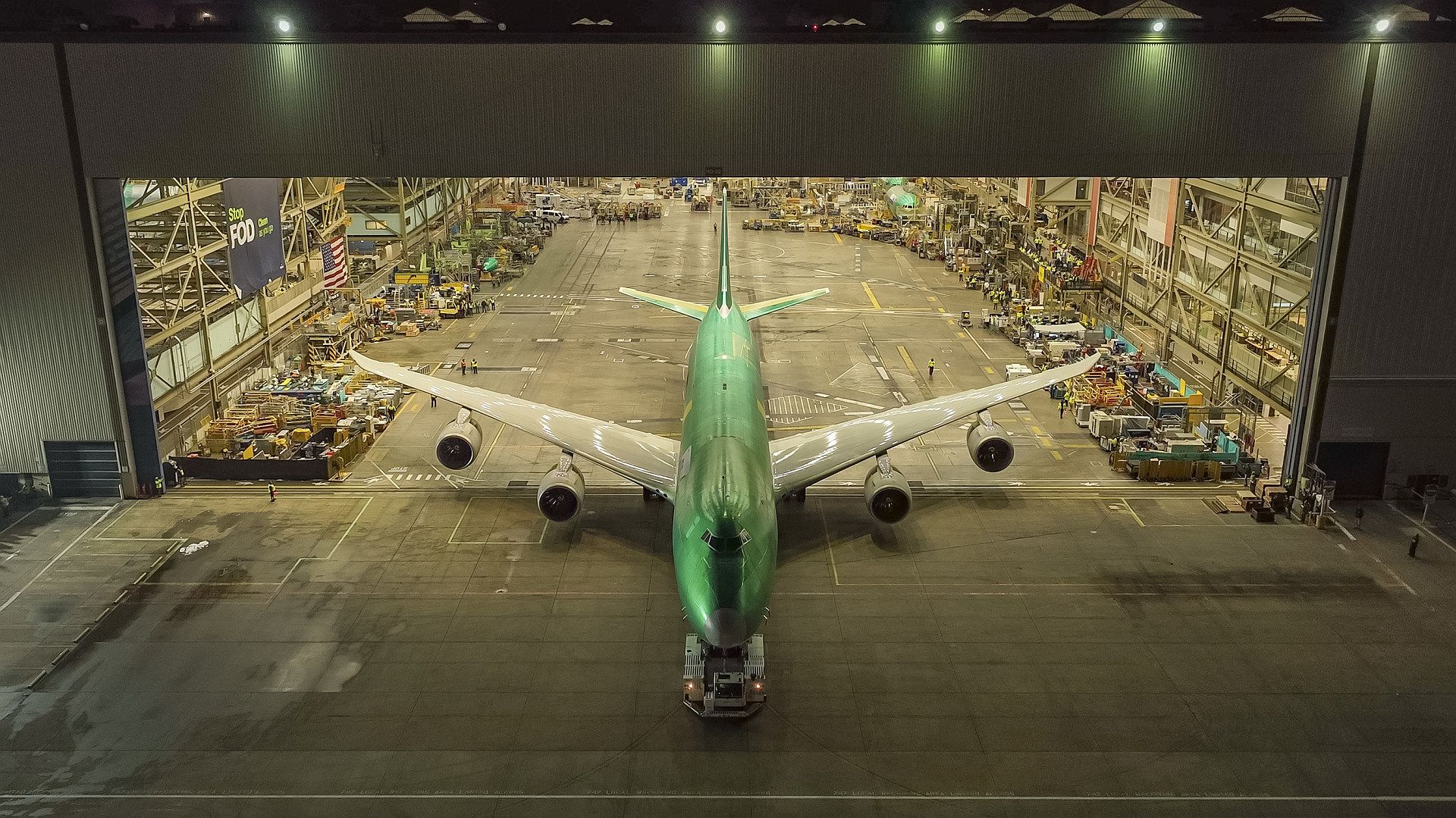
At 250 ft 2 in (76.2 m), the 747-8 is the longest commercial aircraft in service. At typical cruising speeds, the 747-8 travels roughly the length of three FIFA soccer fields or NFL football fields, per second.
The final airplane is a 747-8 Freighter. This model has a revenue payload of 133.1 tonnes, enough to transport 10,699 solid-gold bars or approximately 19 million ping-pong balls or golf balls.
As a leading global aerospace company, Boeing develops, manufactures and services commercial airplanes, defense products and space systems for customers in more than 150 countries. As a top U.S. exporter, the company leverages the talents of a global supplier base to advance economic opportunity, sustainability and community impact. Boeing's diverse team is committed to innovating for the future, leading with sustainability, and cultivating a culture based on the company's core values of safety, quality and integrity. Join our team and find your purpose at boeing.com/careers.
Toulouse, 07 December 2022 – Air Greenland has taken delivery of an A330-800 widebody aircraft, becoming the latest operator of the type.
The A330neo will replace previous generation aircraft in the company's fleet, reducing operating cost, improving environmental efficiency while offering an unrivalled passenger experience. Air Greenland’s A330neo will comfortably accommodate 305 passengers, featuring 42 Premium class seats and 263 Economy class seats.
Air Greenland has also firmed up an agreement with Airbus on Flight Hour Services (FHS) covering component supply and maintenance services. Based on a circular economy model and carbon footprint reduction the Airbus FHS offers more sustainability throughout the aircraft's life cycle. More than 1,200 aircraft worldwide are currently being contracted under Airbus FHS.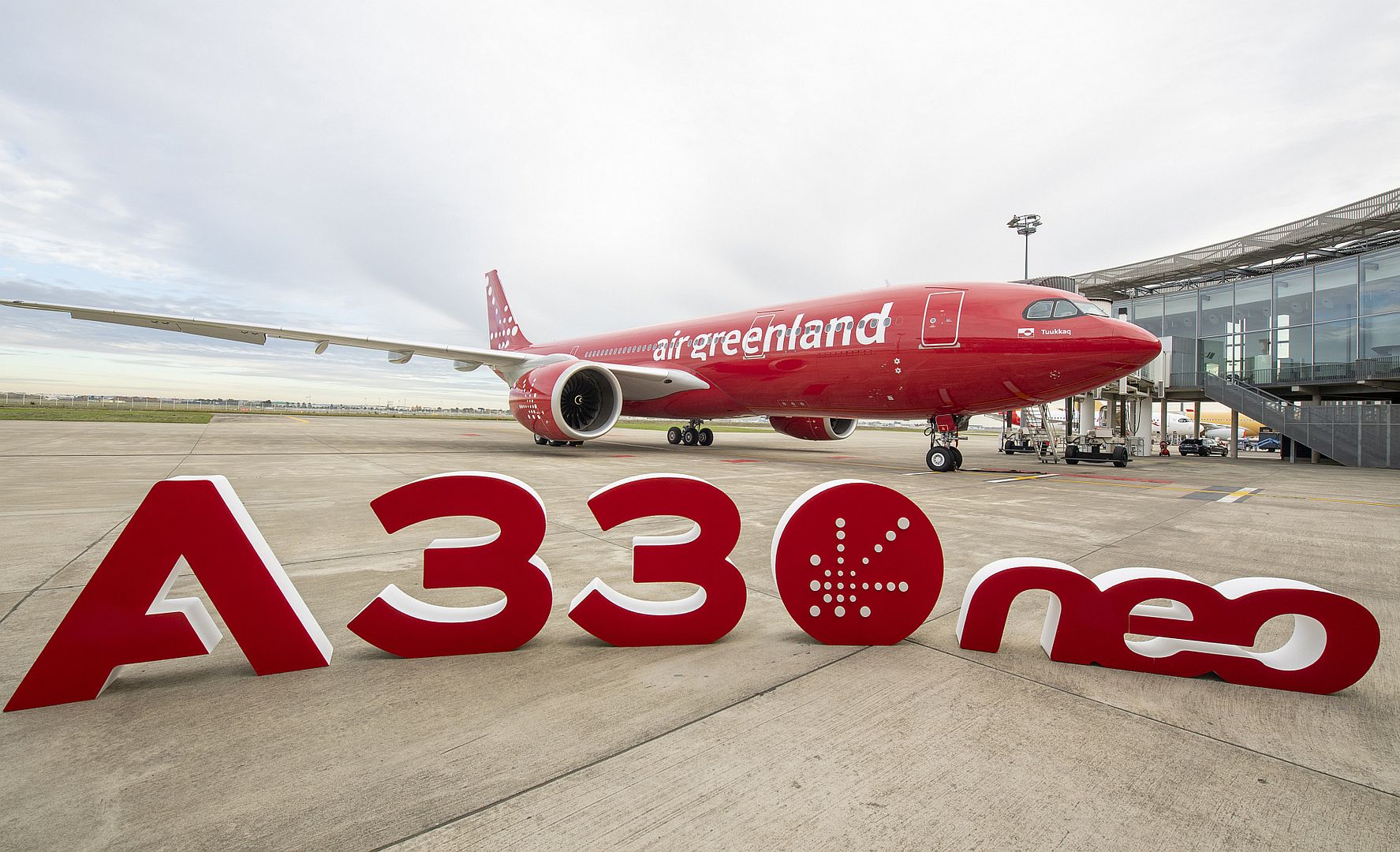
To underline Air Greenland’s sustainability strategy the delivery flight will be powered by a 30 percent blend of sustainable aviation fuel (SAF).
Air Greenland will first deploy the A330neo between the arctic island and Denmark, adding North American and European routes at a later date.
The A330neo features the award-winning Airspace cabin, providing passengers with a high level of comfort, ambience and design. This includes offering more personal space, larger overhead bins, a new lighting system, and the ability to offer the latest in-flight entertainment systems and full connectivity. As with all Airbus aircraft, the A330neo also features a state-of-the-art cabin air system ensuring a clean and safe environment during the flight.
The A330neo is the new generation version of the popular A330 widebody. Incorporating the latest generation Rolls-Royce Trent 7000 engines, new wings and a range of aerodynamic innovations, the aircraft offers a 25 percent reduction in fuel consumption and CO2 emissions. The A330-800 is capable of flying 8 150 nm / 15 094 km non-stop.
At the end of October, the A330 Family had registered a total of over 1,700 firm orders of which 275 are A330neos from 24 customers.
Rome, 07 December 2022
Leonardo announced today that Bristow Group Inc. (NYSE: VTOL) has signed a contract to procure six AW139 intermediate twin engine helicopters to support the Second-Generation Search and Rescue Aviation ("UKSAR2G") programme by the U.K. Maritime and Coastguard Agency (MCA). Aircraft’s deliveries are expected to start in 2023 and to be completed in 2024, joining an existing fleet of nine AW189 super medium twin engine SAR helicopters as part of the UKSAR2G programme.
These latest AW139s will feature the very latest in product enhancement, technology and mission capability for the task including a 7-ton MTOW (Maximum Take-Off Weight), Honeywell Primus Epic integrated avionics Phase 8, an advanced Synthetic Vision System (SVS), improved 2D maps and wireless data loading, which will deliver even greater all-weather capabilities and mission effectiveness. Furthermore, these AW139s will also feature a Limited Ice Protection System (LIPS) to deliver even greater mission capability in demanding weather conditions. This new fleet of AW139 SAR helicopters for the UKSAR2G requirement will benefit from the new Leonardo-Bristow long-term global service programme. The aircraft will also undergo a mission system integration to be carried out by Bristow in partnership with Nova Systems after their delivery, ensuring an even greater involvement of UK-based industry.
Gian Piero Cutillo, MD Leonardo Helicopters, said: “This latest step supporting our key partner Bristow to meet major users’ needs is further testament to the outstanding capabilities of our best-selling AW139 as the aircraft of choice in its category for SAR among prime operators and countries. It perfectly complements the medium to long range SAR capabilities of the AW189 delivering unparalleled combined capabilities for the task. We’re proud to continue to provide our contribution to the MCA partnership with this type, its technology and support solutions will benefit the served communities in UK.”
Leonardo and Bristow have been partners for over 26 years with Bristow using a range of types including the AW119 single engine, AW109 light twin, AW139 intermediate twin and AW189 super medium. Bristow’s fleet of Leonardo helicopters will account for nearly 100 units with the arrival of these additional six AW139s. Bristow’s Leonardo helicopters have successfully accomplished missions such as offshore transport supporting the energy industry, SAR, and emergency medical service throughout the Americas, Europe, Africa, and Australasia.
With more than 1,100 units in service with over 280 customers in around 90 nations and over 3.3 million flight hours logged to date since its certification in 2004, the AW139 has also proven extremely successful for rescue and emergency missions. Almost 400 aircraft, covering military, parapublic and civil operators, carry out emergency and disaster relief operations worldwide and have amassed more than 900,000 flight hours to date. A unique combination of best in class performance and cabin space, latest safety and certification standards (even exceeded in some cases), advanced navigation and mission avionics/technology and impressive versatility and high customisation levels (with over 1000 kits certified for all applications) have strongly contributed to this life-saving mission capability of the AW139.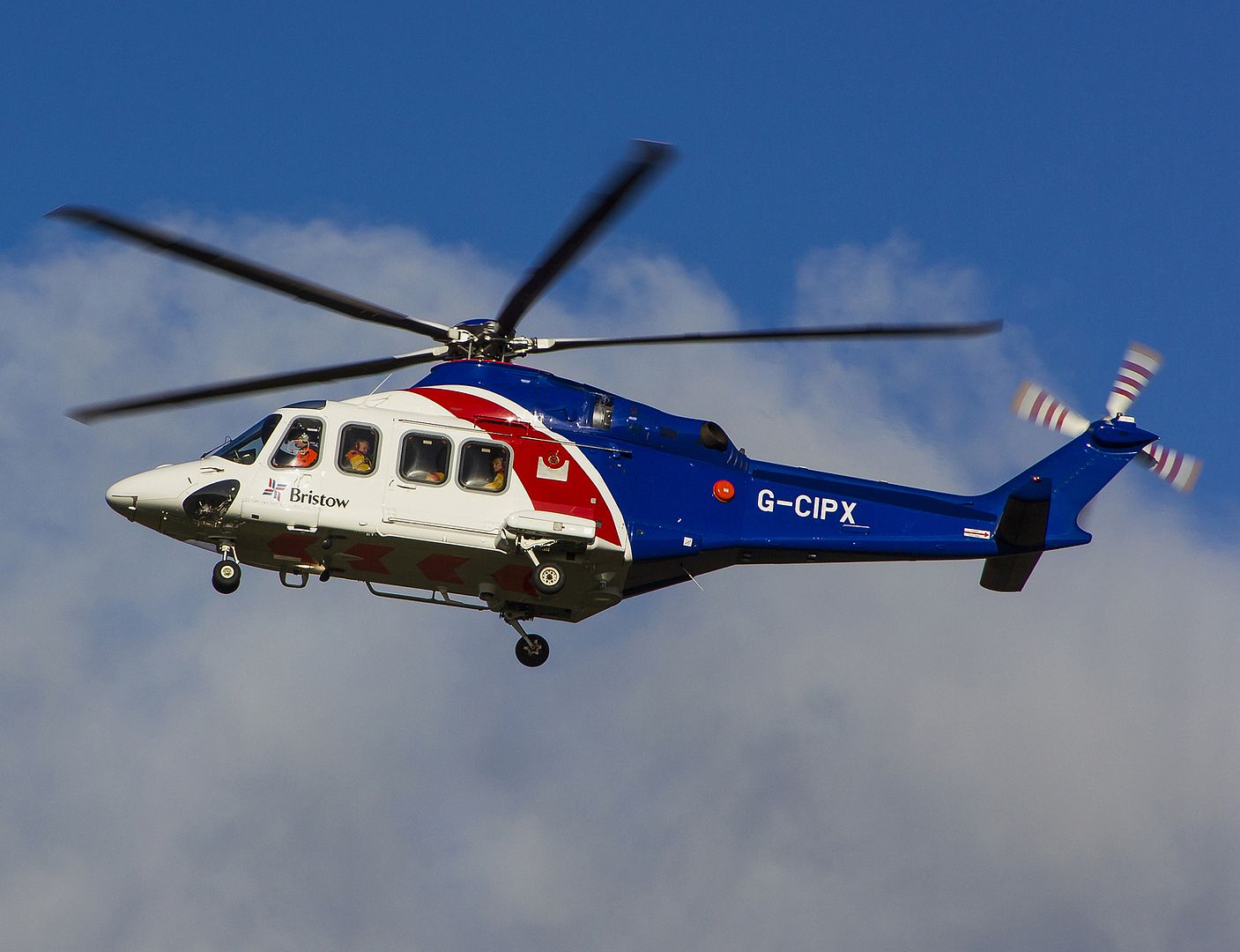
SAN DIEGO – 06 December 2022 – On November 22, 2022, a General Atomics Aeronautical Systems, Inc. (GA-ASI) MQ-9A Remotely Piloted Aircraft that is on lease from GA-ASI to India’s Navy completed its 10,000th flight hour in support of India national security missions. The 10,000-flight hour mark has been achieved by two MQ-9As being operated by the Indian Navy during a period of almost exactly two years, with the maiden flight of MQ-9A taking place on November 21, 2020.
“The Indian Armed Forces have been impressed by the MQ-9A’s over-the-horizon ISR support for surface units and Indian warships, as well as the exceptional endurance and operational availability of the platform,” said GA-ASI CEO Linden Blue. “Our MQ-9As have helped the Indian Navy to cover over 14 million square miles of operating area.”
The MQ-9As are supplied to India by GA-ASI as part of a Company-Owned, Company-Operated (COCO) lease agreement. GA-ASI is the world’s leading manufacturer of RPA systems, radars, and electro-optic and related mission systems solutions. MQ-9As are operated by the United States, the United Kingdom, France, Italy, the Netherlands, and Spain. GA-ASI’s newer MQ-9B variant has been acquired by the UK and on order for Belgium. The MQ-9B maritime surveillance configuration (SeaGuardian®) recently began operations in support of the Japan Coast Guard.
About GA-ASI
General Atomics-Aeronautical Systems, Inc. (GA-ASI), an affiliate of General Atomics, is a leading designer and manufacturer of proven, reliable remotely piloted aircraft (RPA) systems, radars, and electro-optic and related mission systems, including the Predator® RPA series and the Lynx® Multi-mode Radar. With more than seven million flight hours, GA-ASI provides long-endurance, mission-capable aircraft with integrated sensor and data link systems required to deliver persistent flight that enables situational awareness and rapid strike. The company also produces a variety of ground control stations and sensor control/image analysis software, offers pilot training and support services, and develops meta-material antennas. For more information, visit www.ga-asi.com
-
 Main AdminU.S. Marines with Marine Fighter Attack Squadron (VMFA) 312 conduct pre-flight inspections for F/A -18D Hornet aircraft during Ryukyu Vice 23.1 at Kadena Air Base, Okinawa, Japan, Dec. 6, 2022. Ryukyu Vice is a joint, fixed-wing aviation command and control exercise that provides critical training to 1st Marine Aircraft Wing tactical air control personnel through offensive, defensive and counter-air live-flight scenarios. (U.S. Marine Corps photo by Lance Cpl. Samantha Rodriguez)
Main AdminU.S. Marines with Marine Fighter Attack Squadron (VMFA) 312 conduct pre-flight inspections for F/A -18D Hornet aircraft during Ryukyu Vice 23.1 at Kadena Air Base, Okinawa, Japan, Dec. 6, 2022. Ryukyu Vice is a joint, fixed-wing aviation command and control exercise that provides critical training to 1st Marine Aircraft Wing tactical air control personnel through offensive, defensive and counter-air live-flight scenarios. (U.S. Marine Corps photo by Lance Cpl. Samantha Rodriguez)
Air Force One taxis at Luke Air Force Base, Arizona, Dec. 6, 2022. Members of the 56th Fighter Wing supported U.S. President Joseph R. Biden’s visit to Arizona, where he toured a newly constructed semiconductor manufacturing facility. (U.S. Air Force photo by Staff Sgt. Noah D. Coger)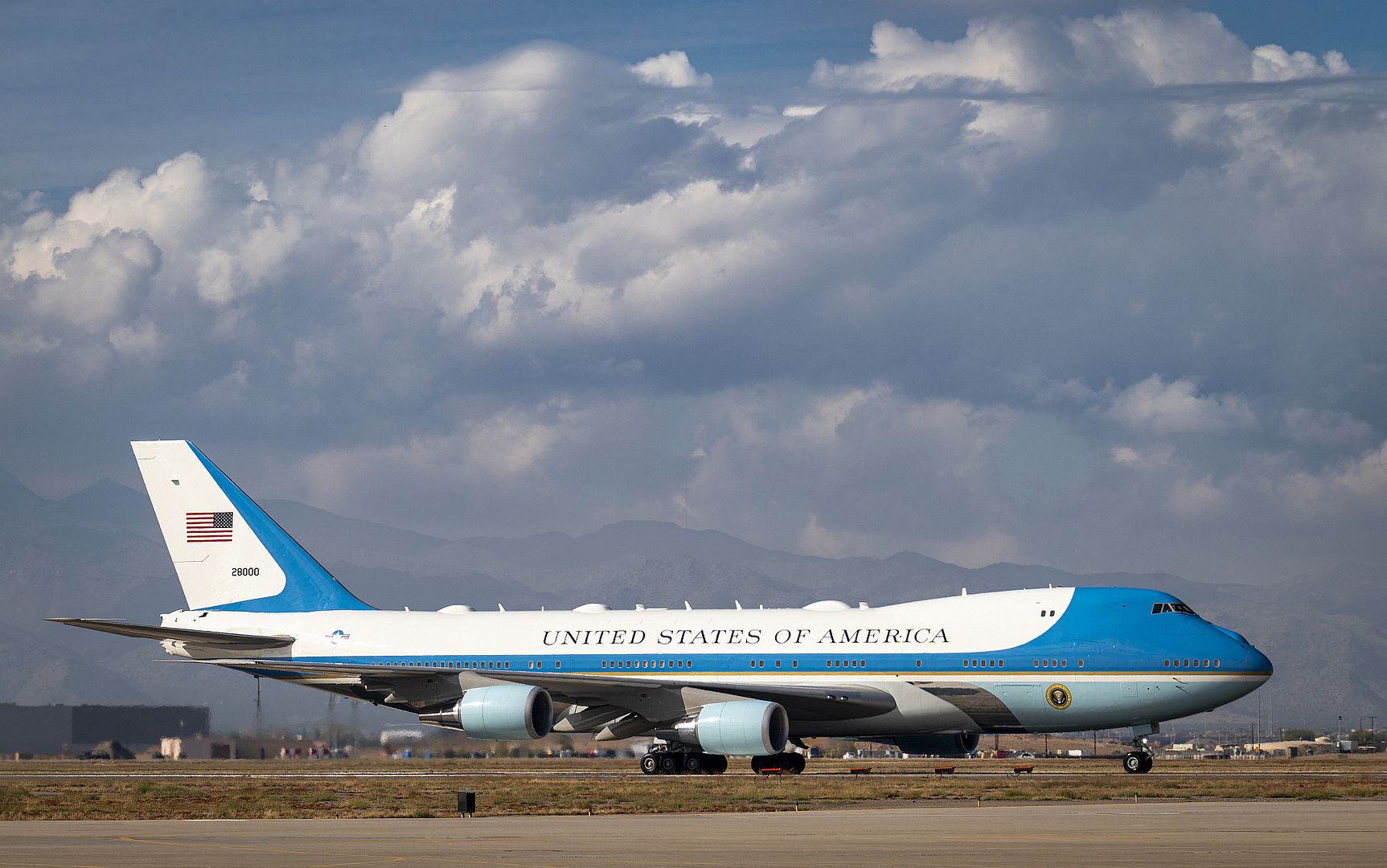
PHILIPPPINE SEA (Dec. 8, 2022) A Super Puma (EC-225) helicopter takes off from the flight deck of the U.S. Navy’s only forward-deployed aircraft carrier, USS Ronald Reagan (CVN 76), during a vertical replenishment with the Military Sealift Command dry cargo and ammunition ship, USNS Charles Drew (T-AKE 10), in the Philippine Sea, Dec. 8. Commander, Logistics Group Western Pacific/Task Force 73 is the U.S. Navy's premiere maritime mobile logistics organization that supports the Seventh Fleet area of operations. Located to Southeast Asia COMLOG WESTPAC in conjunction with Military Sealift Command Far East, logistically supplies the U.S. Navy's deployed units in the Western Pacific along with regional Allies and partners. Ronald Reagan, the flagship of Carrier Strike Group 5, provides a combat-ready force that protects and defends the United States, and supports Alliances, partnerships and collective maritime interests in the Indo-Pacific region. (U.S. Navy photo by Mass Communication Specialist 3rd Class Oswald Felix Jr.)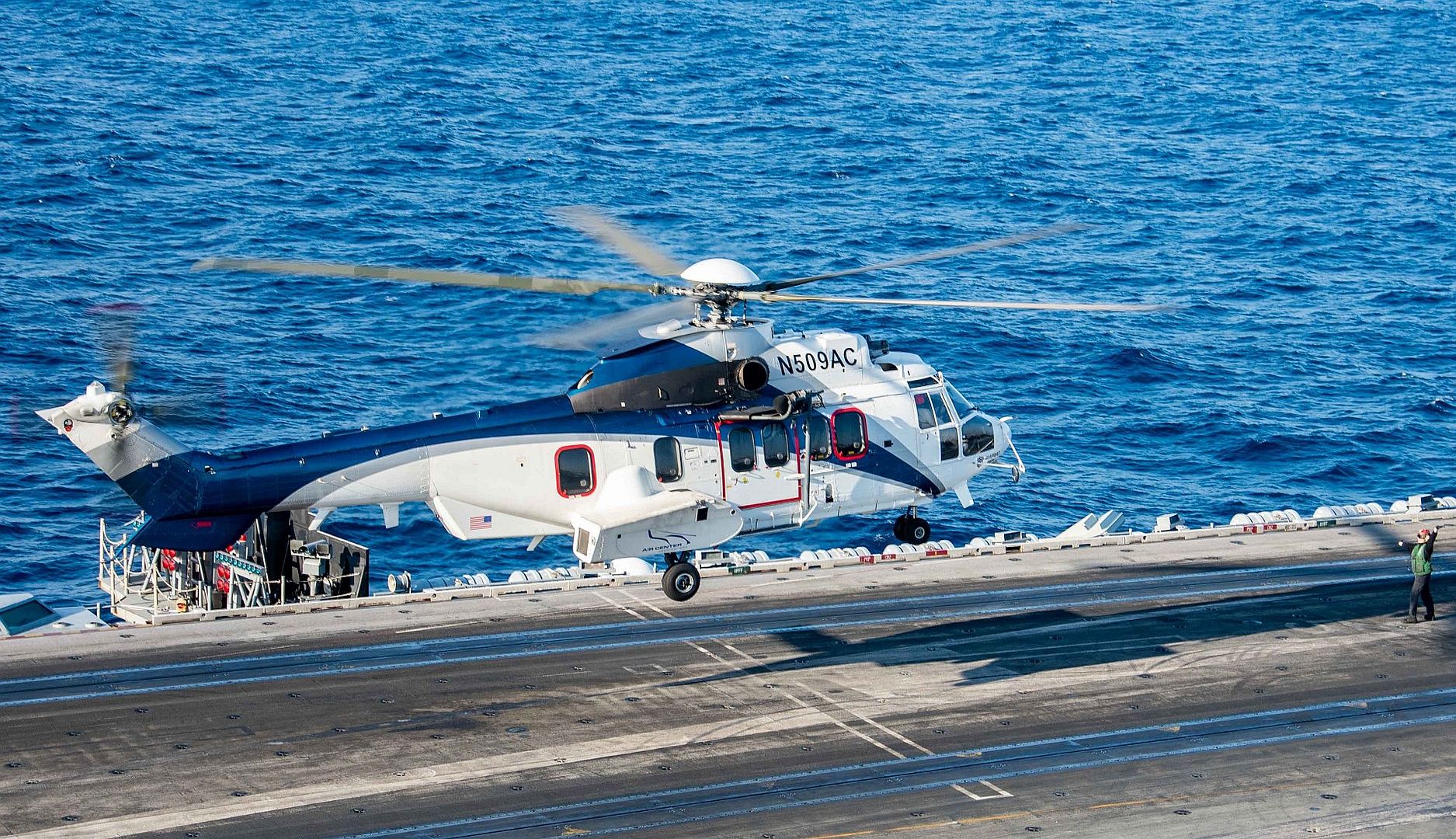
A French Air Force Rafale prepares to receive fuel from a U.S. Air Force KC-135 Stratotanker assigned to the 340th Expeditionary Air Refueling Squadron, in a joint aerial exercise in the U.S. Central Command area of responsibility, Dec. 2, 2022. The KC-135 provides U.S. and partner nation aircraft the ability to remain in the air for longer durations, maximizing their patrol time and ensuring regional stability. (U.S. Air Force photo by Tech. Sgt. Diana Cossaboom)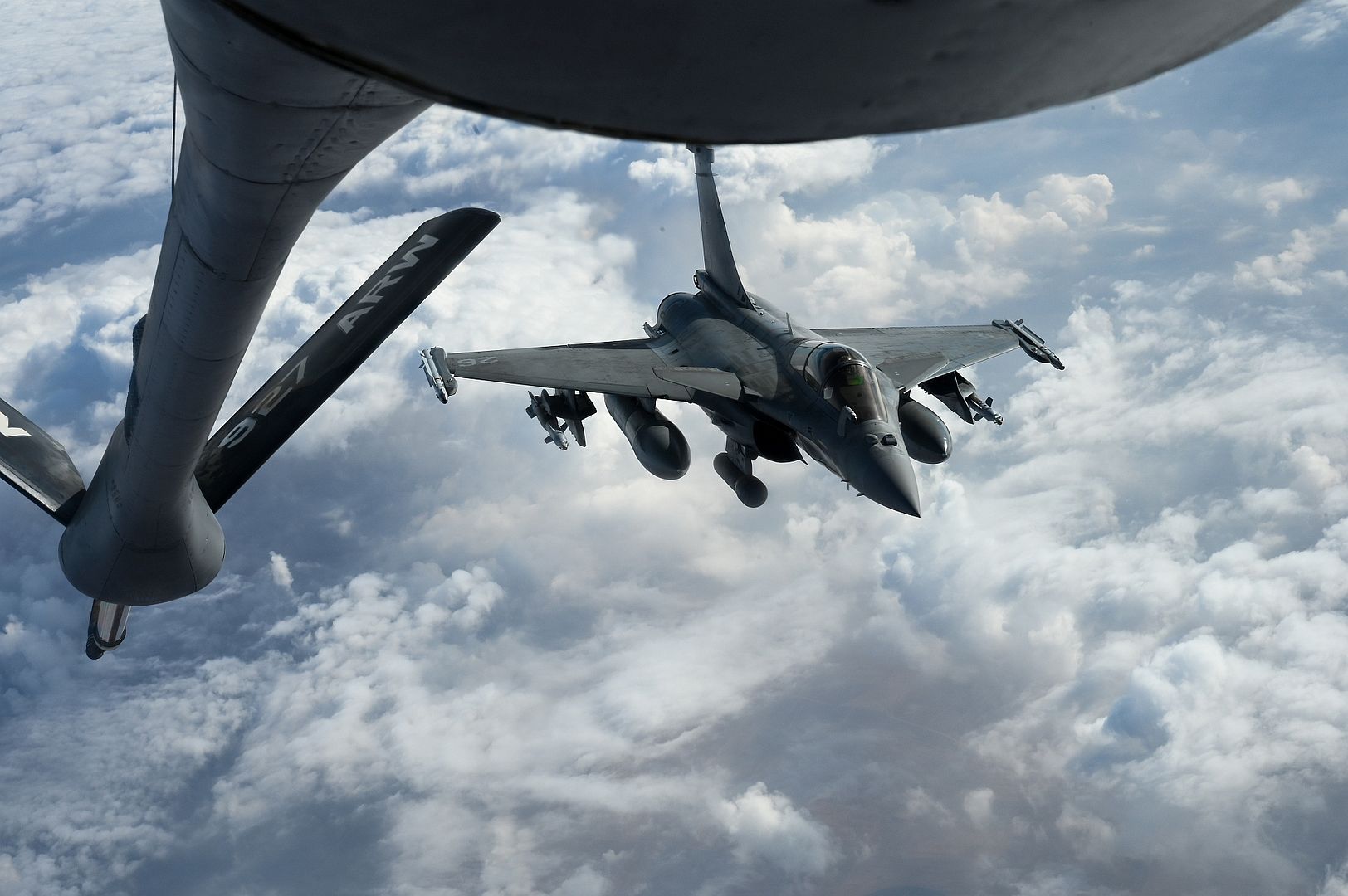
A French Air Force Rafale breaks off after receiving fuel from a U.S. Air Force KC-135 Stratotanker assigned to the 340th Expeditionary Air Refueling Squadron, in a joint aerial exercise in the U.S. Central Command area of responsibility, Dec. 2, 2022. The KC-135 provides U.S. and partner nation aircraft the ability to remain in the air for longer durations, maximizing their patrol time and ensuring regional stability. (U.S. Air Force photo by Tech. Sgt. Diana Cossaboom)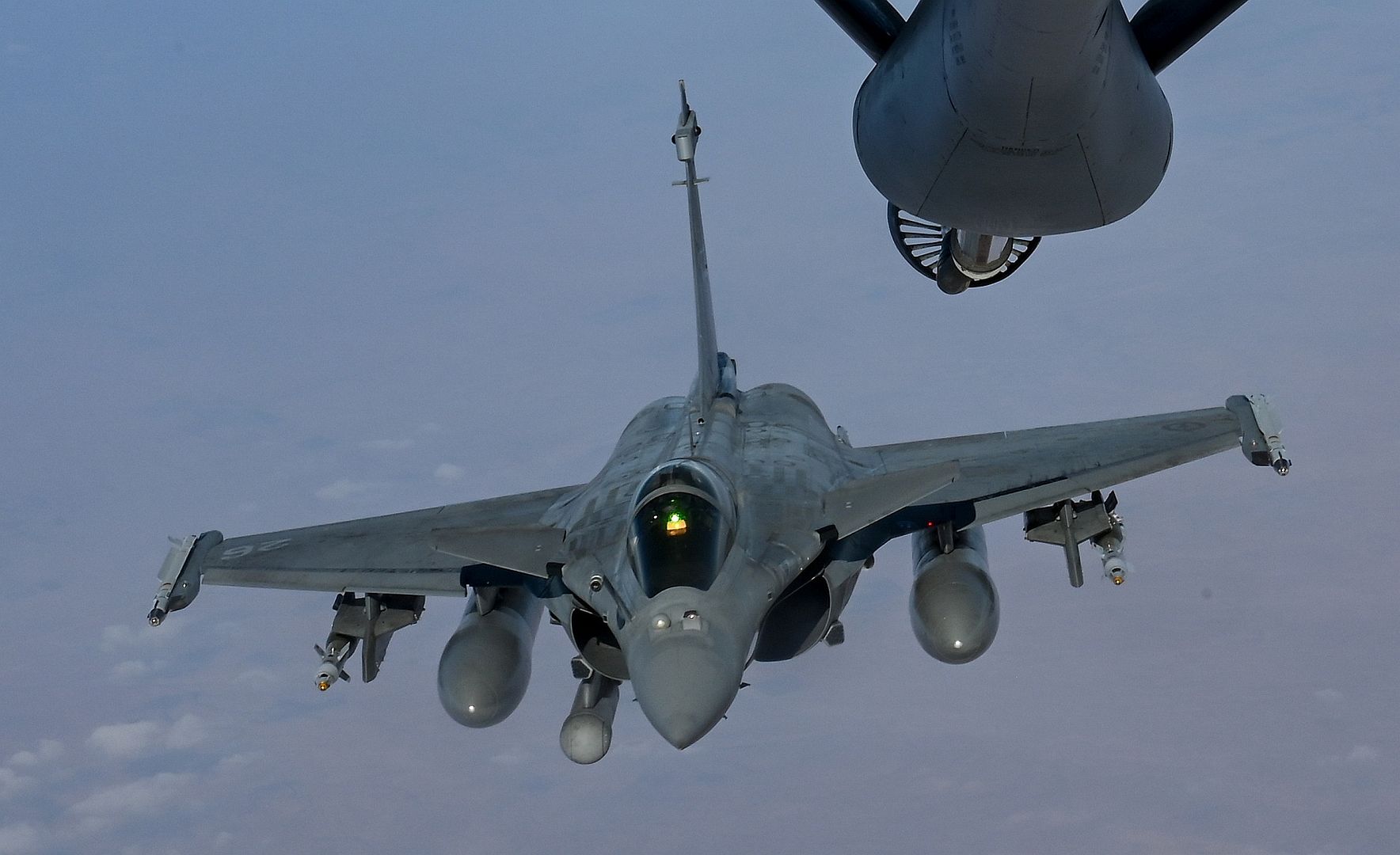
LOS ANGELES – Dec. 8, 2022 – Northrop Grumman Corporation (NYSE: NOC) has completed the fourth successful flight test of its AGM-88G Advanced Anti-Radiation Guided Missile Extended Range (AARGM-ER). The U.S. Navy launched the missile from an F/A-18 Super Hornet aircraft on November 30 at the Point Mugu Sea Range off the coast of southern California, successfully engaging an operationally-representative, moving maritime target.
“AARGM-ER’s performance during testing continues to validate the missile’s ability to detect, identify, locate and effectively engage critical air-defense targets from an extended range,” said CAPT. Alex Dutko, Navy Program Manager for Direct and Time Sensitive Strike (PMA-242). “This test proved the systems’ ability to engage moving maritime targets, a vital capability supporting our Navy’s ability to control sea lanes during conflict. Congratulations to the government/industry team for their continual focus on delivering this crucial capability to our warfighters.”
Northrop Grumman is currently under contract to deliver production units of AARGM-ER to support Initial Operational Capability fielding within the next two years. Northrop Grumman has received a low-rate initial production contract for the first and second lots of AARGM-ER.
AARGM-ER leverages existing AARGM sensors, electronics and digital models with the addition of a new high-performance air vehicle, solid rocket motor and advanced warhead to provide vital counter-air-defense capability for U.S Navy, Air Force and Marine Corps warfighters.
“The necessity for a reliable, standoff, survivable weapon continues to grow as our adversaries’ threat systems become longer range and more lethal,” said Gordon Turner, vice president, advanced weapons, Northrop Grumman. “AARGM-ER continues to demonstrate the ability to affordably meet mission requirements and safeguard those protecting our country.”
AARGM-ER is being integrated on the Navy F/A-18E/F Super Hornet and EA-18G Growler aircraft as well as the F-35 aircraft.
Northrop Grumman is a technology company, focused on global security and human discovery. Our pioneering solutions equip our customers with capabilities they need to connect, advance and protect the U.S. and its allies. Driven by a shared purpose to solve our customers’ toughest problems, our 90,000 employees define possible every day.
SEATTLE, Dec. 7, 2022—New Zealand today received the first of four Boeing [NYSE: BA] P-8A Poseidon maritime patrol aircraft in a ceremony at the Museum of Flight.
“As a maritime nation, delivery of the P-8A will ensure New Zealand maintains a patrol and response capability that will protect and support law enforcement in our Exclusive Economic Zone and Southern Ocean,” said Sarah Minson, acting Deputy Secretary Capability Delivery, New Zealand Ministry of Defence. “The P-8A will also assist our South Pacific neighbors and deliver long-range search and rescue capability.”
The milestone comes four years after the New Zealand Government entered into an agreement with the U.S. Navy for the P-8A.
“The unmatched, multi-mission maritime patrol capabilities of the P-8 will provide New Zealand the ability to extend their reach into the Pacific and beyond,” said Philip June, vice president and program manager, P-8 Programs. “New Zealand joins eight other global customers including nearby Australia that have selected or already operate the P-8 and benefit greatly from its long-range maritime surveillance and warfare capabilities.”
Boeing Defence Australia will provide sustainment services for New Zealand’s fleet with the support of the P-8 International Program.
New Zealand’s three remaining P-8 aircraft are all in advanced stages of production and will be delivered in 2023. The aircraft will replace New Zealand’s current fleet of six P-3K2 Orions and will be based at Royal New Zealand Air Force Base Ohakea.
To date, the global operating P-8 fleet has amassed more than 450,000 mishap-free flight hours. The P-8 is a long-range anti-submarine warfare, anti-surface warfare, intelligence, surveillance and reconnaissance aircraft capable of broad-area, maritime and littoral operations. In addition, the P-8 performs humanitarian and search and rescue missions around the globe.
As a leading global aerospace company, Boeing develops, manufactures and services commercial airplanes, defense products and space systems for customers in more than 150 countries. As a top U.S. exporter, the company leverages the talents of a global supplier base to advance economic opportunity, sustainability and community impact. Boeing's diverse team is committed to innovating for the future, leading with sustainability, and cultivating a culture based on the company's core values of safety, quality and integrity. Join our team and find your purpose at boeing.com/careers.
-
 Main AdminA Royal Canadian Air Force CH-149 Cormorant helicopter aircrew from 442 Transport and rescue squadron from 19 Wing Comox in British Columbia, Canada, land at Air Station Astoria in Warrenton, Oregon, Dec. 7, 2022. During the aircrew’s visit they were provided a tour of the air station and participated in joint search and rescue training. (U.S. Coast Guard photo by Petty Officer 1st Class Travis Magee)
Main AdminA Royal Canadian Air Force CH-149 Cormorant helicopter aircrew from 442 Transport and rescue squadron from 19 Wing Comox in British Columbia, Canada, land at Air Station Astoria in Warrenton, Oregon, Dec. 7, 2022. During the aircrew’s visit they were provided a tour of the air station and participated in joint search and rescue training. (U.S. Coast Guard photo by Petty Officer 1st Class Travis Magee)
PHILIPPINE SEA (Dec. 9, 2022) An F/A-18E Super Hornet, attached to the Royal Maces of Strike Fighter Squadron (VFA) 27, launches on the flight deck of the U.S. Navy’s only forward-deployed aircraft carrier, USS Ronald Reagan (CVN 76), in the Philippine Sea, Dec. 9. The Royal Maces conduct carrier-based air strikes and strike force escort missions, as well as ship, battle group, and intelligence collection operations. Ronald Reagan, the flagship of Carrier Strike Group 5, provides a combat-ready force that protects and defends the United States, and supports Alliances, partnerships and collective maritime interests in the Indo-Pacific region. (U.S. Navy photo by Mass Communication Specialist 3rd Class Dallas A. Snider)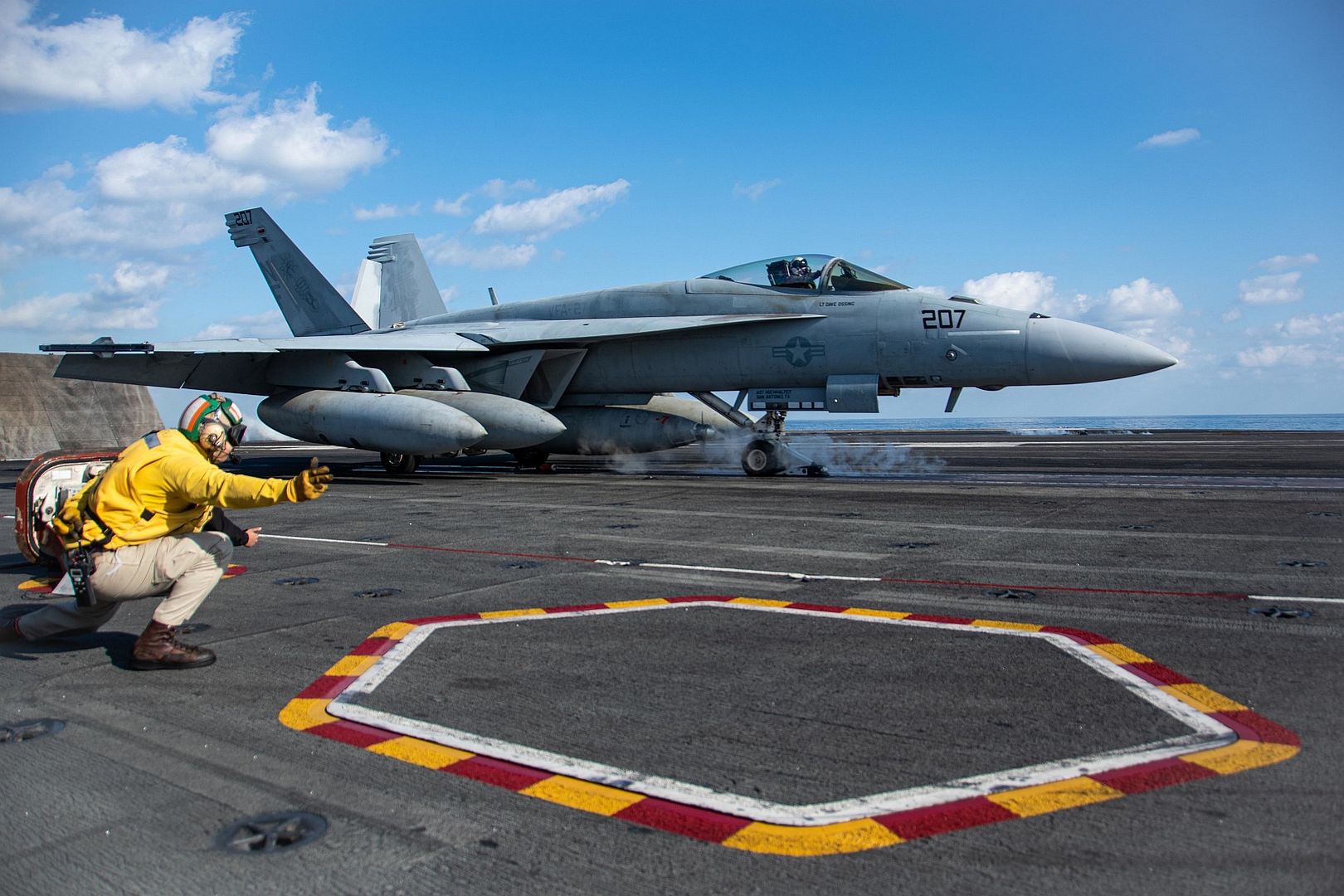
U.S. Air Force Lt. Col. Josh Plocinski, 13th Fighter Squadron fighter pilot, taxis to the runway in an F-16 Fighting Falcon fitted with a new active electronically scanned array (AESA) radar upgrade at Misawa Air Base, Japan, Dec. 5, 2022. The 35th Fighter Wing is the second unit in the Air Force to incorporate upgraded AESA technology into the F-16. The new upgrade increases the wing’s operational capabilities and directly supports Indo-Pacific Command’s mission to maintain regional stability and support a free and open Indo-Pacific region (U.S. Air Force photo by Airman 1st Class William Rodriguez)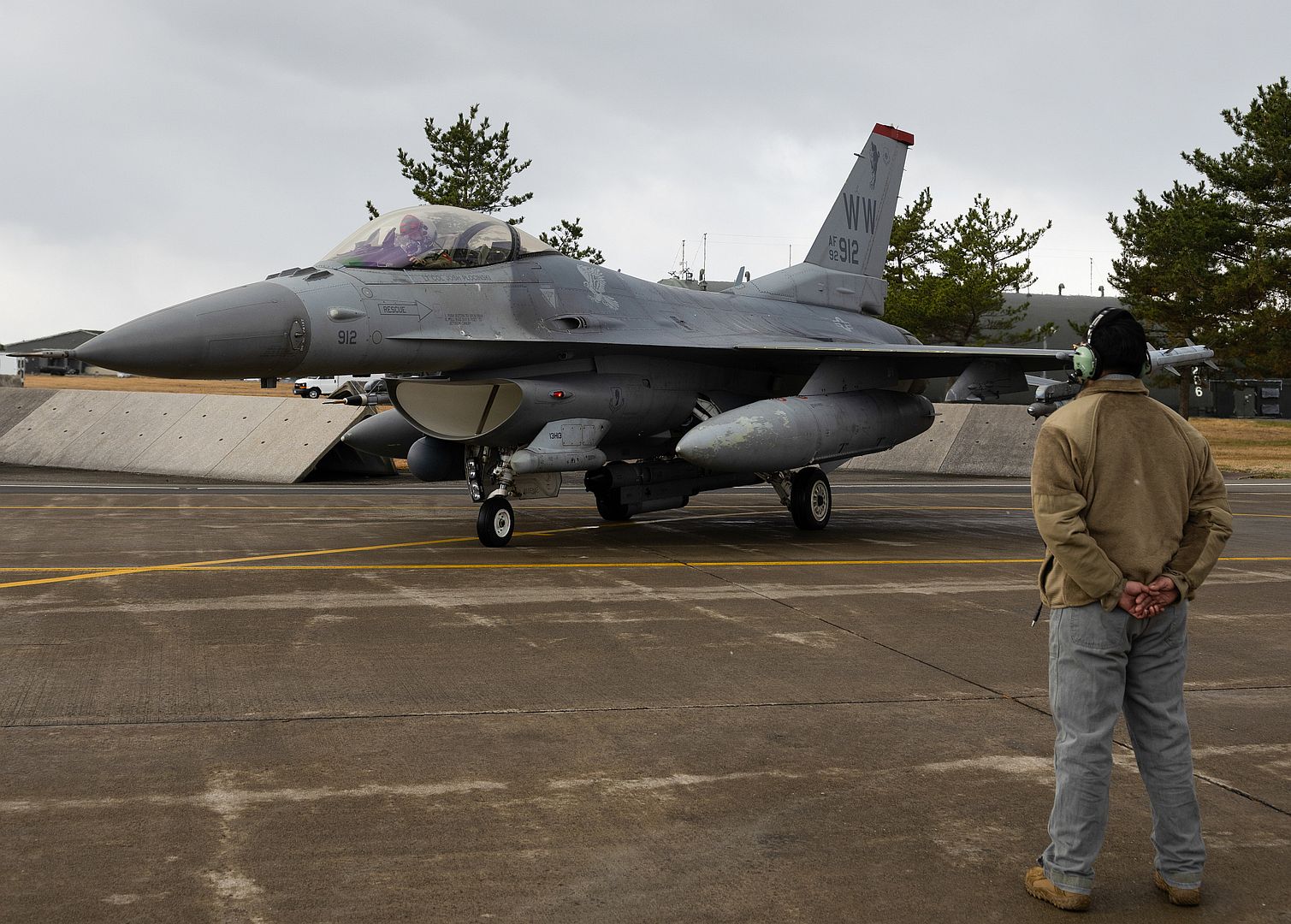
09 12 22.
Today, the British prime minister announced a new international coalition to develop the next generation of combat aircraft.
The UK, Italy and Japan will join forces to develop the fighter jets of the future. By combining the expertise of our defence industries, the new international grouping aims to deliver a step change in our air power and defence capability.
The programme is expected to create high-skilled jobs in the UK and partner countries over the next decade and beyond.
-
 Main AdminF-22 Raptor Demo Team announces new pilot for 2023 air show season .
Main AdminF-22 Raptor Demo Team announces new pilot for 2023 air show season .
U.S. Air Force Capt. Samuel “RaZZ” Larson, F-22 Raptor Demonstration Team commander and pilot, performs an aerial maneuver during the team’s certification flight at Joint Base Langley-Eustis, Virginia, Dec. 9, 2022. In order to perform at aerial shows around the world, the F-22 Demo Team has to be certified by Gen. Mark Kelly, commander of Air Combat Command, to ensure safety and performance standards are adhered to. (U.S. Air Force photo by Staff Sgt. Marcus M. Bullock)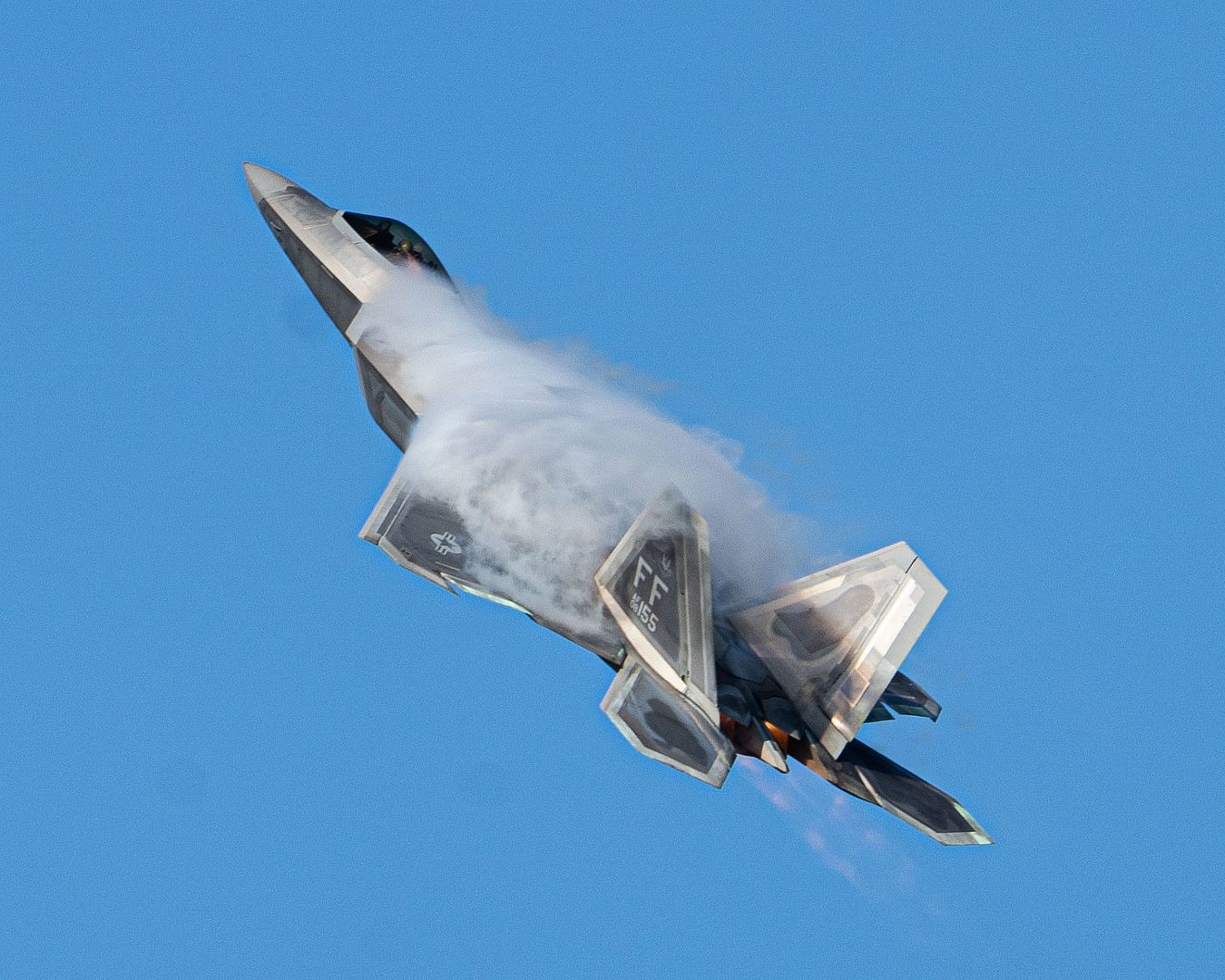
(Right to Left) A Japan Air Self-Defense Force C-130H Hercules assigned to the 401st Tactical Airlift Squadron, Royal Australian Air Force C-130J Super Hercules assigned to the 37 Squadron, Republic of Korea Air Force C-130H Hercules assigned to the 251st Tactical Air Support Squadron, Royal New Zealand Air Force C-130H Hercules assigned to the 40 squadron, and U.S. Air Force C-130J Super Hercules assigned to the 36th Expeditionary Airlift Squadron sit on the flightline at Andersen Air Force Base, Guam, Dec. 10, 2022, during Operation Christmas Drop 2022. JASDF, RAAF, ROKAF, RNZAF, and USAF C-130J crewmembers delivered 209 bundles with humanitarian aid totaling more than 71,000 pounds of cargo to 22,000 remote Micronesian islanders. (U.S. Air Force photo by Yasuo Osakabe)
ADRIATIC SEA (Dec. 10, 2022) An F/A-18E Super Hornet aircraft, assigned to Strike Fighter Squadron (VFA) 136, takes off from the flight deck of the Nimitz Class aircraft carrier USS George H.W. Bush (CVN 77) during flight operations. Dec.10, 2022. Carrier Air Wing (CVW) 7 is the offensive air and strike component of CSG-10 and the George H.W. Bush CSG. The squadrons of CVW-7 are Strike Fighter Squadron (VFA) 143, VFA-103, VFA-86, VFA-136, Electronic Attack Squadron (VAQ) 140, Carrier Airborne Early Warning Squadron (VAW) 121, HSC-5, and Helicopter Maritime Strike Squadron (HSM) 46. The George H.W. Bush Carrier Strike Group is on a scheduled deployment in the U.S. Naval Forces Europe area of operations, employed by U.S. Sixth Fleet to defend U.S., allied and partner interests. (U.S. Navy photo by Mass Communication Specialist 3rd Class Chandler Ludke)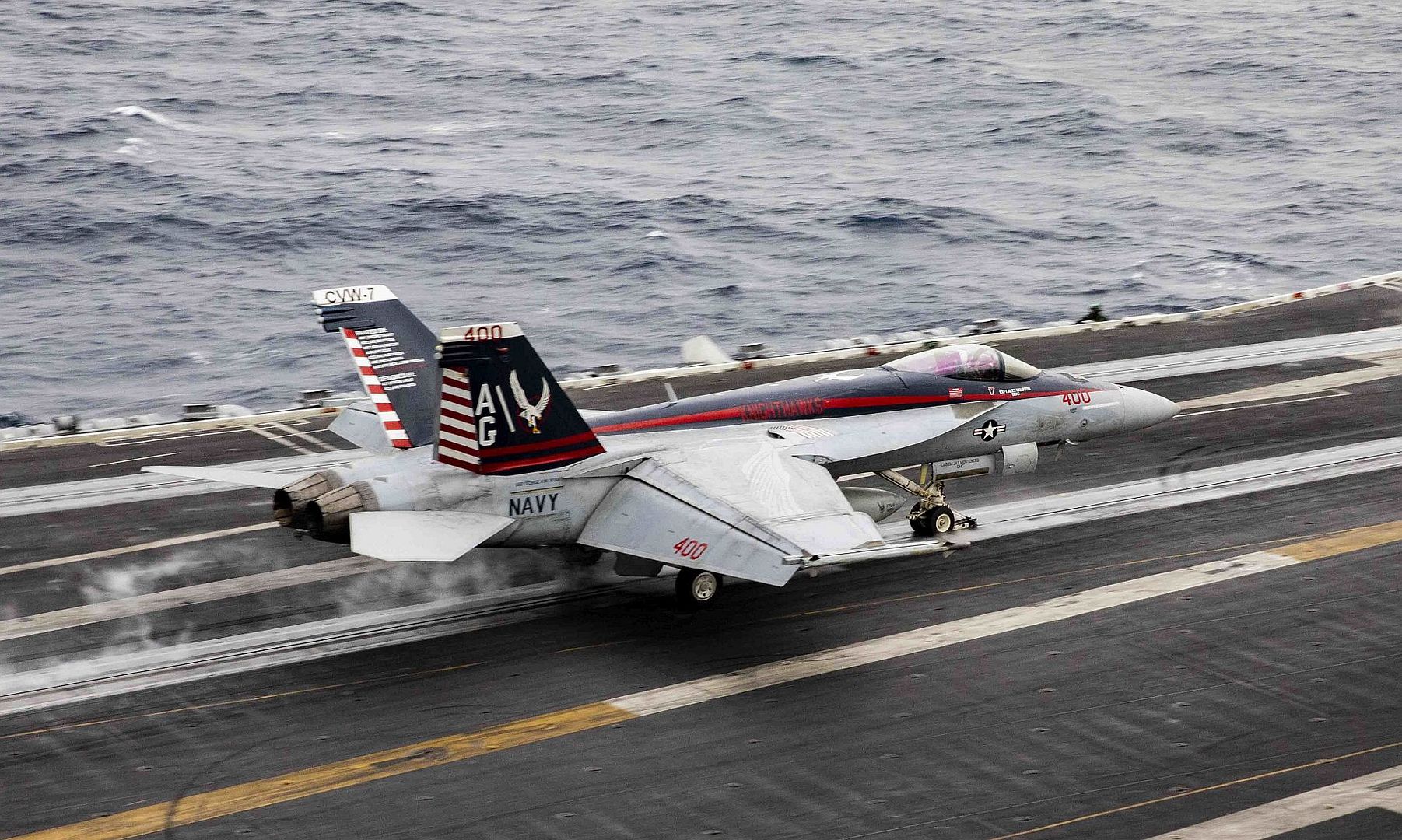
ADRIATIC SEA (Dec. 10, 2022) An F/A-18F Super Hornet aircraft, assigned to Strike Fighter Squadron (VFA) 103, takes off from the flight deck of the Nimitz Class aircraft carrier USS George H.W. Bush (CVN 77) during flight operations. Dec. 10, 2022. Carrier Air Wing (CVW) 7 is the offensive air and strike component of CSG-10 and the George H.W. Bush CSG. The squadrons of CVW-7 are Strike Fighter Squadron (VFA) 143, VFA-103, VFA-86, VFA-136, Electronic Attack Squadron (VAQ) 140, Carrier Airborne Early Warning Squadron (VAW) 121, HSC-5, and Helicopter Maritime Strike Squadron (HSM) 46. The George H.W. Bush Carrier Strike Group is on a scheduled deployment in the U.S. Naval Forces Europe area of operations, employed by U.S. Sixth Fleet to defend U.S., allied and partner interests. (U.S. Navy photo by Mass Communication Specialist 3rd Class Chandler Ludke)
PACIFIC OCEAN (DEC. 09, 2022) An F/A-18E Super Hornet, assigned to Strike Fighter Squadron (VFA) 151, performs an arrested landing on the Nimitz-class aircraft carrier USS Abraham Lincoln (CVN 72). Abraham Lincoln is currently underway conducting routine operations in the U.S. 3rd Fleet. (U.S. Navy photo by Mass Communication Specialist 2nd Class Louis Lea)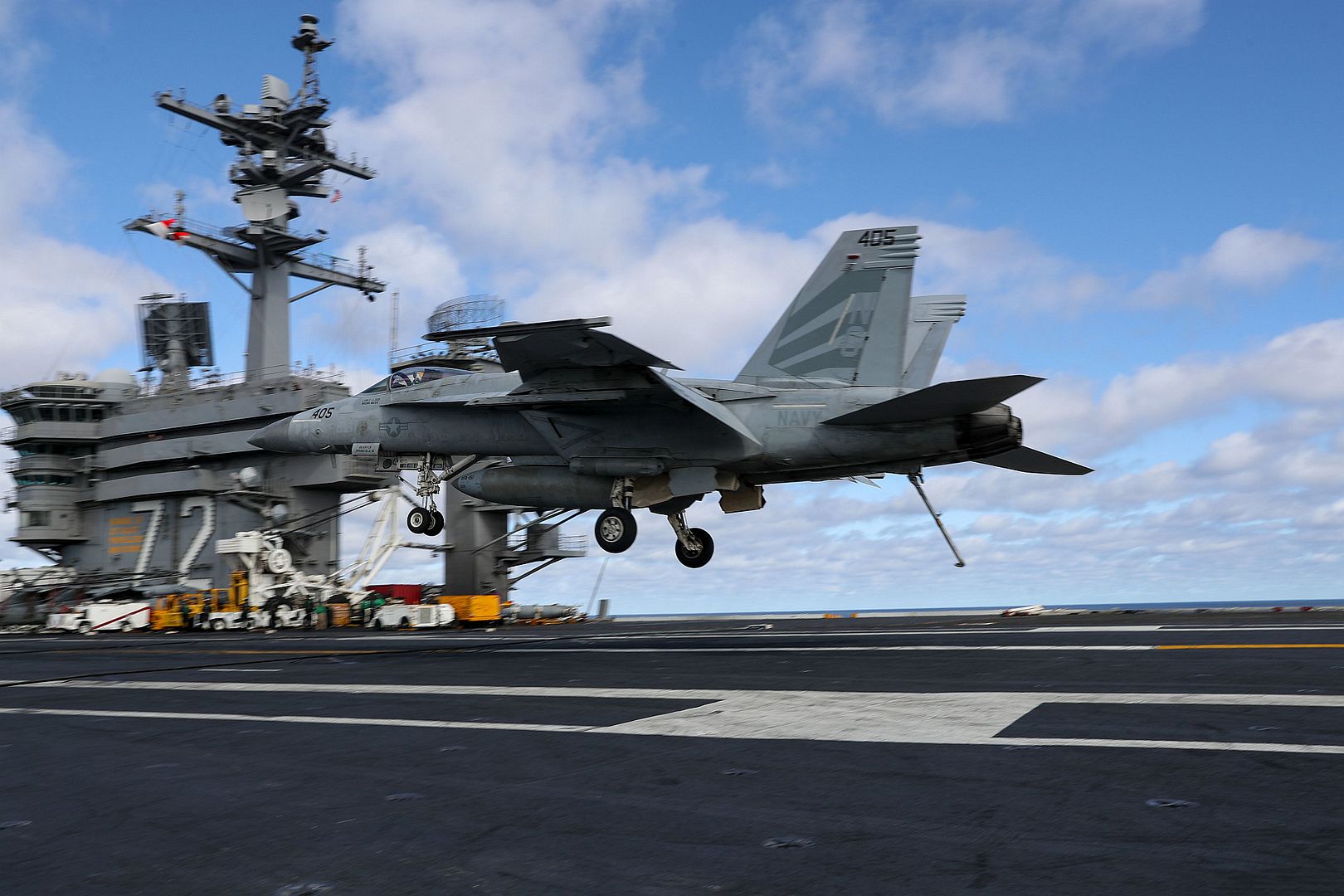
BERLIN, Dec. 12, 2022 – Boeing [NYSE: BA] has awarded Lufthansa Technik a contract for sustainment services within its support of the Royal New Zealand Air Force’s (RNZAF) future fleet of four P-8A aircraft that will leverage commercial capabilities to improve readiness rates.
The contract is for provision of Lufthansa Technik’s Total Component Support (TCS), a comprehensive component services program for the 737 covering more than four hundred commercial common parts included in the configuration of the P-8A, a military derivative of the popular airliner. Leveraging the 737 commercial market in support of P-8A international customers will allow smaller fleets easier access to necessary global supply chain inventory from the more than four thousand 737 aircraft operating today.
“Our collaboration with Lufthansa Technik is a strong example of how industry can work together to solve customer challenges and maintain high readiness rates,” said Torbjorn (Turbo) Sjogren, Boeing vice president and general manager, Government Services. “Our goal is to expand service offerings from a strategic German industry partner for additional P-8A customers to benefit.”
The TCS program provided by Lufthansa Technik allows the RNZAF to reduce investment in commercial common parts and improve aircraft readiness through access to the German company’s maintenance, repair and overhaul (MRO) global supply chain.
Boeing and Lufthansa Technik signed a strategic Memorandum of Understanding (MOU) in 2021 to support Germany’s P-8A Poseidon fleet. The MOU expanded to a three-party agreement with ESG Elektroniksystem- und Logistik-GmbH in 2022.
“Lufthansa Technik is a longstanding partner with a long history of supporting Boeing aircraft around the world,” said Michael Haidinger, president of Boeing in Germany. “This new contract is a clear demonstration of our commitment to German industry and how we partner across the Atlantic and globally, shaping meaningful partnerships that ensure continued economic and industrial growth in Germany.”
Under Boeing’s Performance-Based Logistics (PBL) program, Lufthansa Technik also provides hardware support to the Italian fleet of Boeing KC-767A tankers and has facilitated outstanding aircraft availability for the Italian Air Force.
“As a renowned expert for Special Mission aircraft and a leading maintenance, repair and overhaul provider with decades of experience in servicing commercial Boeing 737s, we are delighted to soon start servicing New Zealand’s Poseidon fleet. The strong partnership with Boeing enables us to offer the best possible service level over the entire life cycle of the aircraft,” said Michael von Puttkamer, vice president special aircraft services at Lufthansa Technik. “We are very much looking forward to further cooperation with our partners in Germany and beyond.”
In July 2018, the government of New Zealand announced the purchase of four P-8A Poseidon aircraft to replace their aging fleet of P-3K2 maritime patrol aircraft. The first P-8A to New Zealand was delivered December 2022, with three remaining aircraft to be delivered in 2023.
Deployed around the world with 155 aircraft delivered or in service, and more than 450,000 collective, mishap free flight hours, the P-8A is vital for global anti-submarine warfare, intelligence, surveillance and reconnaissance and search-and-rescue operations.
About Boeing in Germany
Boeing has been a committed partner to the German aerospace industry for many decades. The company employs approximately 1 000 direct employees at its facilities in Germany and supports many thousands of other highly skilled jobs throughout the country with an established network of partners and suppliers. Boeing Germany actively contributes to the research and development of digital and sustainable technologies for the future of aviation. More about Boeing in Germany: www.Boeing.de or @BoeingDACH on Twitter.
About Lufthansa Technik
With some 35 subsidiaries and affiliates, the Lufthansa Technik Group is one of the leading providers of technical aircraft services in the world. Certified internationally as maintenance, production and design organization, the company has a workforce of more than 20,000 employees. Lufthansa Technik’s portfolio covers the entire range of services for commercial and VIP/special mission aircraft, engines, components and landing gear in the areas of digital fleet support, maintenance, repair, overhaul, modification, completion and conversion as well as the manufacture of innovative cabin products.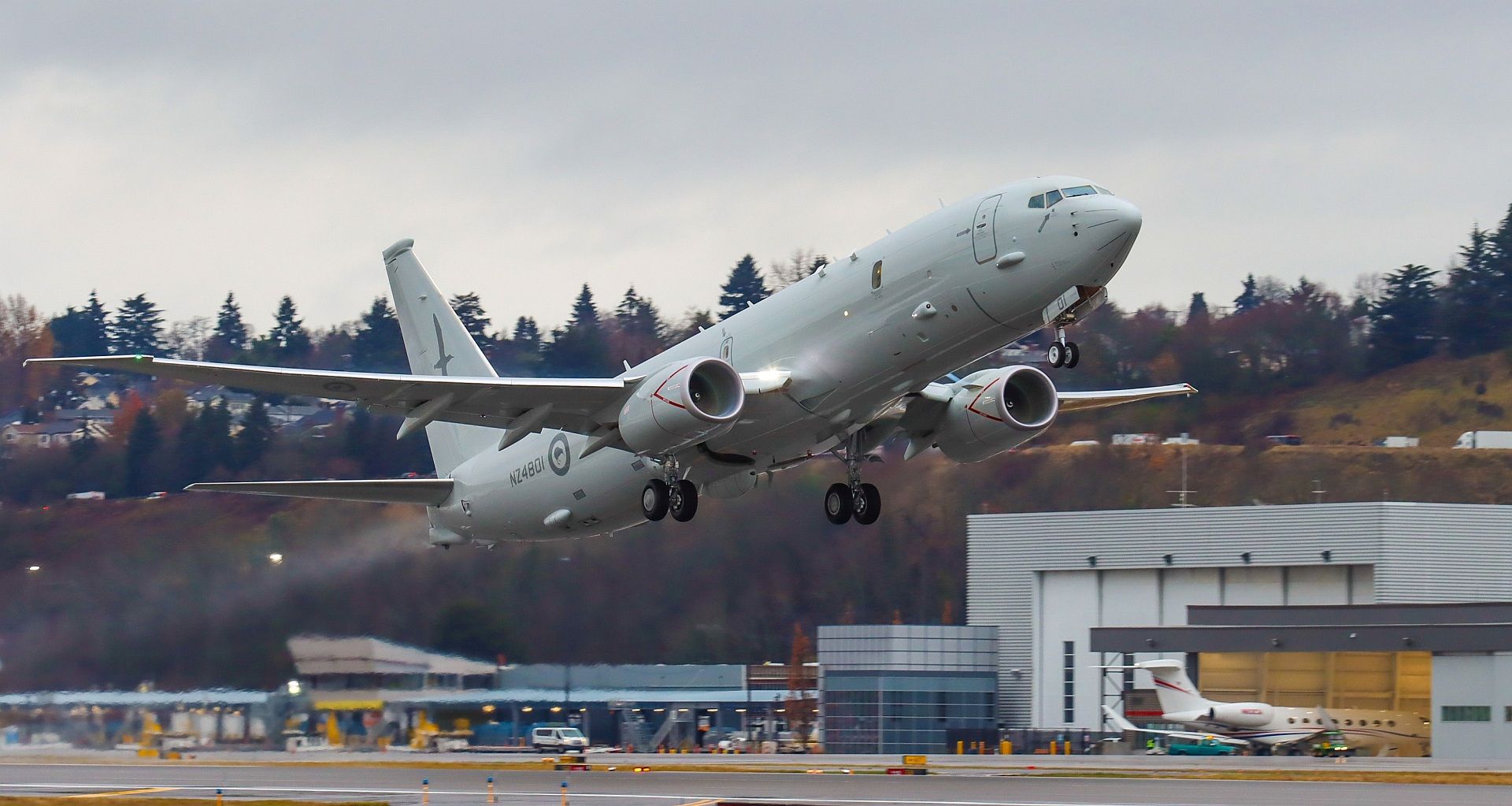
Madrid, 12 December 2022 – Germany’s Bundeswehr, Airbus, the German Aerospace Center DLR, and German companies SFL and Geradts have jointly carried out the world’s first successful launch and operation of a Remote Carrier flight test demonstrator from a flying A400M. Multiplying the force and extending the range of unmanned systems will be one of the future roles of Airbus’ military transport aircraft in the Future Combat Air System (FCAS).
“The excellent collaboration with our German customer and partners on the A400M UAV Launcher campaign is further evidence of how the development of FCAS will take innovation and technologies to the next level,” said Airbus Defence and Space CEO Michael Schoellhorn. “FCAS as a system of systems is starting to take shape now.” The device for launching Remote Carriers from a flying A400M was developed in just six months. For the test flight, it was loaded onto the ramp of a Bundeswehr A400M, from which the Remote Carrier demonstrator, a modified Airbus Do-DT25 drone, was launched. After the release, the Do-DT25’s engines were started and it continued in powered flight mode. The crew on board the A400M then handed over control to an operator on the ground, who safely commanded and landed the drone.
Remote Carriers will be an important component of FCAS. They will fly in close cooperation with manned aircraft and support pilots in their tasks and missions. Military transport aircraft such as the A400M will play an important role: as motherships, they will bring the Remote Carriers as close as possible to their areas of operation before releasing up to 50 small or up to 12 heavy Remote Carriers. These will then join manned aircraft, operating with a high degree of automation although always under a pilot’s control.
Getting the A400M UAV Launcher ready for testing
To get the A400M UAV Launcher ready for the test campaign, Airbus, the Bundeswehr Technical Centre for Aircraft and Aeronautical Equipment (WTD 61), DLR, SFL and Geradts applied new ways of working such as rapid prototyping and a joint flight testing approach. This enabled the multidisciplinary team to develop and integrate the system, bringing it into the needed systems-of-systems context in a very short time, ready for flight testing. Throughout the development, this flexible industrial setup and new collaborative ways of working were supported by the German procurement office, BAAINBw.
-
 Main AdminA U.S. Marine Corps F/A-18C Hornet with Marine Fighter Attack Squadron 323, Marine Aircraft Group (MAG) 11, 3rd Marine Aircraft Wing (MAW), prepares to takeoff from Marine Corps Air Station Miramar, California to execute a maritime strike during Exercise Steel Knight on Dec. 12, 2022. MAG-11 utilizes fourth and fifth generation strike fighters to conduct sea denial operations in a contested maritime environment. Exercise Steel Knight 23 provides 3rd MAW an opportunity to refine Wing-level warfighting in support of I Marine Expeditionary Force and fleet maneuver. (U.S. Marine Corps photos by Cpl. Sarah Marshall)
Main AdminA U.S. Marine Corps F/A-18C Hornet with Marine Fighter Attack Squadron 323, Marine Aircraft Group (MAG) 11, 3rd Marine Aircraft Wing (MAW), prepares to takeoff from Marine Corps Air Station Miramar, California to execute a maritime strike during Exercise Steel Knight on Dec. 12, 2022. MAG-11 utilizes fourth and fifth generation strike fighters to conduct sea denial operations in a contested maritime environment. Exercise Steel Knight 23 provides 3rd MAW an opportunity to refine Wing-level warfighting in support of I Marine Expeditionary Force and fleet maneuver. (U.S. Marine Corps photos by Cpl. Sarah Marshall)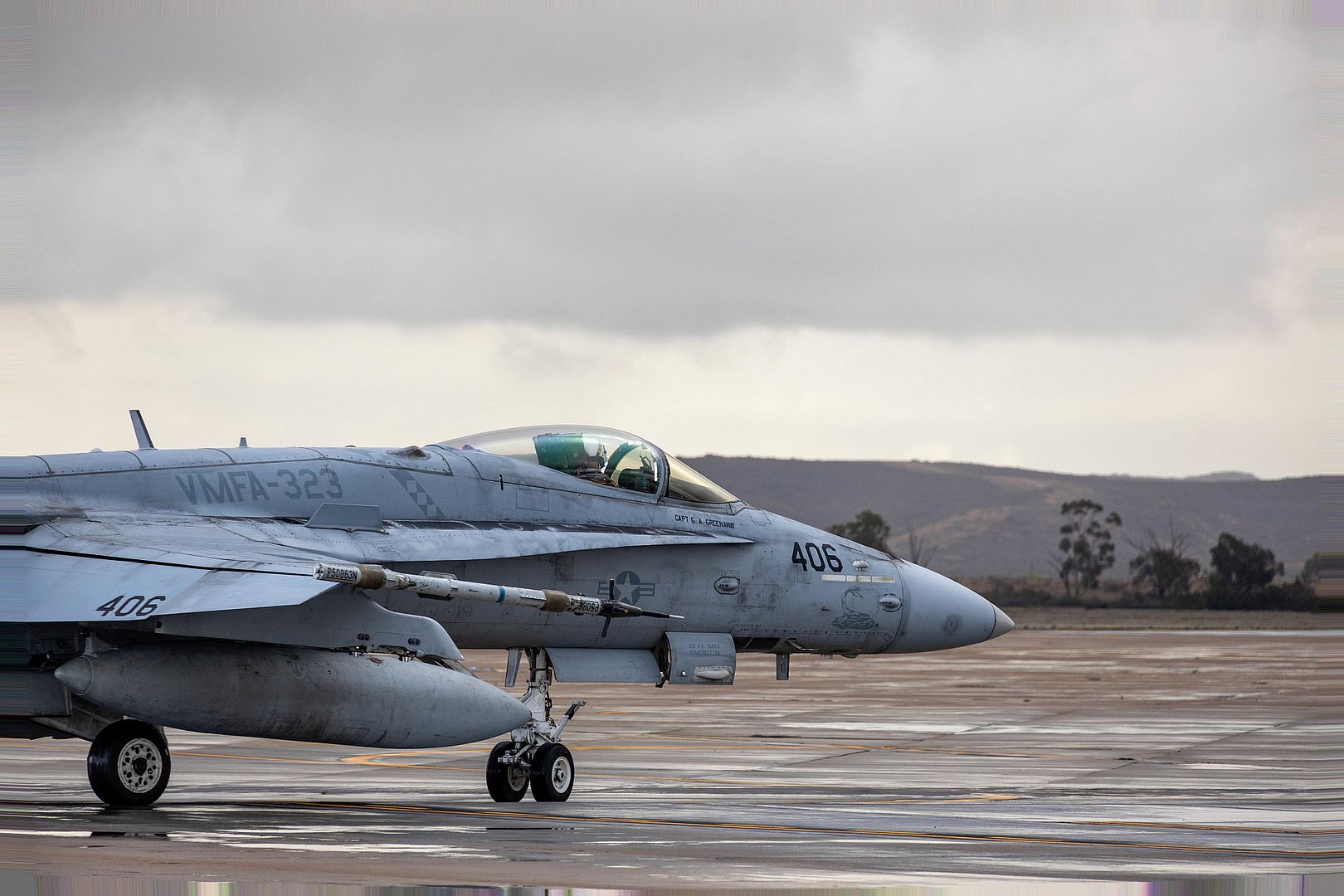
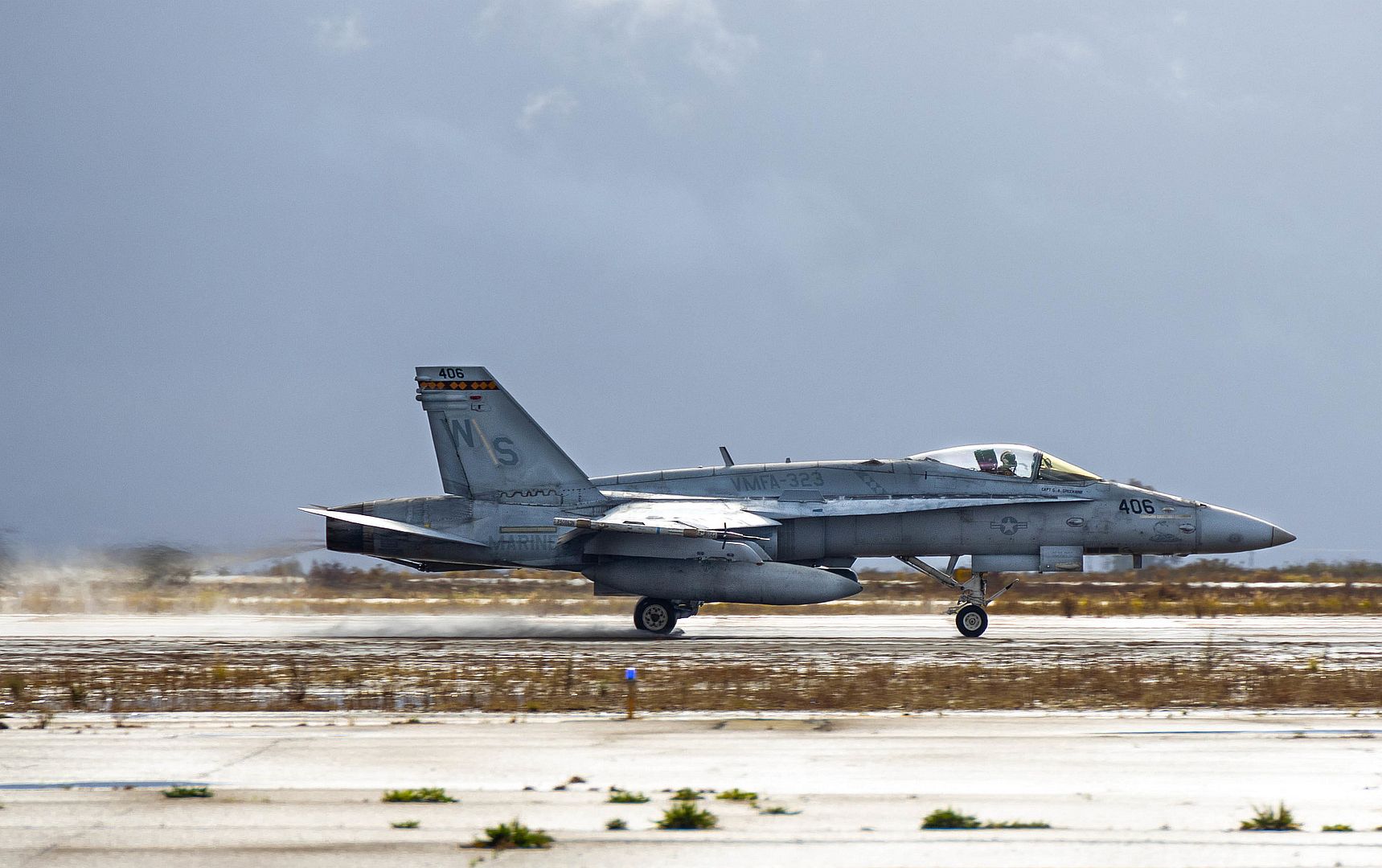
EASTERN PACIFIC OCEAN (Dec. 11, 2022) Ordnance Marines from Marine Light Attack Helicopter Squadron 369, Marine Aircraft Group 39, 3rd Marine Aircraft Wing, arm a training missile on an AH-1Z Viper helicopter while on the flight deck of Independence-variant littoral combat ship USS Montgomery (LCS during an integrated, expeditionary maritime fires Steel Knight 23 event, Dec. 11. Steel Knight is an annual combined-arms live-fire exercise led by the 1st Marine Division that ensures forces are optimized for naval expeditionary warfare in contested spaces and is purpose-built to facilitate future operations afloat and ashore. (U.S. Navy Courtesy Asset)
during an integrated, expeditionary maritime fires Steel Knight 23 event, Dec. 11. Steel Knight is an annual combined-arms live-fire exercise led by the 1st Marine Division that ensures forces are optimized for naval expeditionary warfare in contested spaces and is purpose-built to facilitate future operations afloat and ashore. (U.S. Navy Courtesy Asset) 
A Royal Australian Air Force E-7A Wedgetail, operated by No. 2 Squadron based at RAAF Base Williamtown, Australia, prepare for a training sortie December 7, 2022, at Joint Base Pearl Harbor-Hickam, Hawaii. Members of the RAAF relocated to Hawaii to participate in exercise PACIFIC EDGE 23. The Wedgetail is equipped with a high-powered radar, used to monitor the battle space and provide friendly forces with an advantage over their opponents. (U.S. Air National Guard photo by Staff Sgt. John Linzmeier)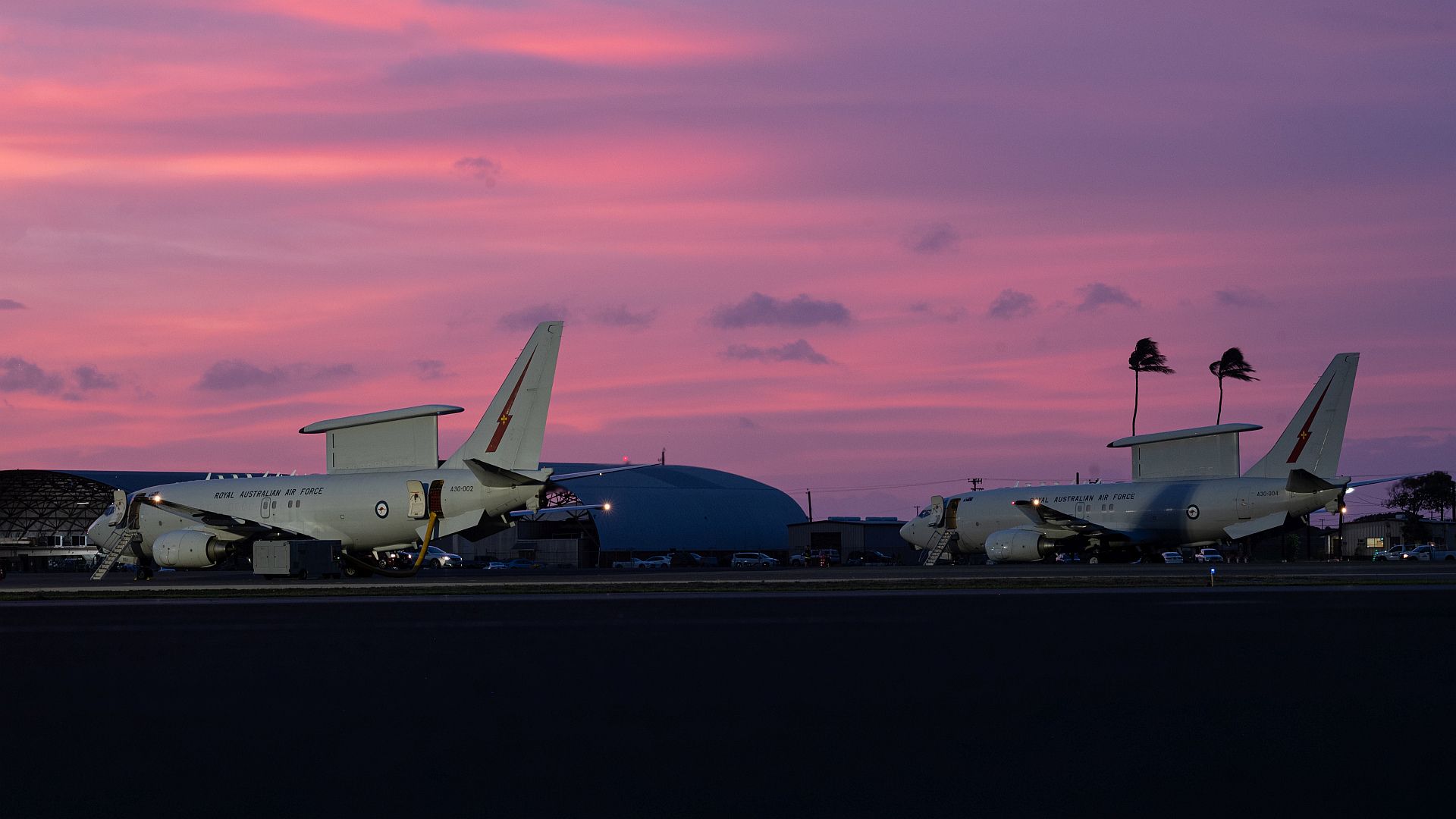
A U.S. Air Force F-35A Lightning II from the 65th Aggressor Squadron receives fuel from a KC-135 Stratotanker from the 203rd Air Refueling Squadron December 7, 2022, near the coast of Oahu, Hawaii. The training was held as part of exercise PACIFIC EDGE 23, held to enhance air-combat proficiencies through the integration of allied units and further the interoperability between the two countries’ aircraft. (U.S. Air National Guard photo by Staff Sgt. John Linzmeier)
An F-22 Raptor from the 199th Fighter Squadron approaches a 203rd Air Refueling Squadron Stratotanker for an in-air refueling December 7, 2022, near the coast of Oahu, Hawaii. The training was held as part of exercise PACIFIC EDGE 23, held to enhance air-combat proficiencies through the integration of allied units and further the interoperability between U.S. and bilateral aircraft units. Pilots from the 199th Fighter Squadron and the 19th Fighter Squadrons operate F-22s together under the Air National Guard-led active-associate construct to accomplish their total-force mission. (U.S. Air National Guard photo by Staff Sgt. John Linzmeier)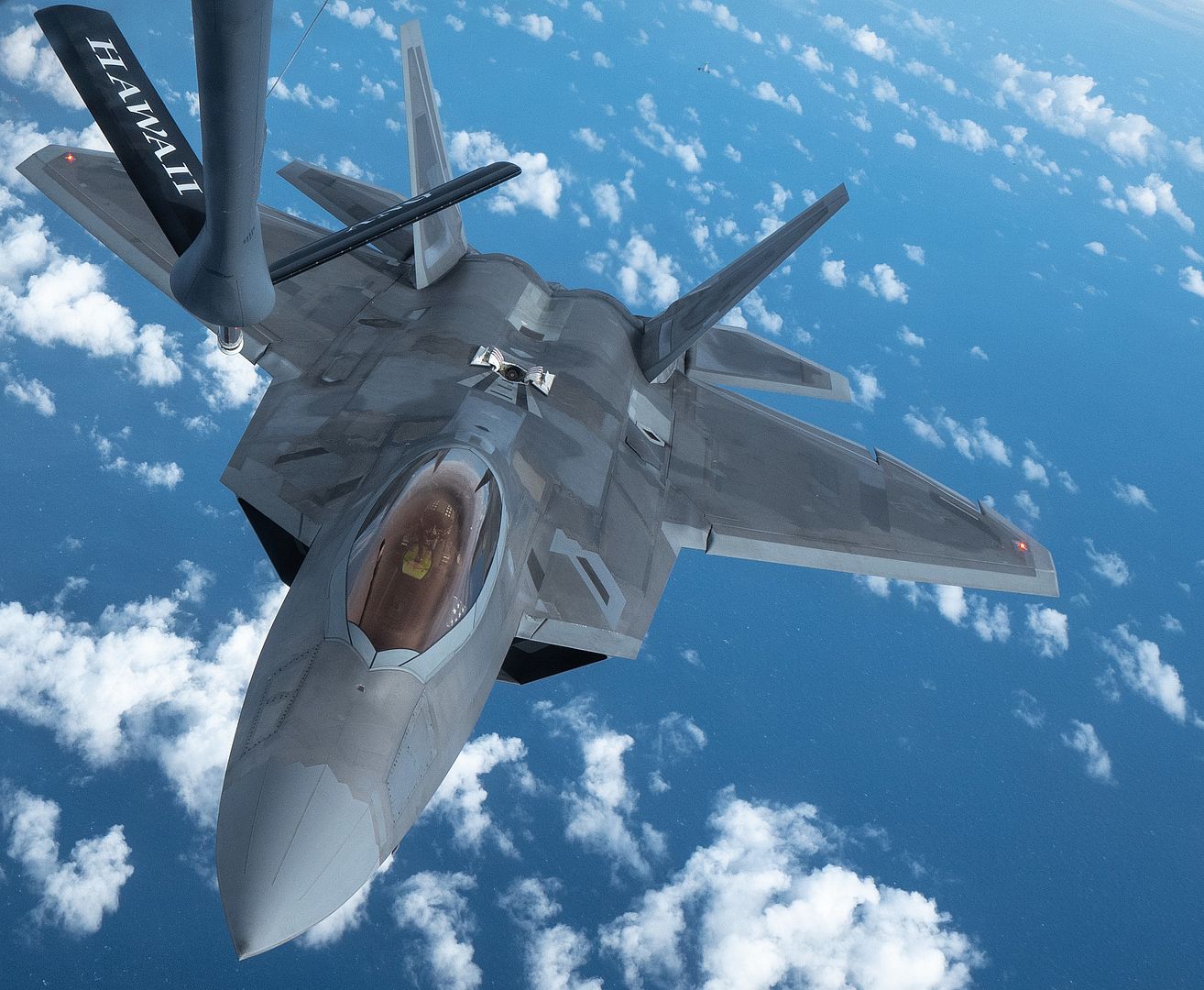
PACIFIC OCEAN (Dec. 10, 2022) An F/A-18F Super Hornet from the Mighty Shrikes of Strike Fighter Squadron (VFA) 94 prepares to launch off the flight deck of the aircraft carrier USS Nimitz (CVN 68). Nimitz is underway conducting routine operations. (U.S. Navy photo by Mass Communication Specialist 3rd Class Hannah Kantner)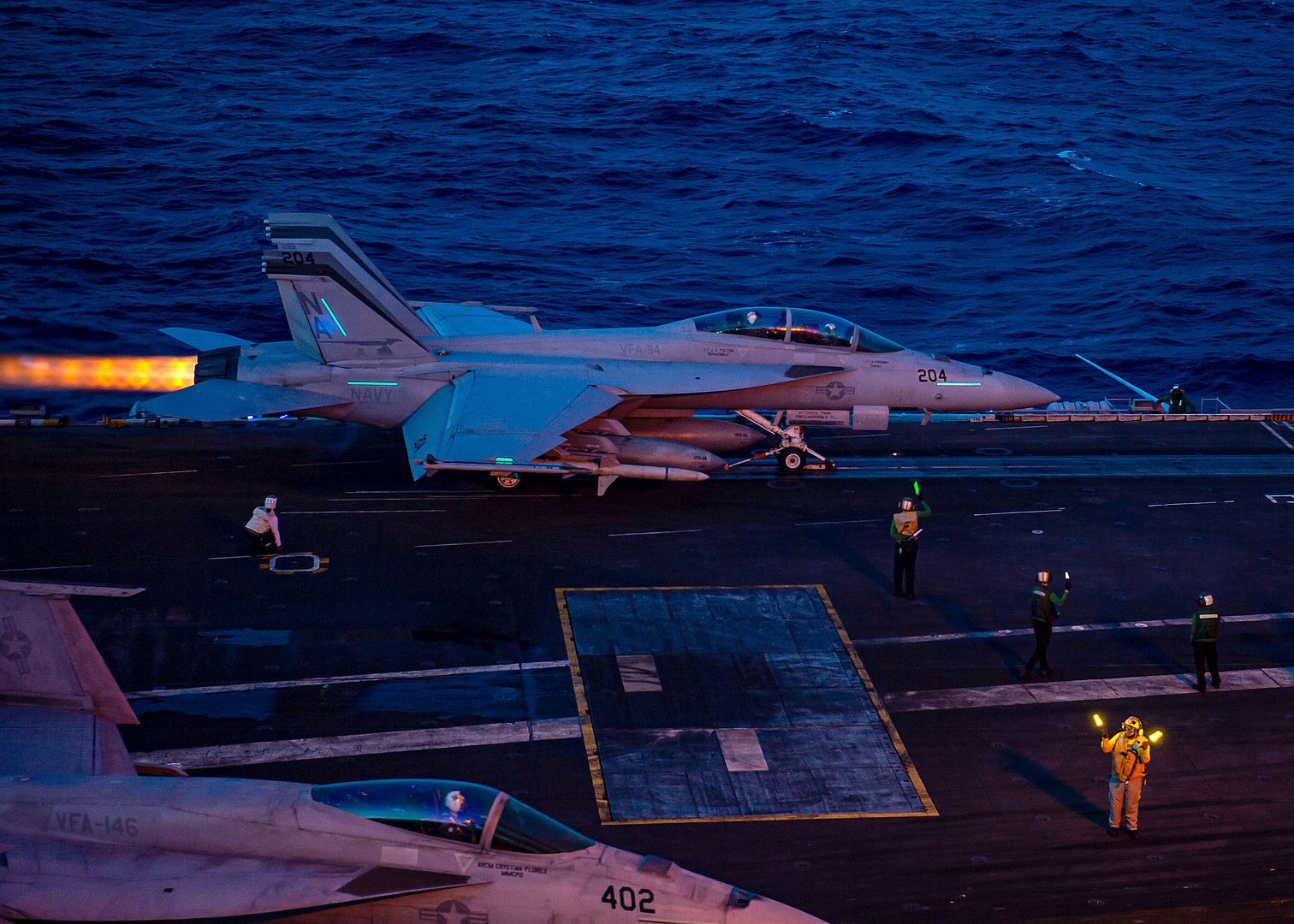
NORTH CHARLESTON, S.C., Dec. 13, 2022 /PRNewswire/ -- Boeing [NYSE:BA] and United Airlines [NASDAQ:UAL] today announced the carrier is investing in its future fleet with an order for 100 787 airplanes, with the option to purchase 100 more. The deal is the largest 787 Dreamliner order in Boeing history. United is also purchasing 100 737 MAX jets, exercising 44 existing options and placing 56 new orders.
"United emerged from the pandemic as the world's leading global airline and the flag carrier of the United States," said United CEO Scott Kirby. "This order further solidifies our lead and creates new opportunities for our customers, employees and shareholders by accelerating our plan to connect more people to more places around the globe and deliver the best experience in the sky."
The airline's current orders for Boeing jets have surpassed 530, including more than 430 737 MAX airplanes.
"With this investment in its future fleet, the 737 MAX and 787 will help United accelerate its fleet modernization and global growth strategy," said Stan Deal, president and CEO of Boeing Commercial Airplanes. "The Boeing team is honored by United's trust in our family of airplanes to connect people and transport cargo around the world for decades to come."
The 787 Dreamliner provides United with unparalleled efficiency and flexibility across its extensive network of domestic and international flights. The 787 also offers an impressive 25% improvement in fuel use compared with the airplanes it replaces, depending on the configuration.
The 737 MAX family is designed to offer enhanced reliability and improved fuel efficiency in the single-aisle market. The 737 MAX reduces fuel use and CO2 emissions by 20% compared to the airplanes it replaces, depending on the configuration.
As a leading global aerospace company, Boeing develops, manufactures and services commercial airplanes, defense products and space systems for customers in more than 150 countries. As a top U.S. exporter, the company leverages the talents of a global supplier base to advance economic opportunity, sustainability and community impact. Boeing's diverse team is committed to innovating for the future, leading with sustainability, and cultivating a culture based on the company's core values of safety, quality and integrity. Join our team and find your purpose at boeing.com/careers.
Post a reply
- Go to Next topic
- Go to Welcome
- Go to Introduce Yourself
- Go to General Discussion
- Go to Screenshots, Images and Videos
- Go to Off topic
- Go to Works in Progress
- Go to Skinning Tips / Tutorials
- Go to Skin Requests
- Go to IJAAF Library
- Go to Luftwaffe Library
- Go to RAF Library
- Go to USAAF / USN Library
- Go to Misc Library
- Go to The Ops Room
- Go to Made in Germany
- Go to Campaigns and Missions
- Go to Works in Progress
- Go to Juri's Air-Raid Shelter
- Go to Campaigns and Missions
- Go to Works in Progress
- Go to Skinpacks
- Go to External Projects Discussion
- Go to Books & Resources

